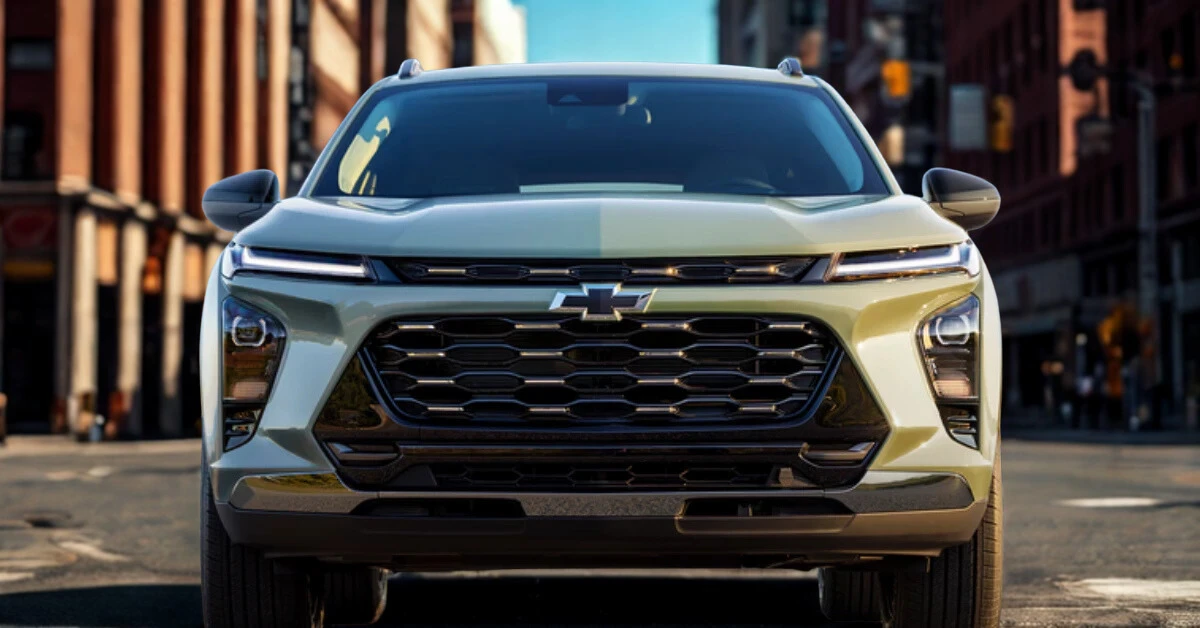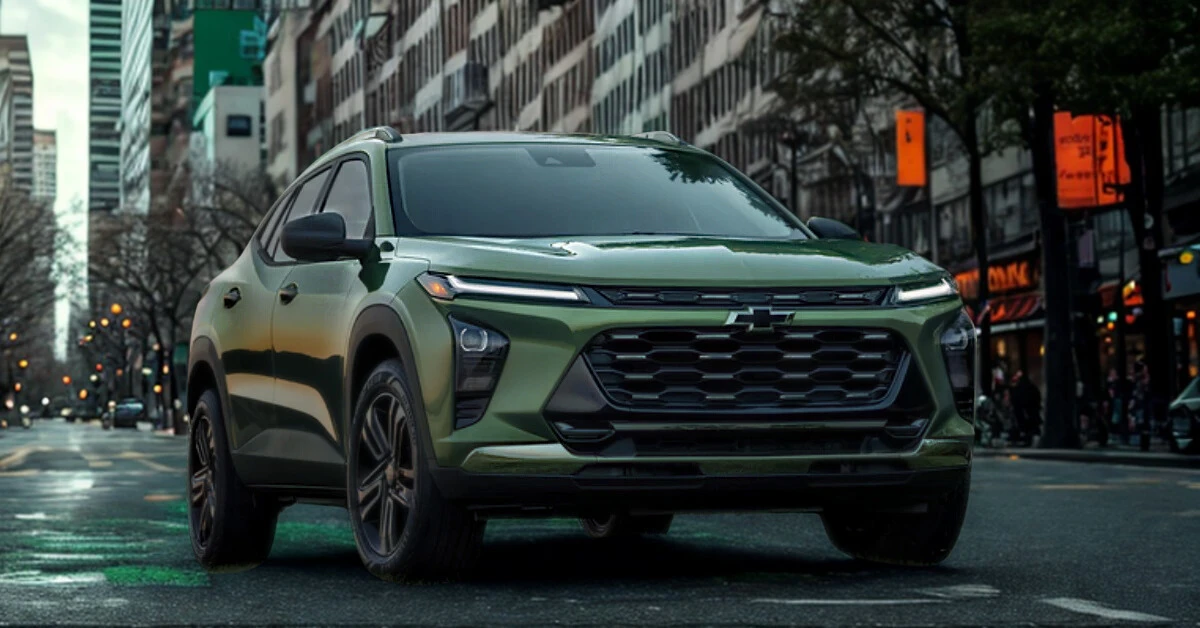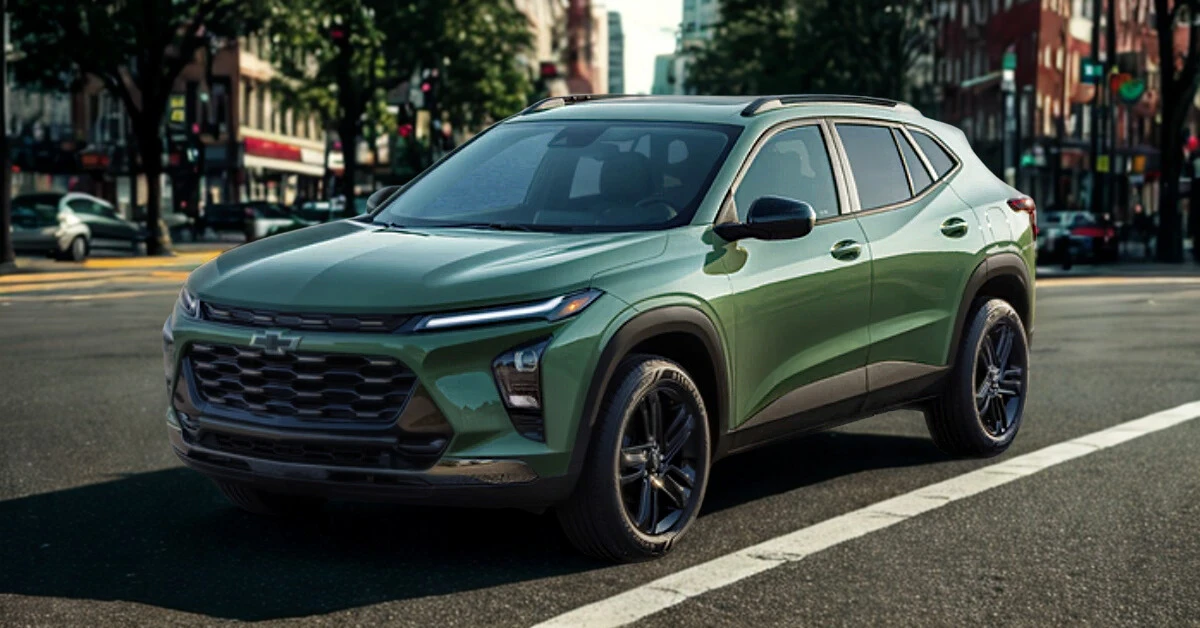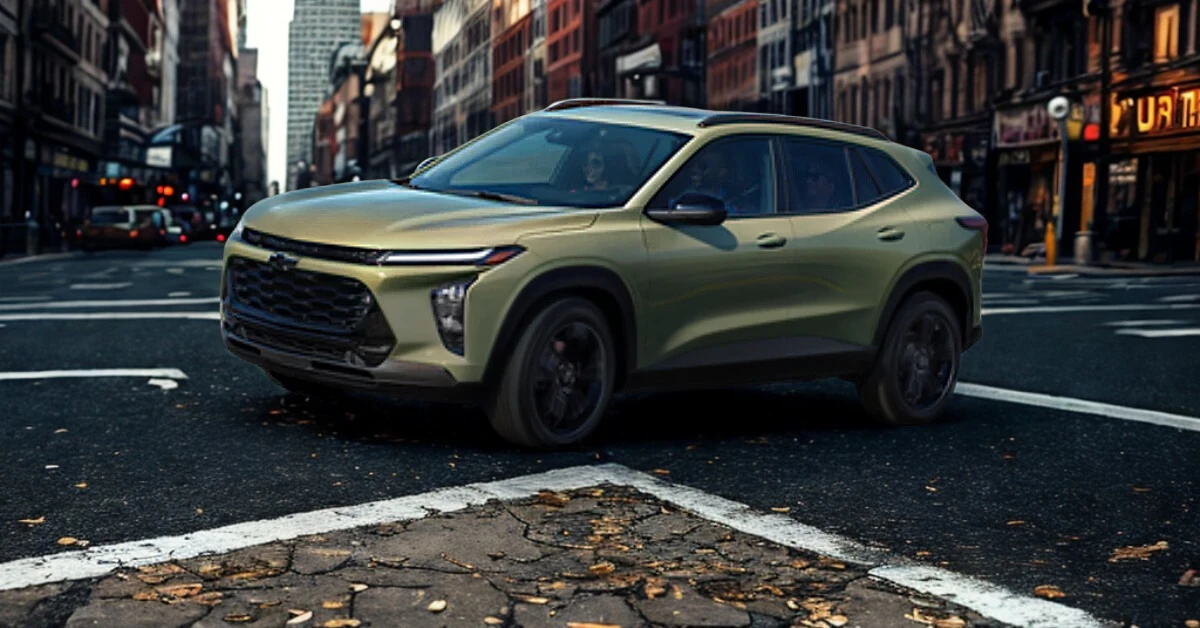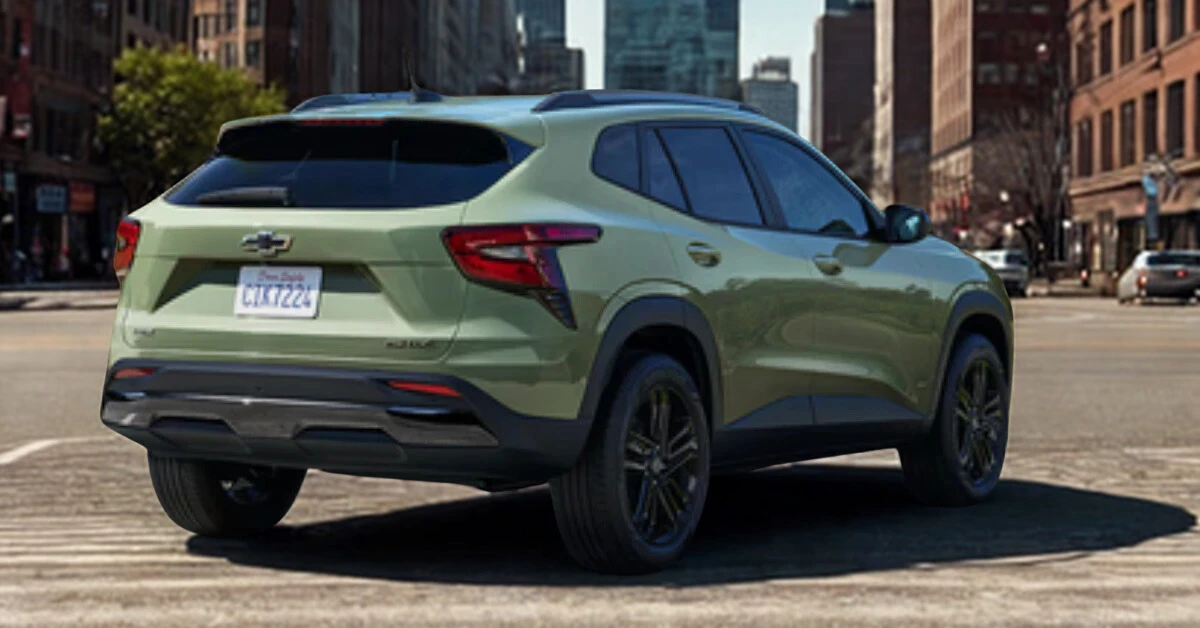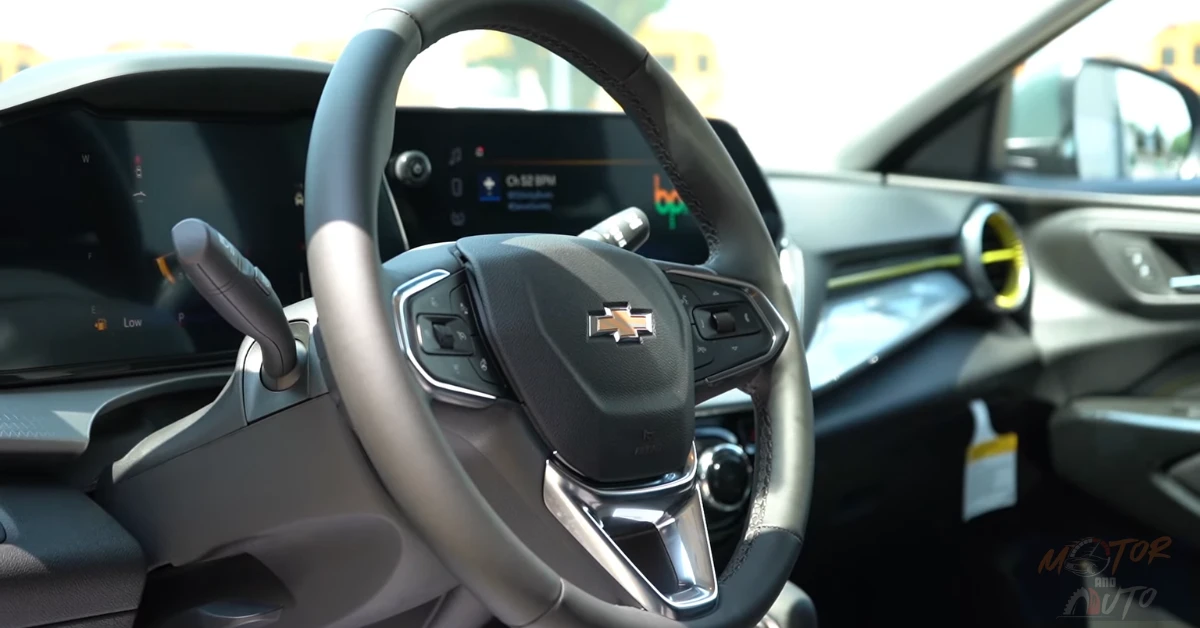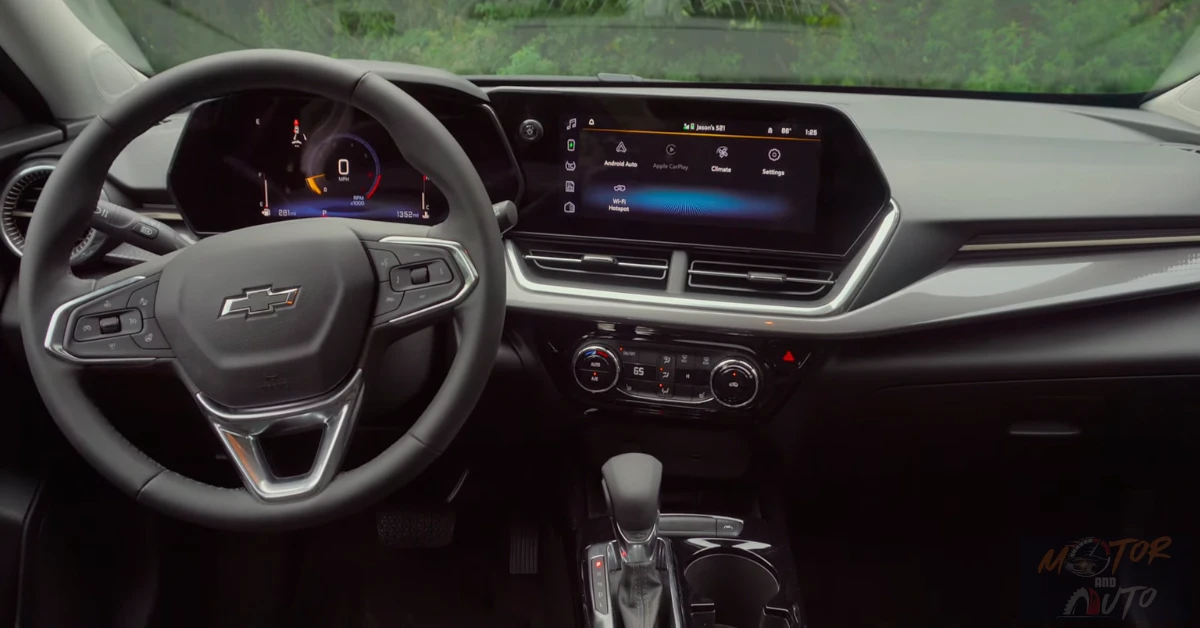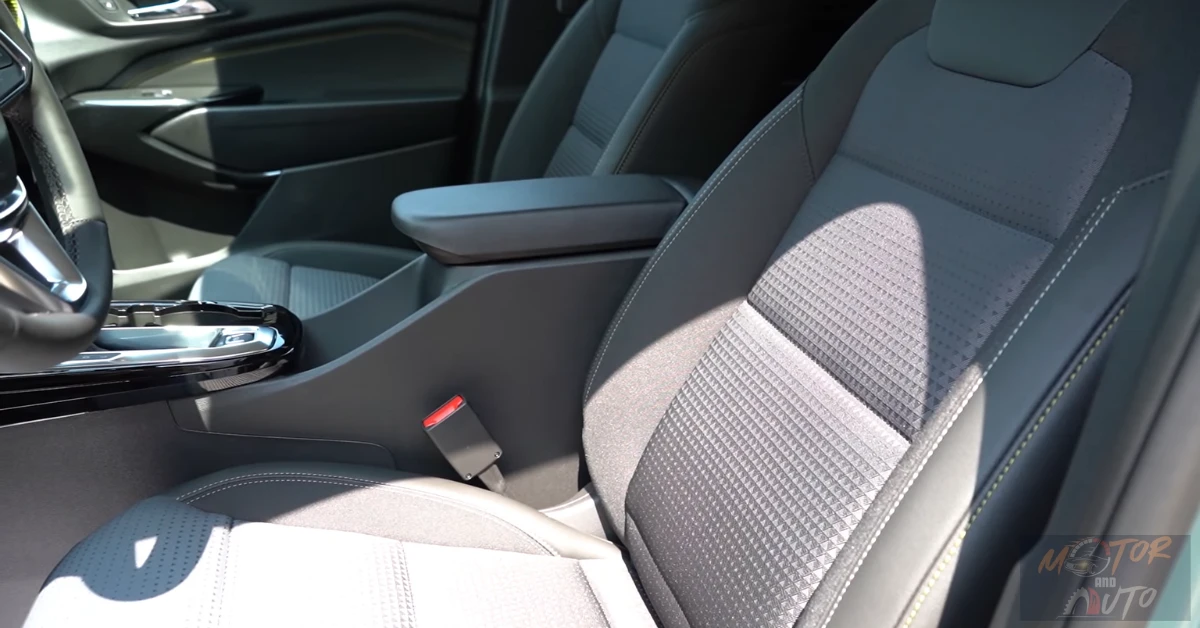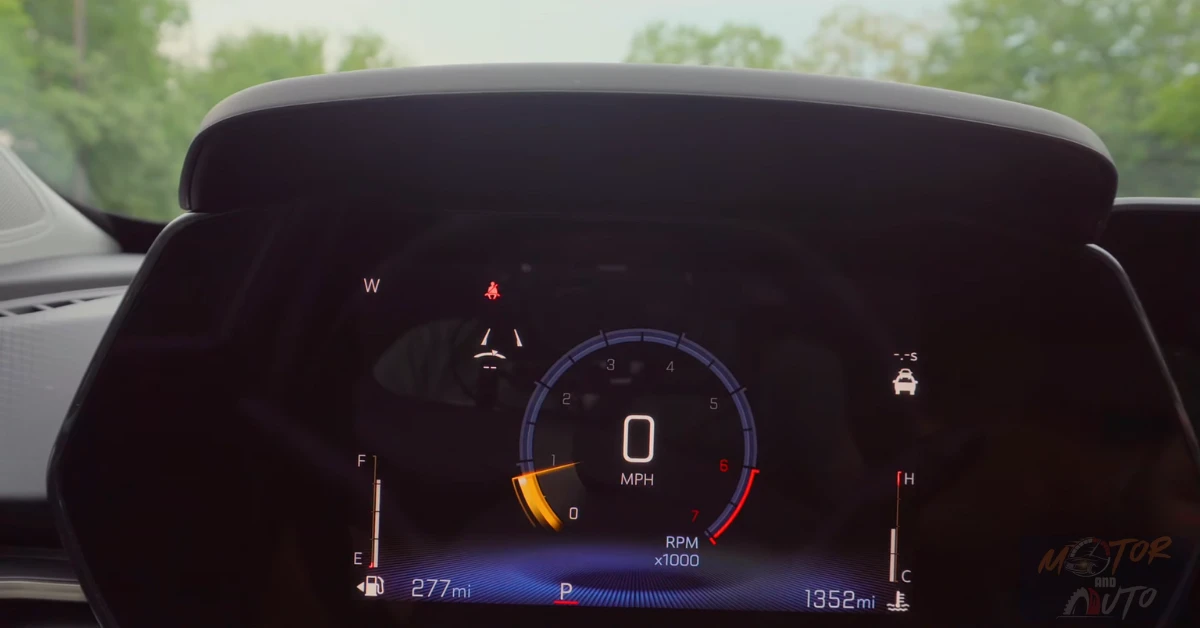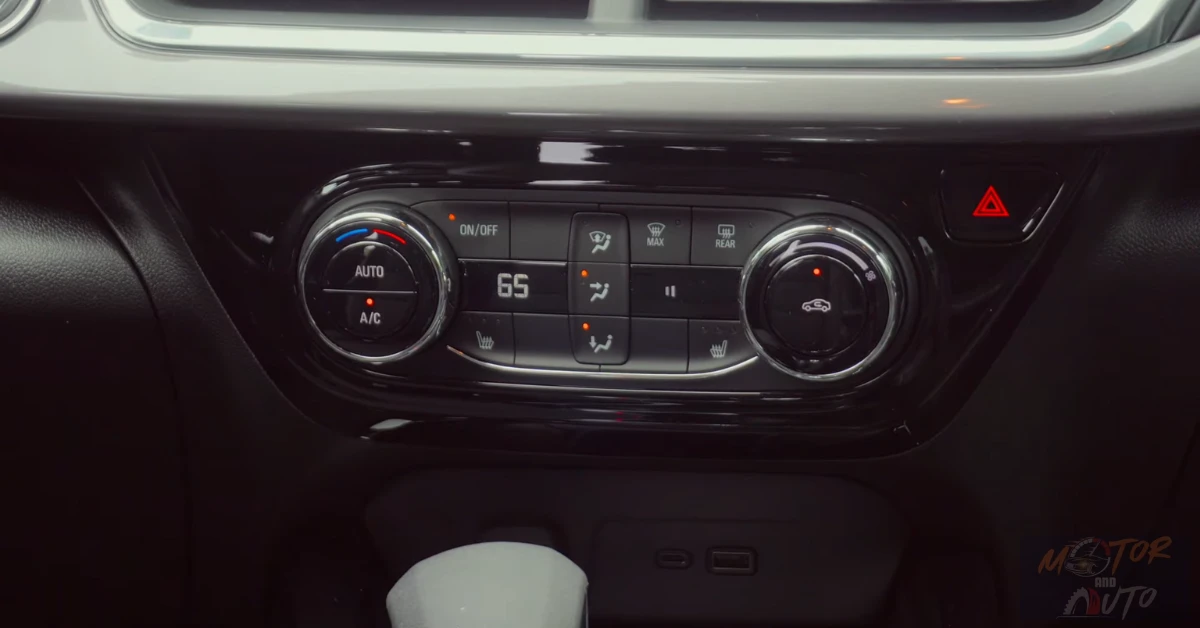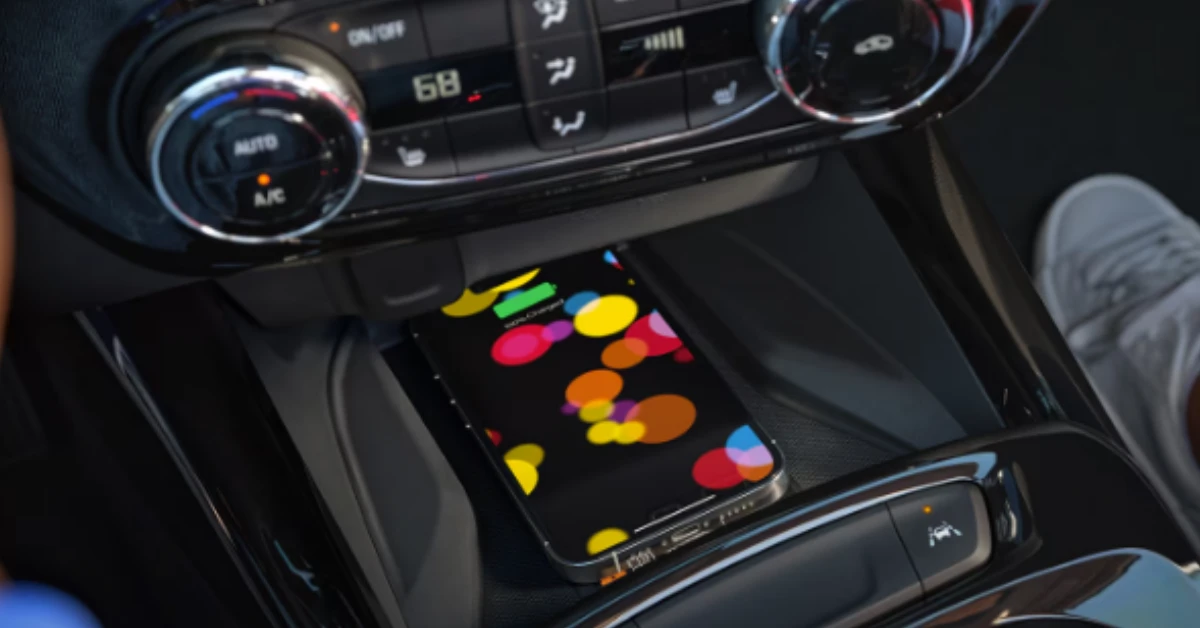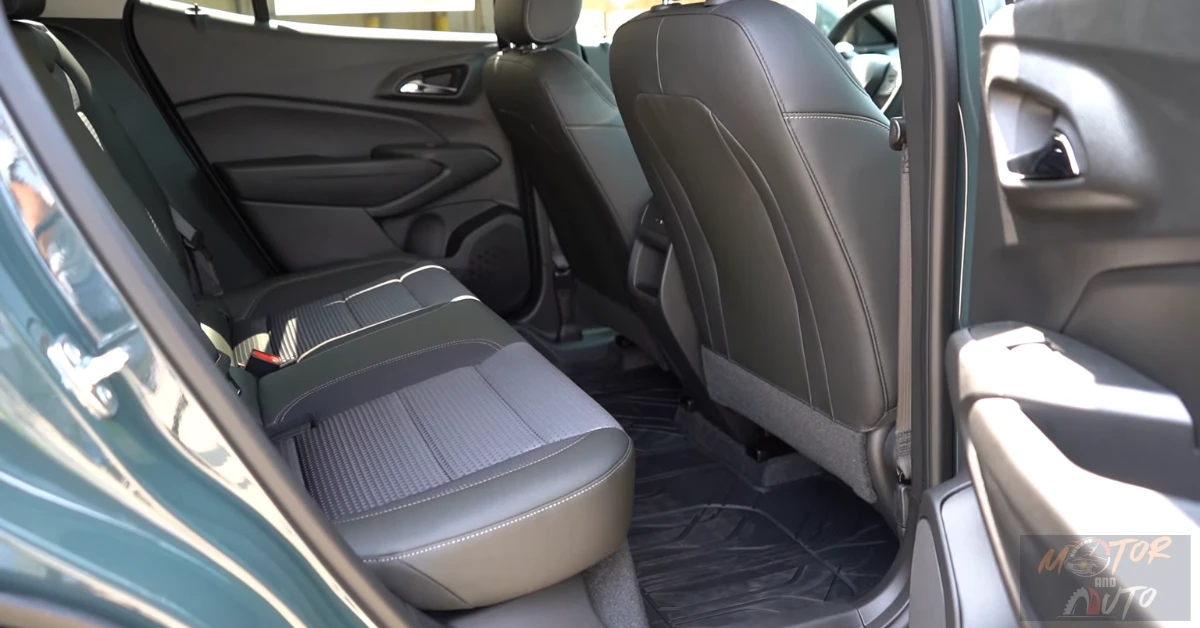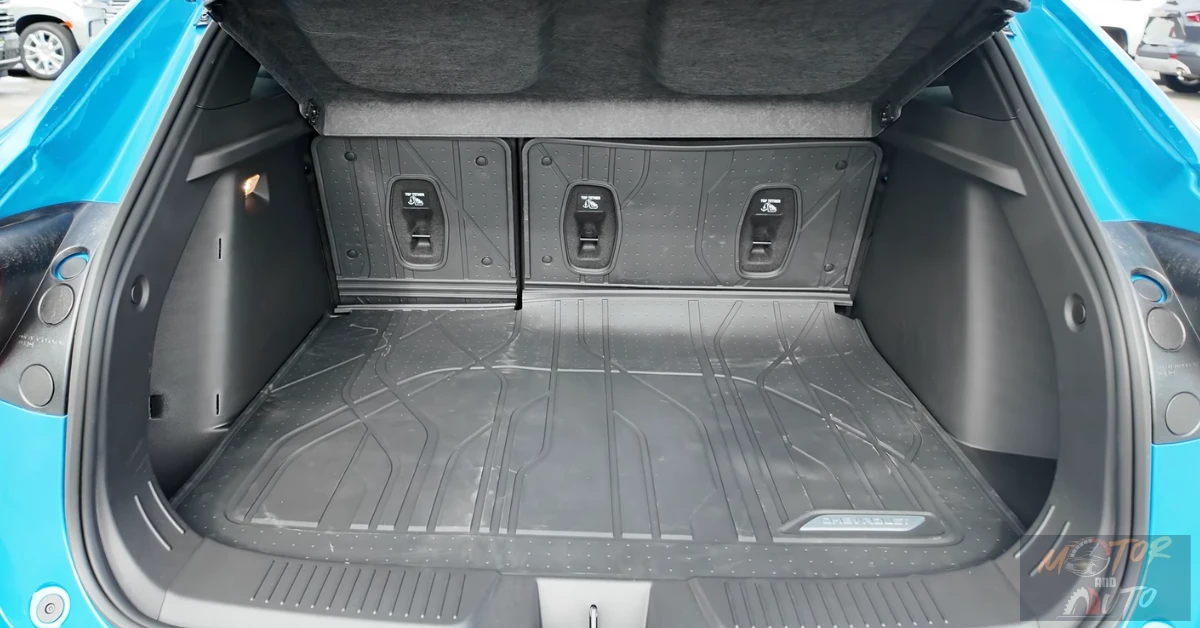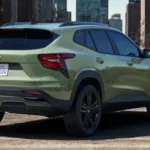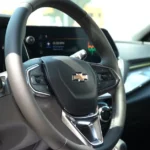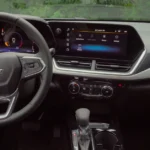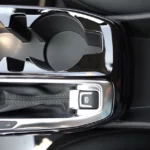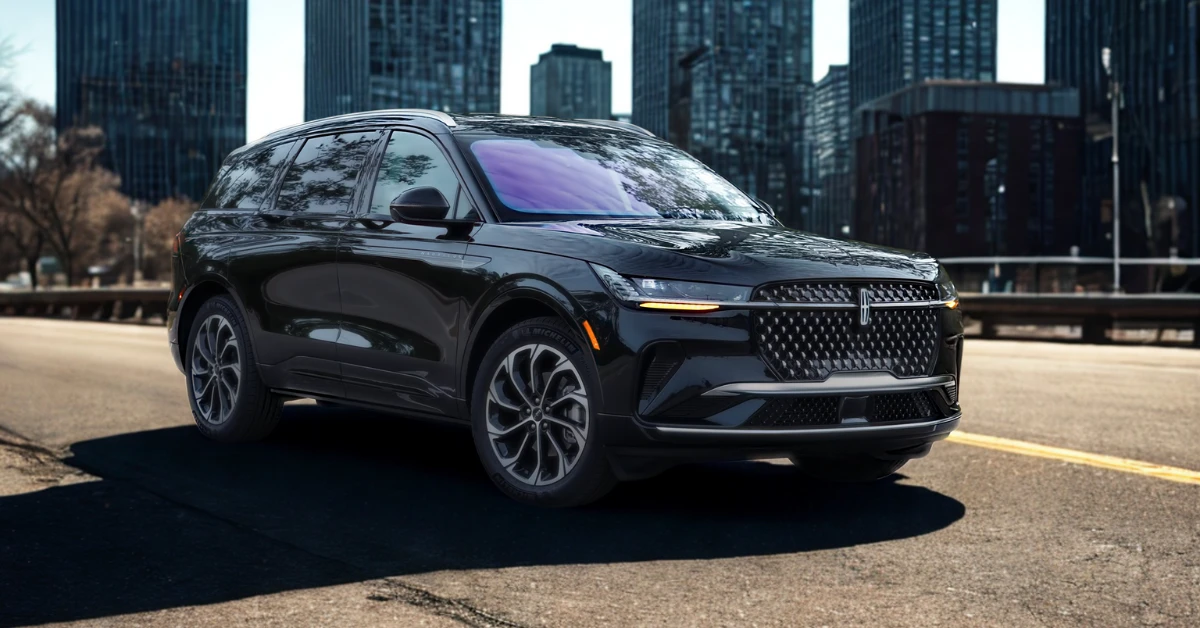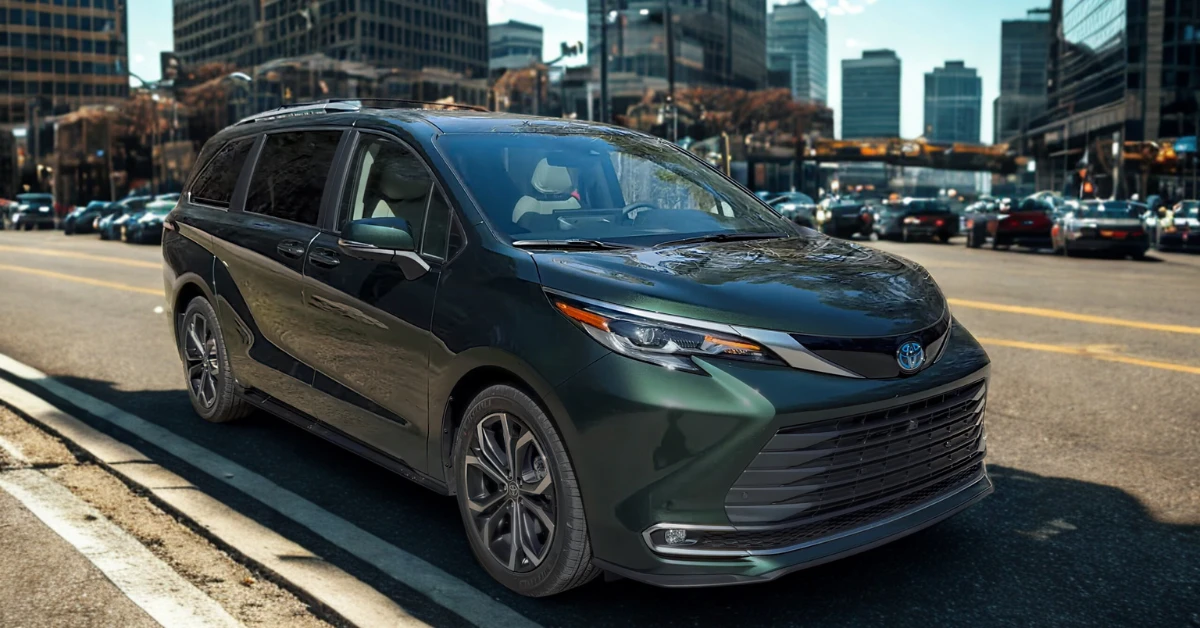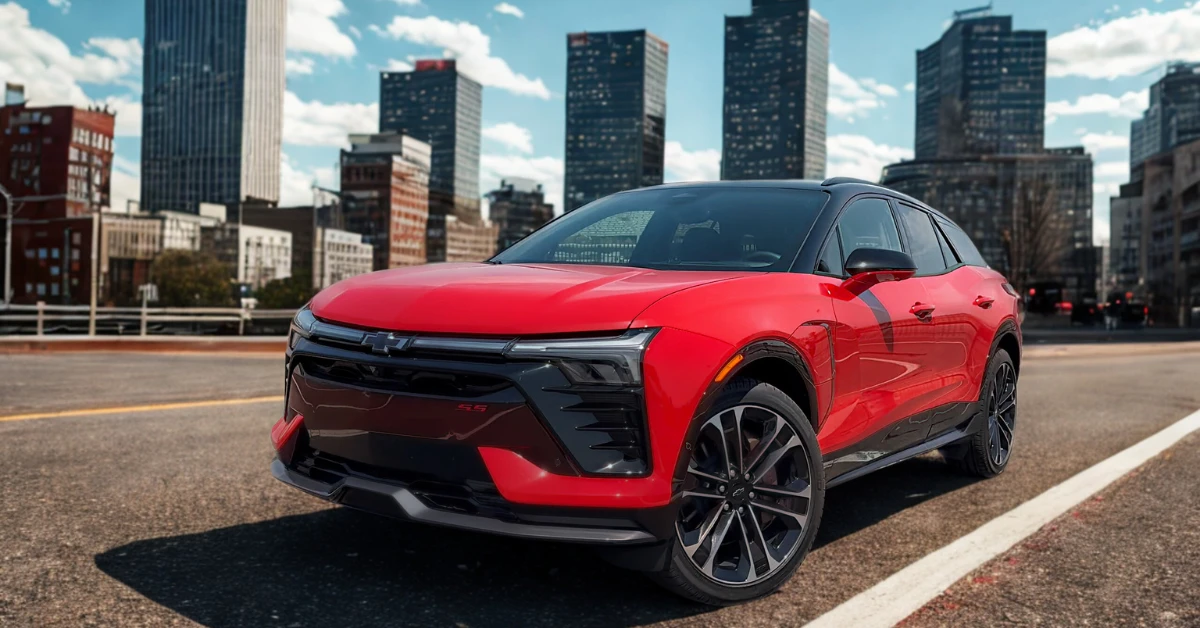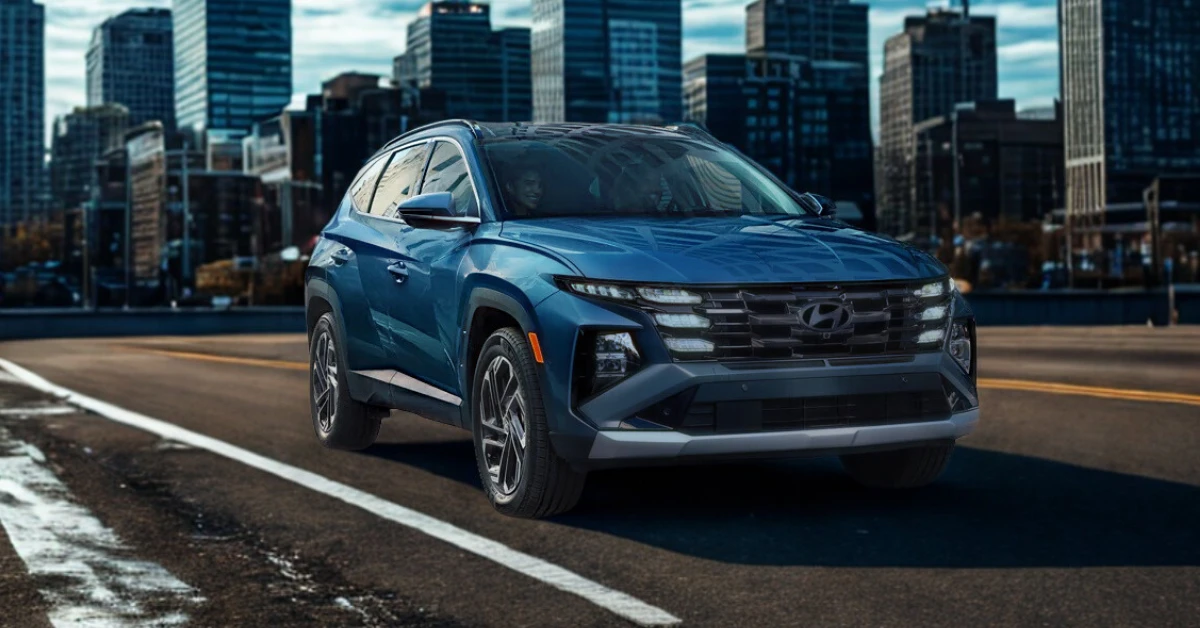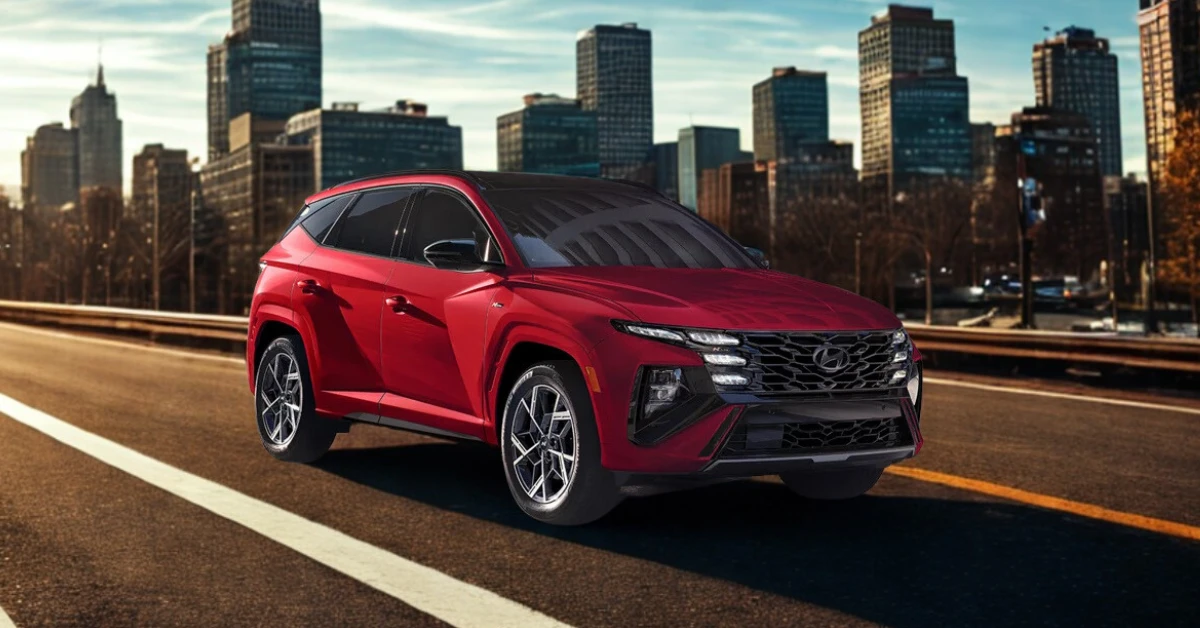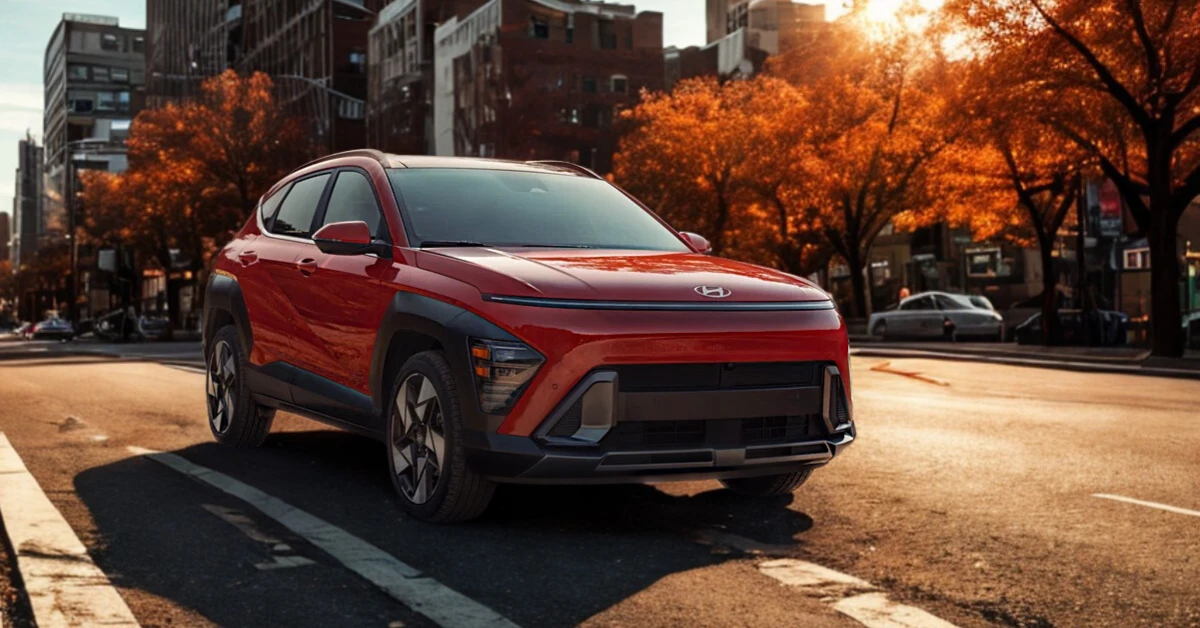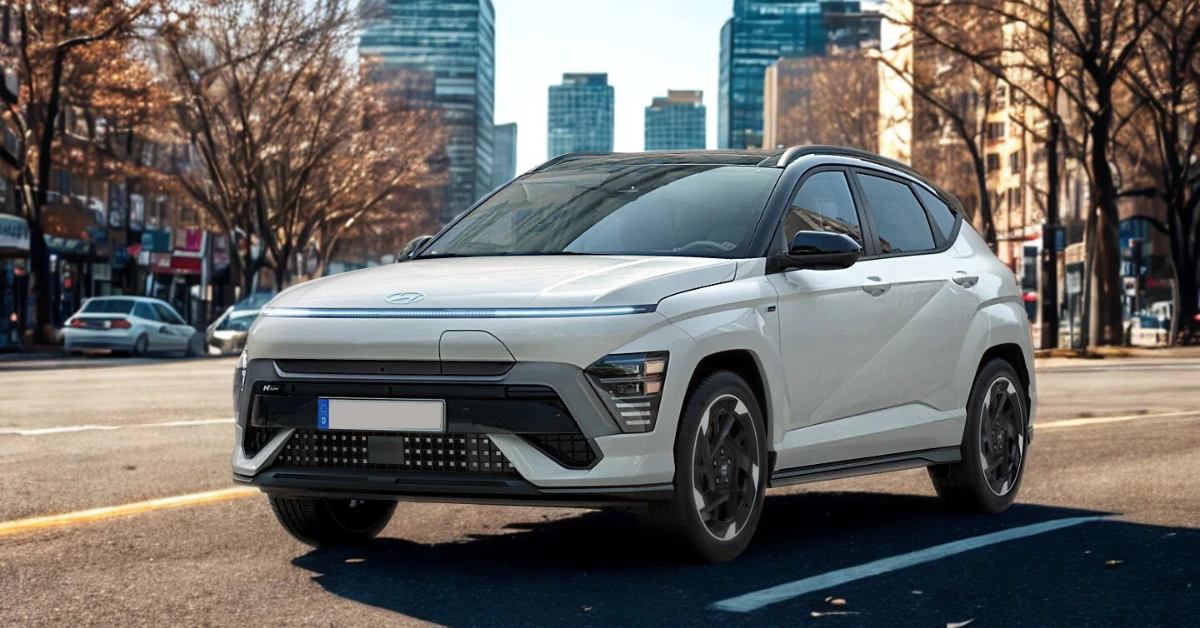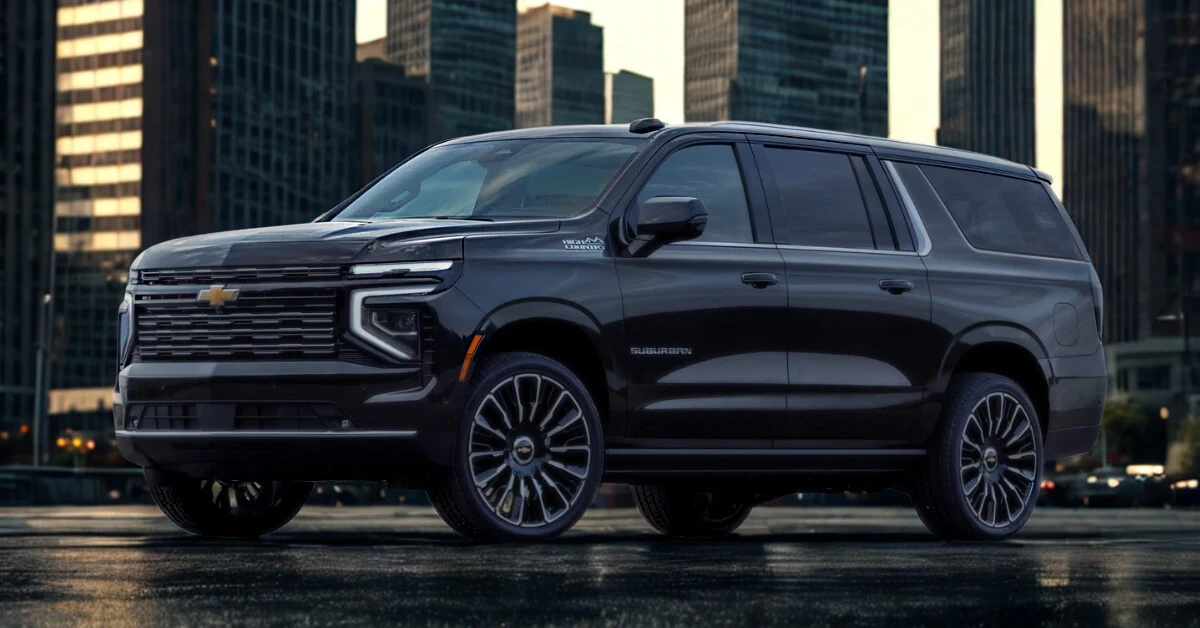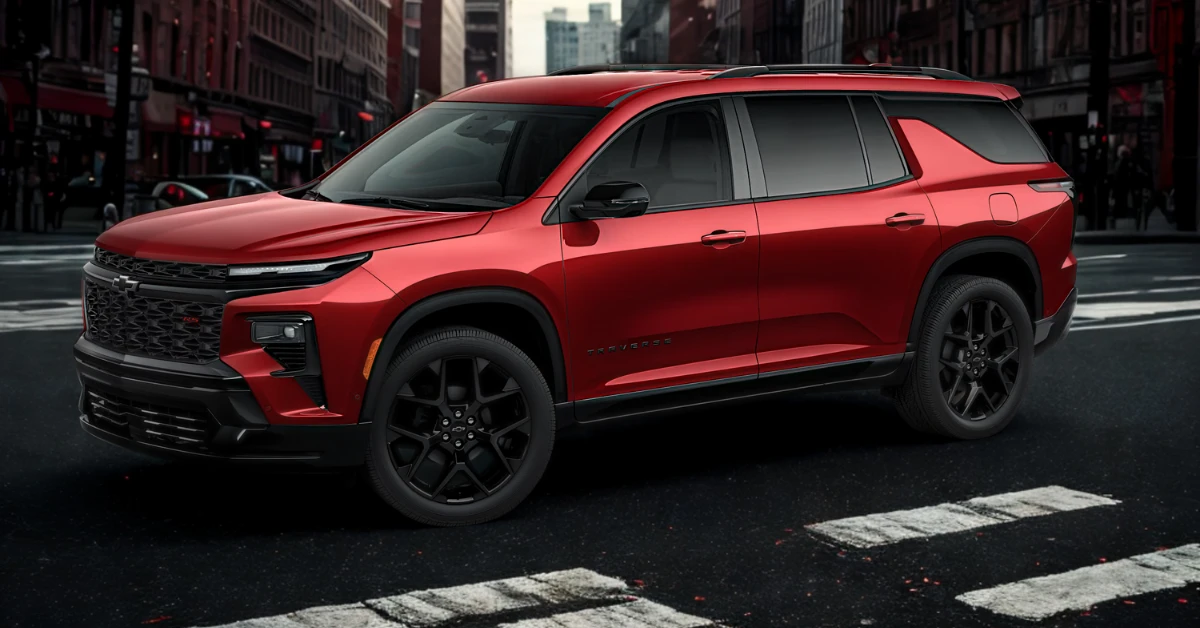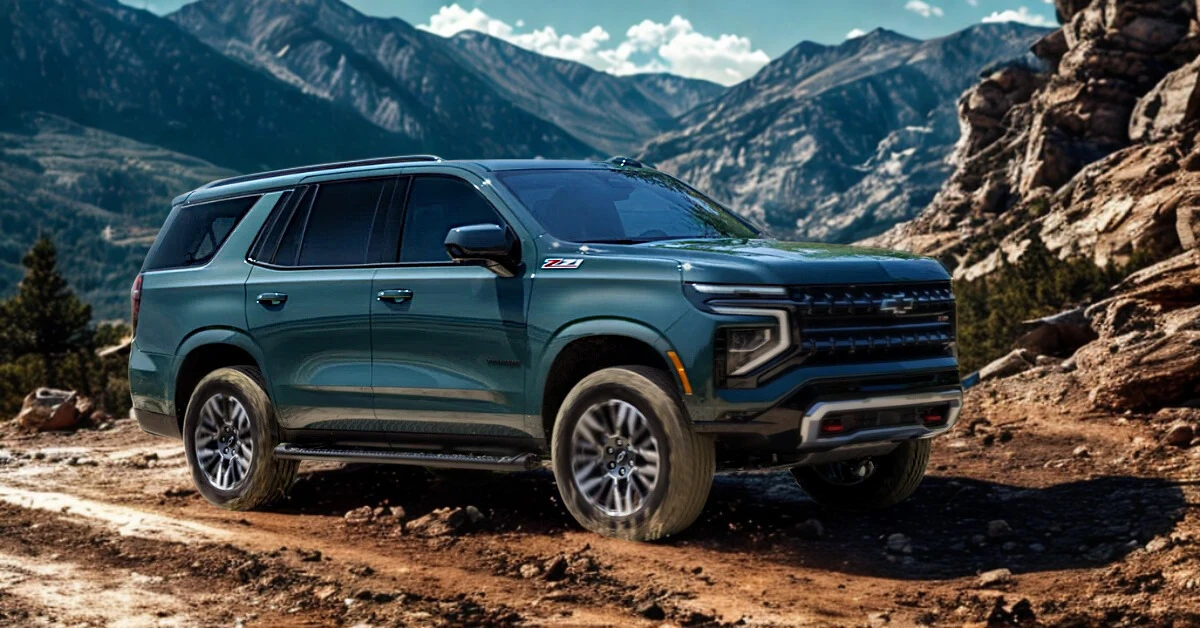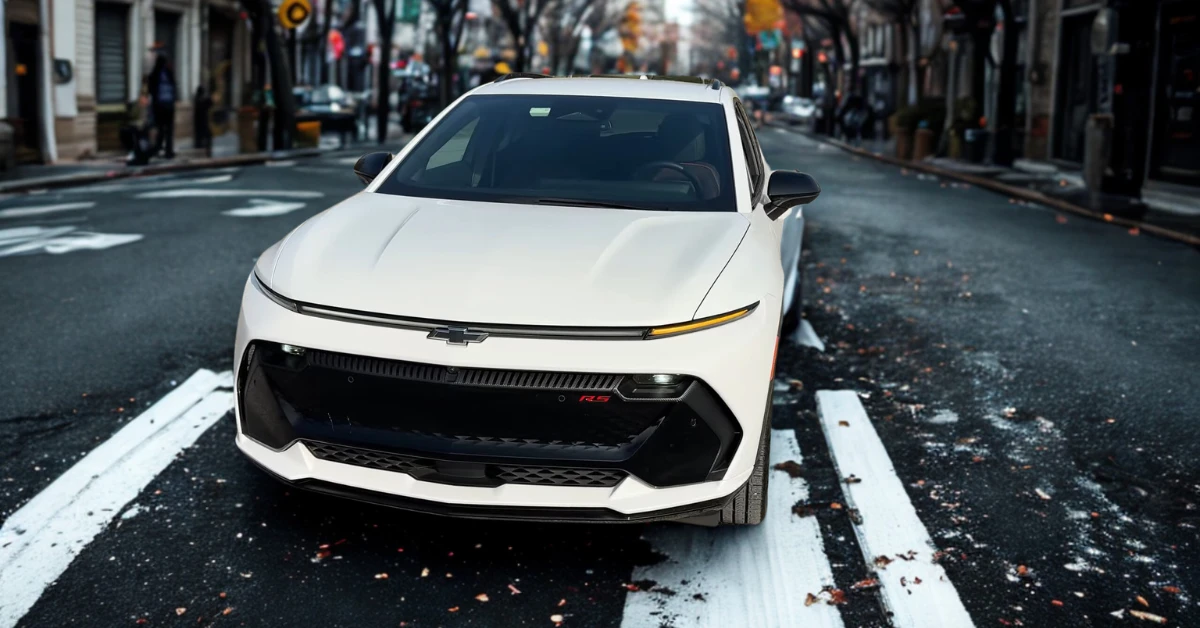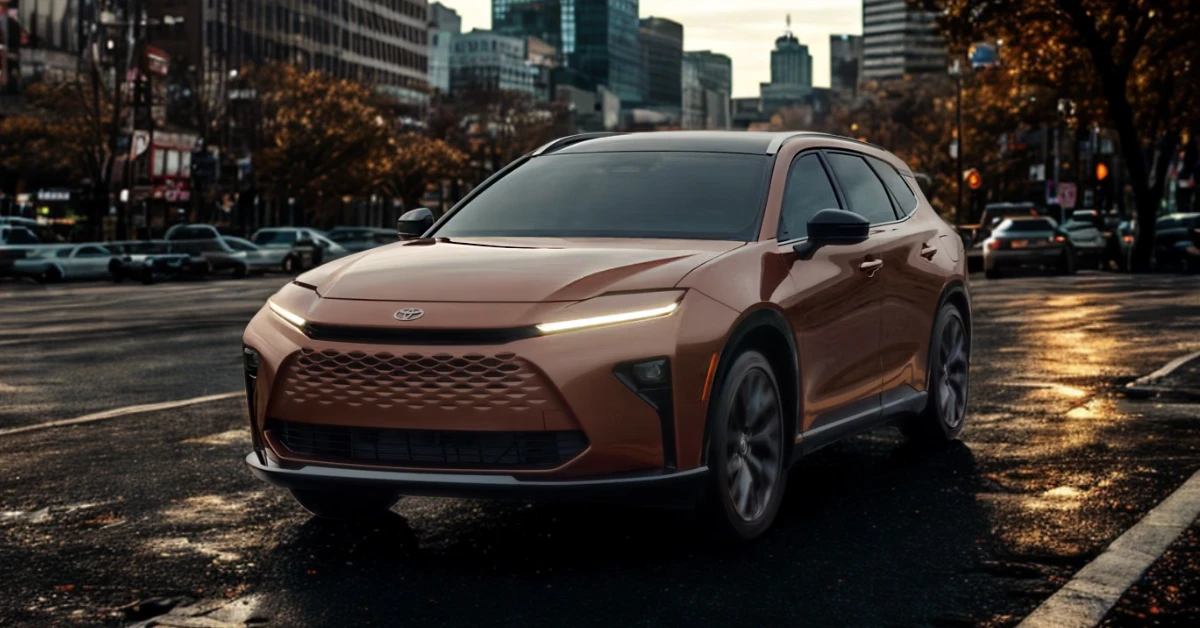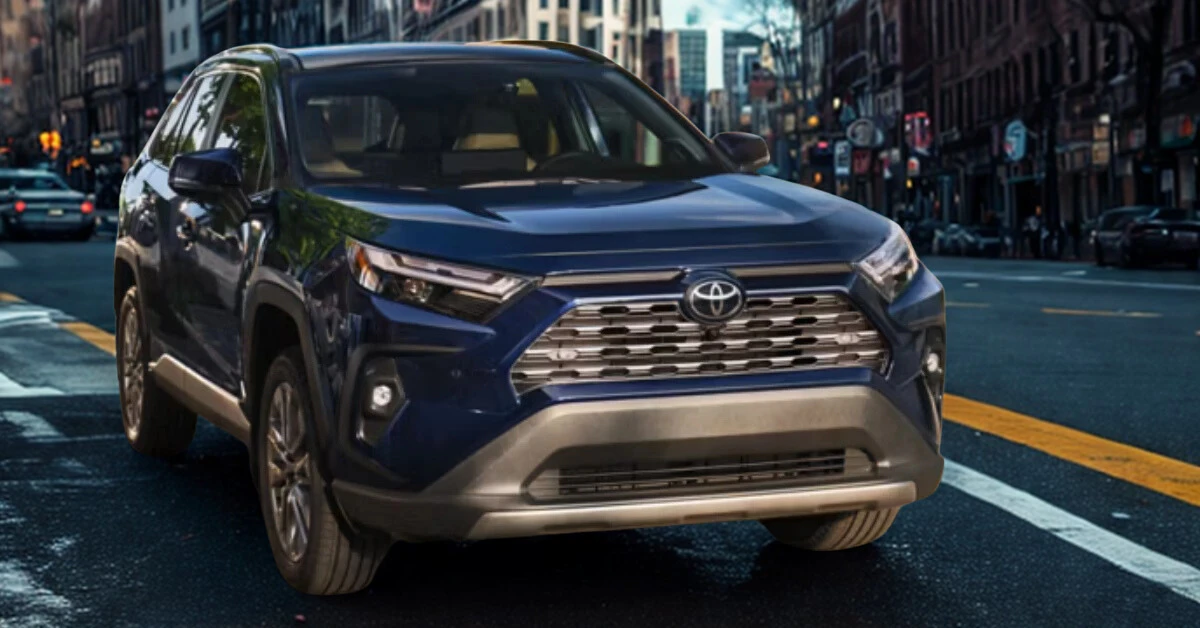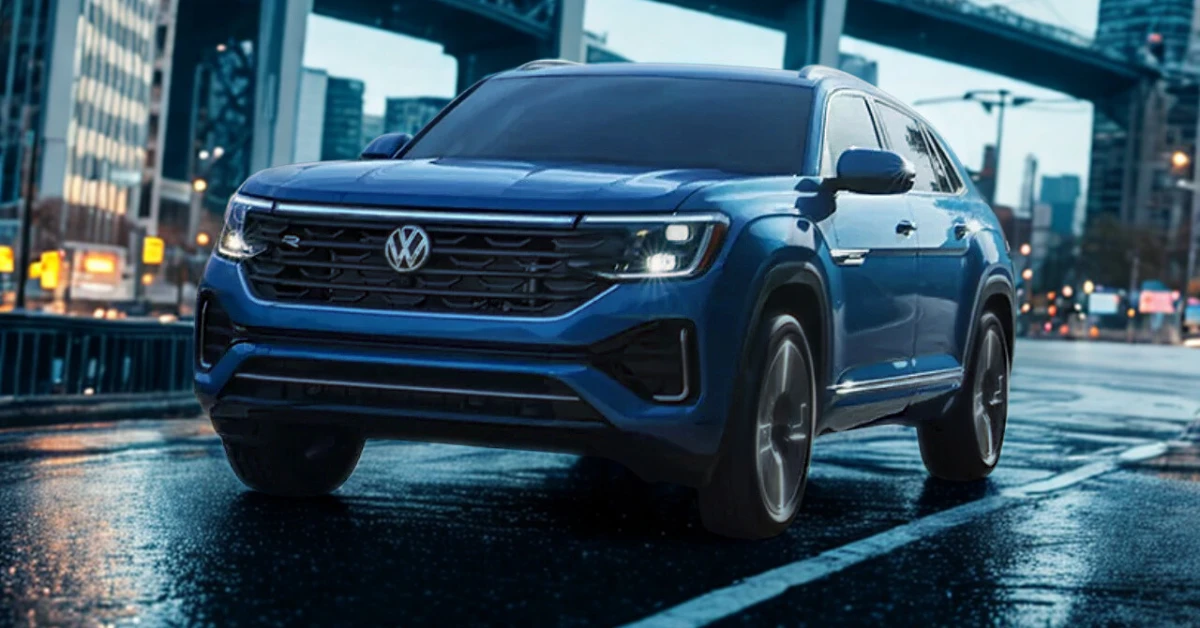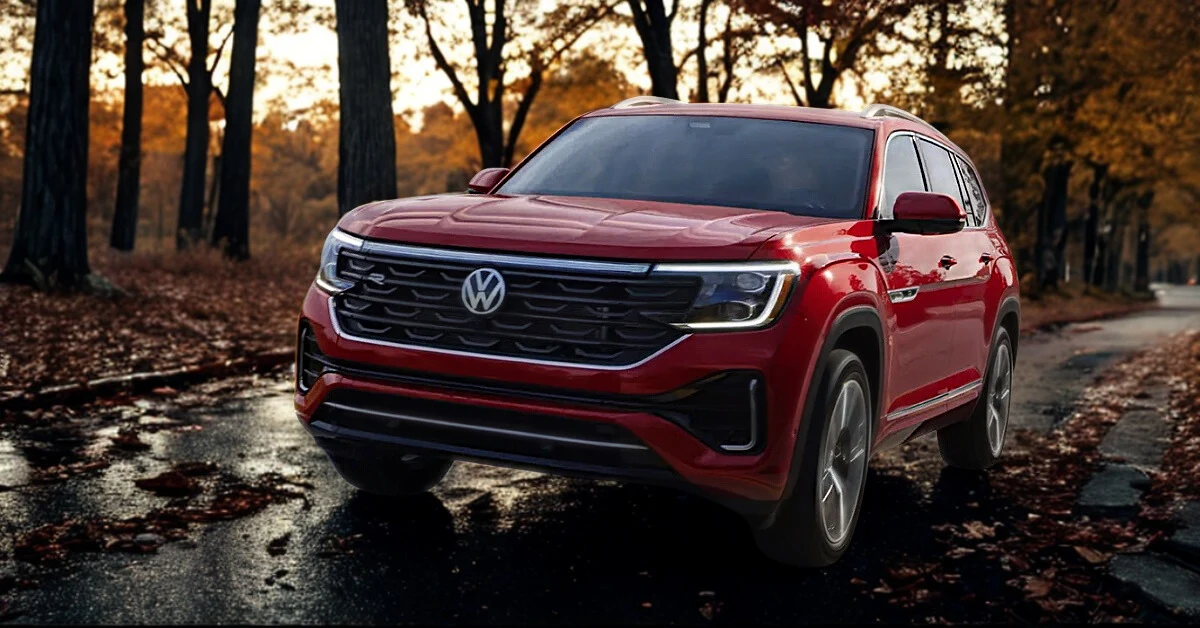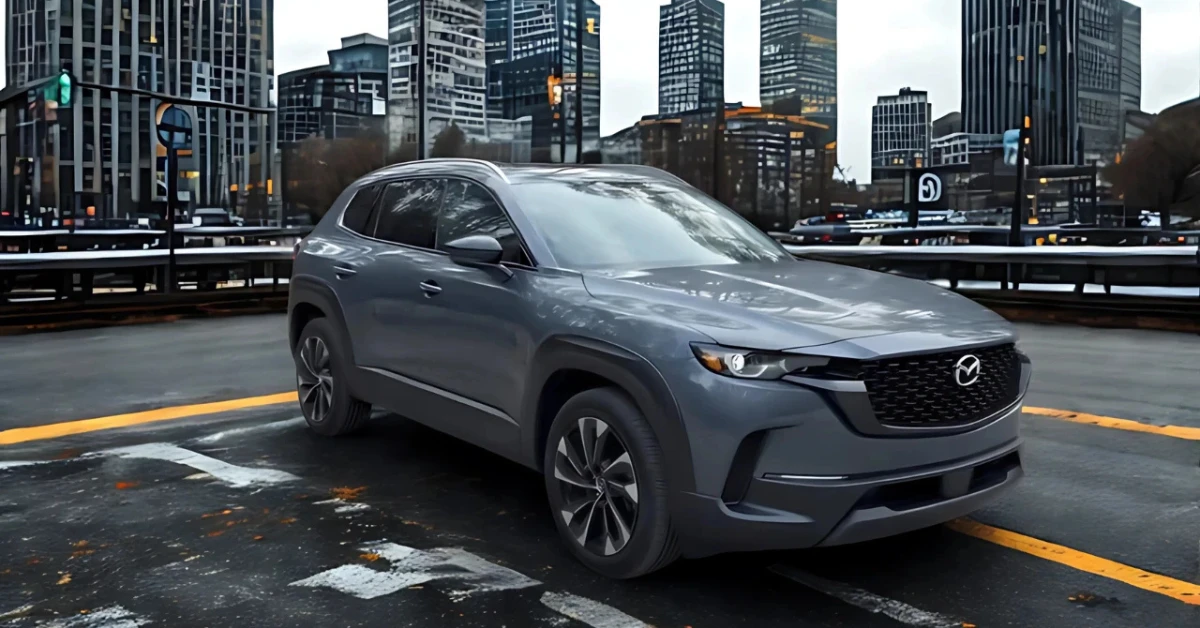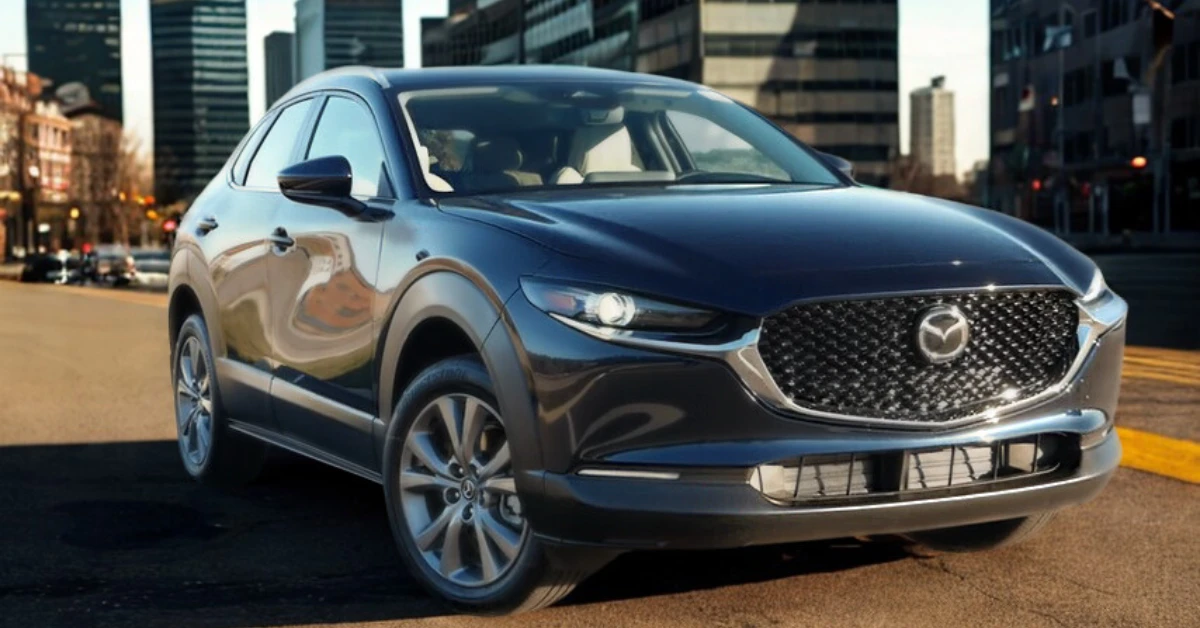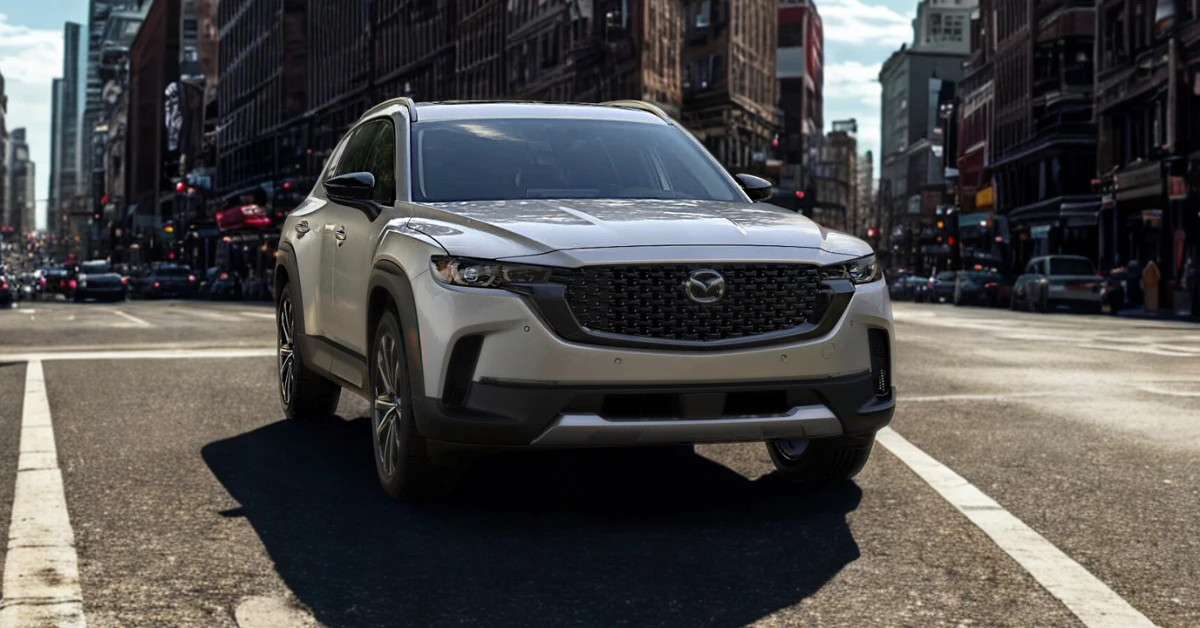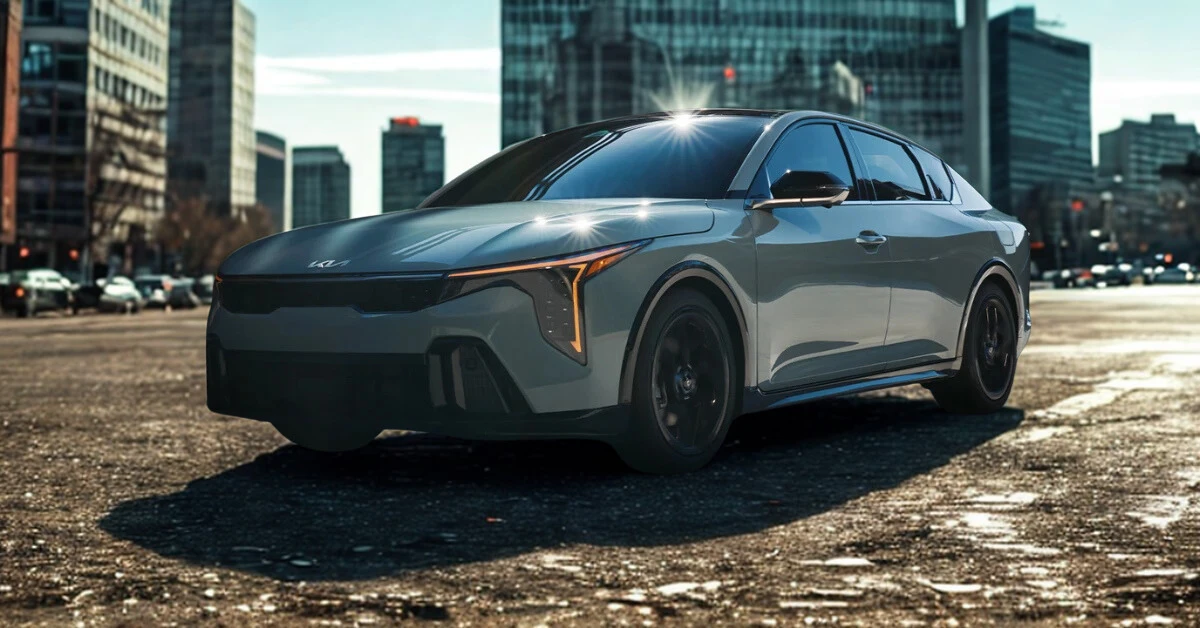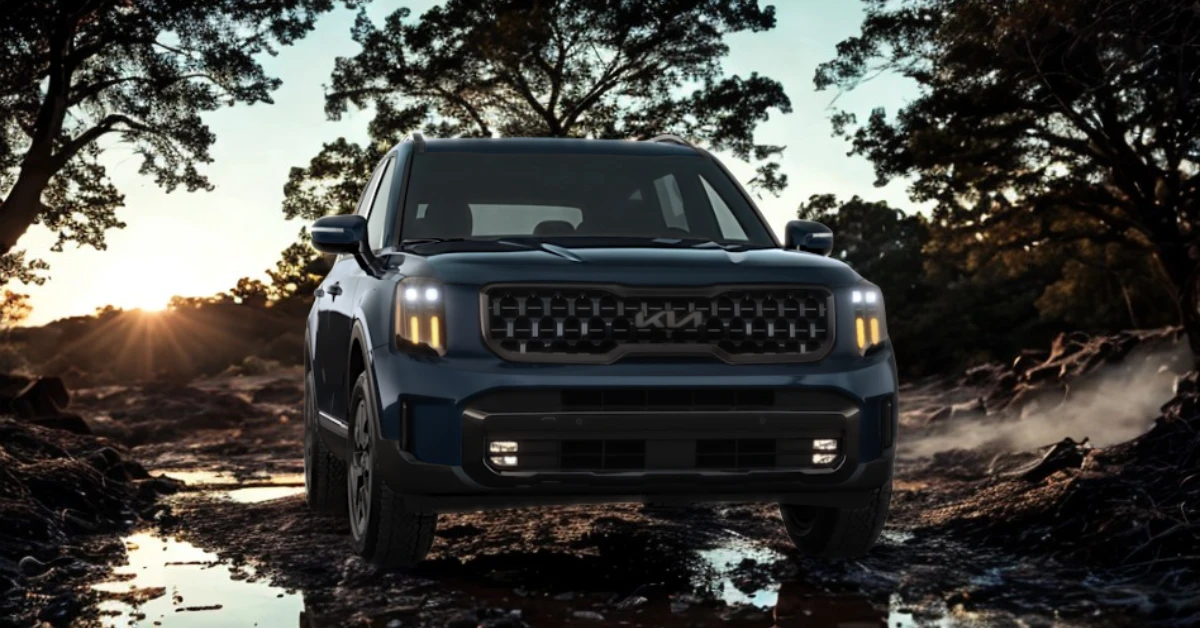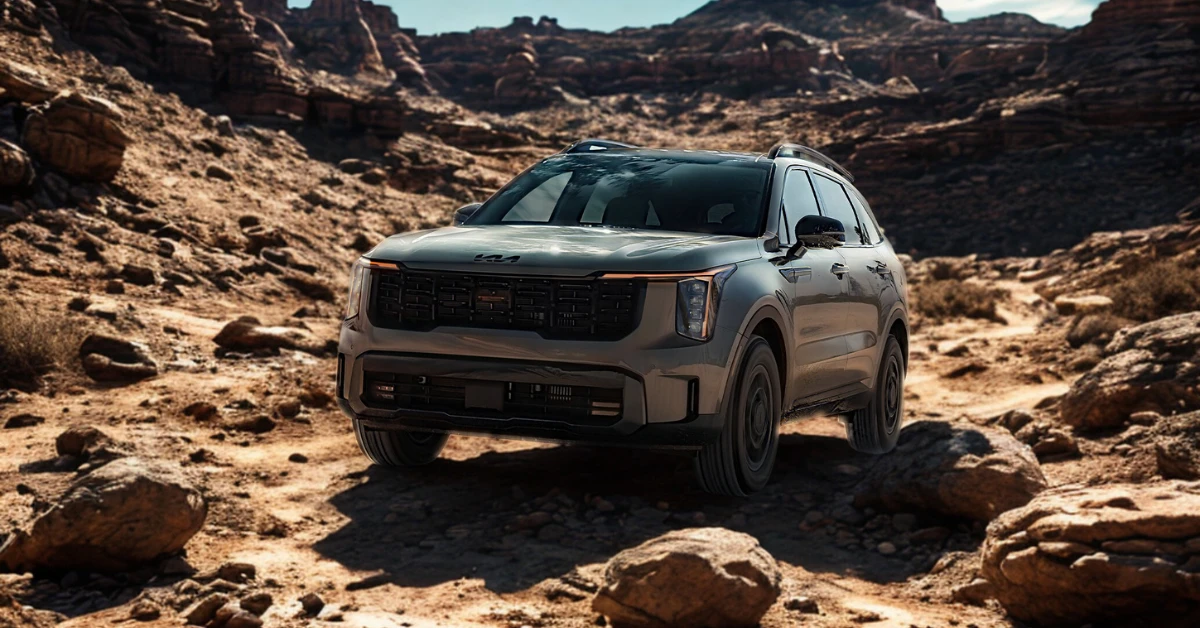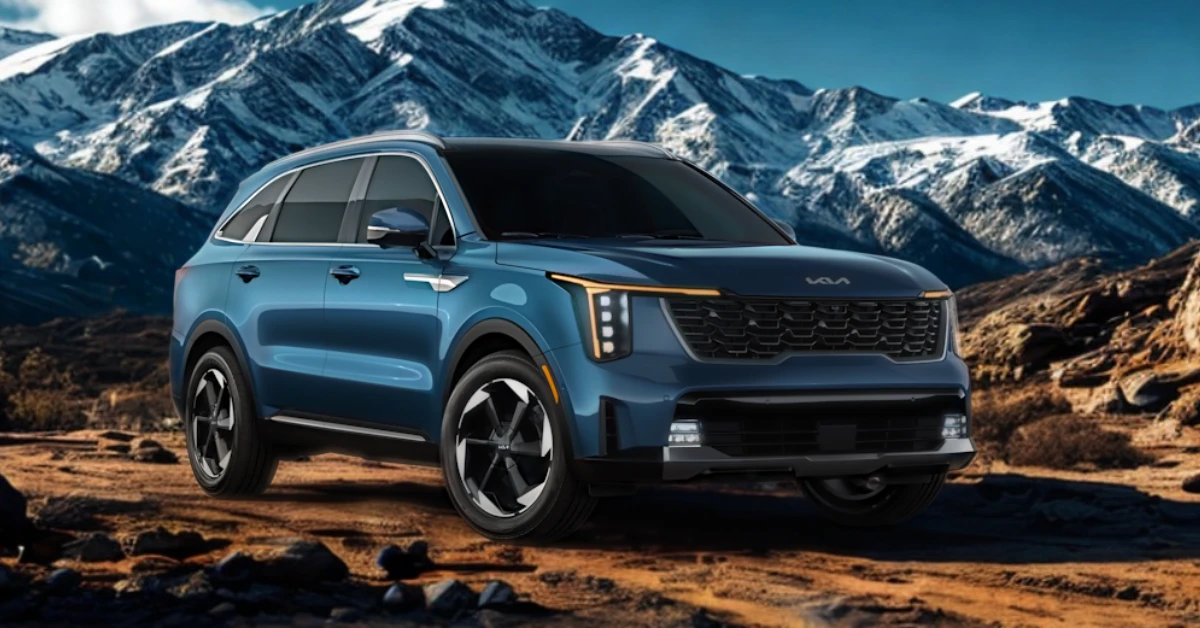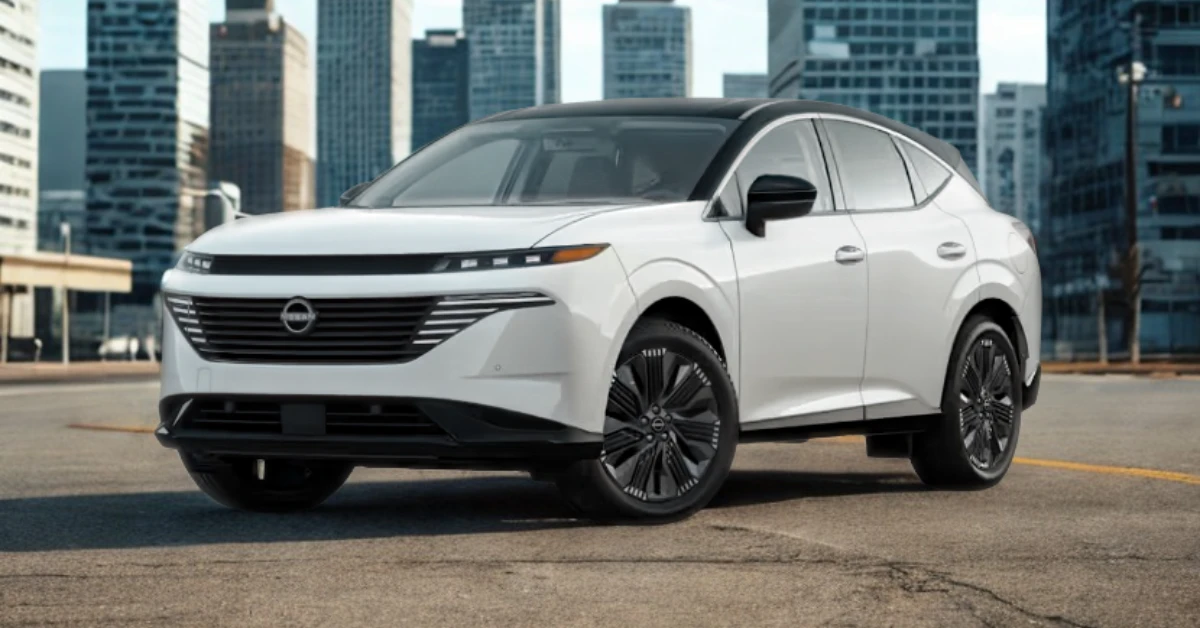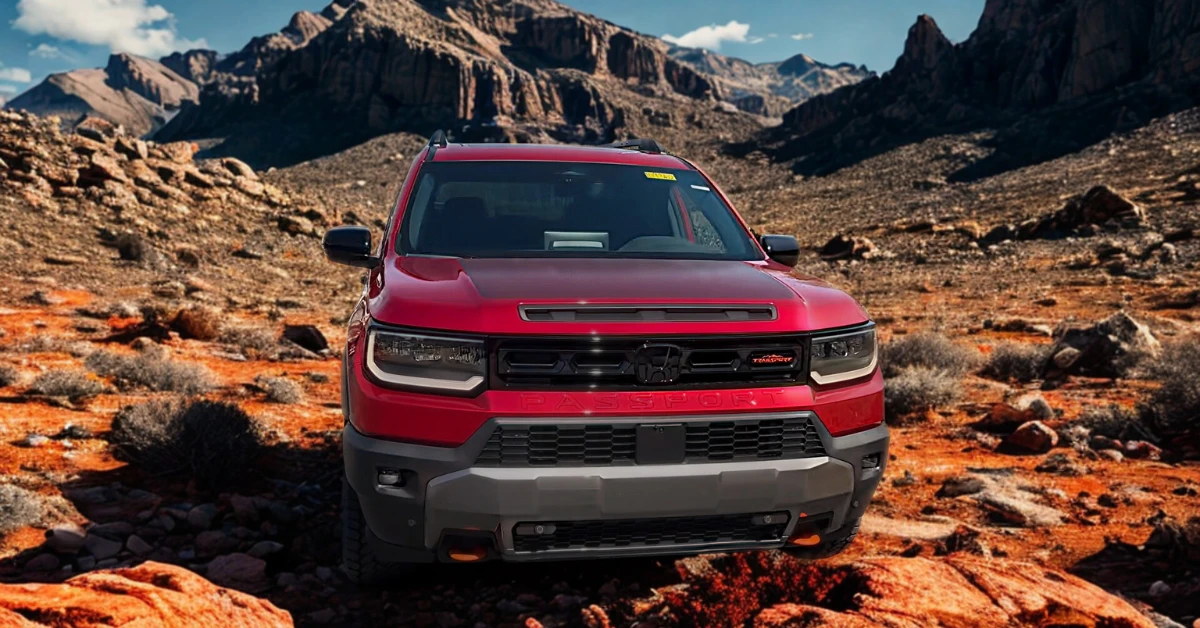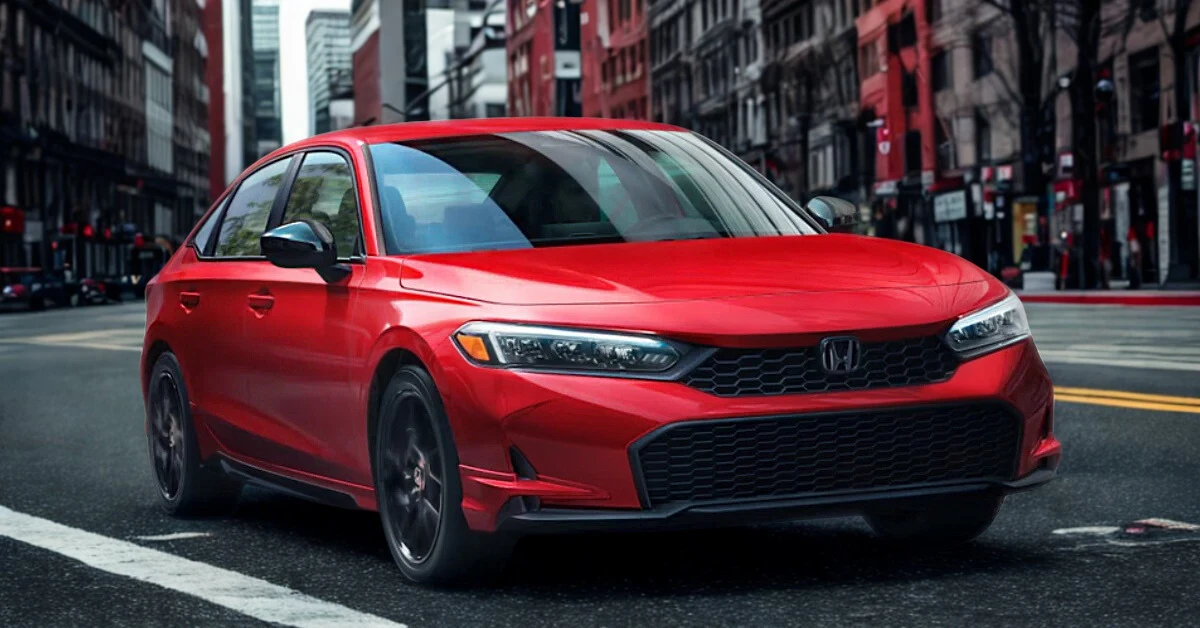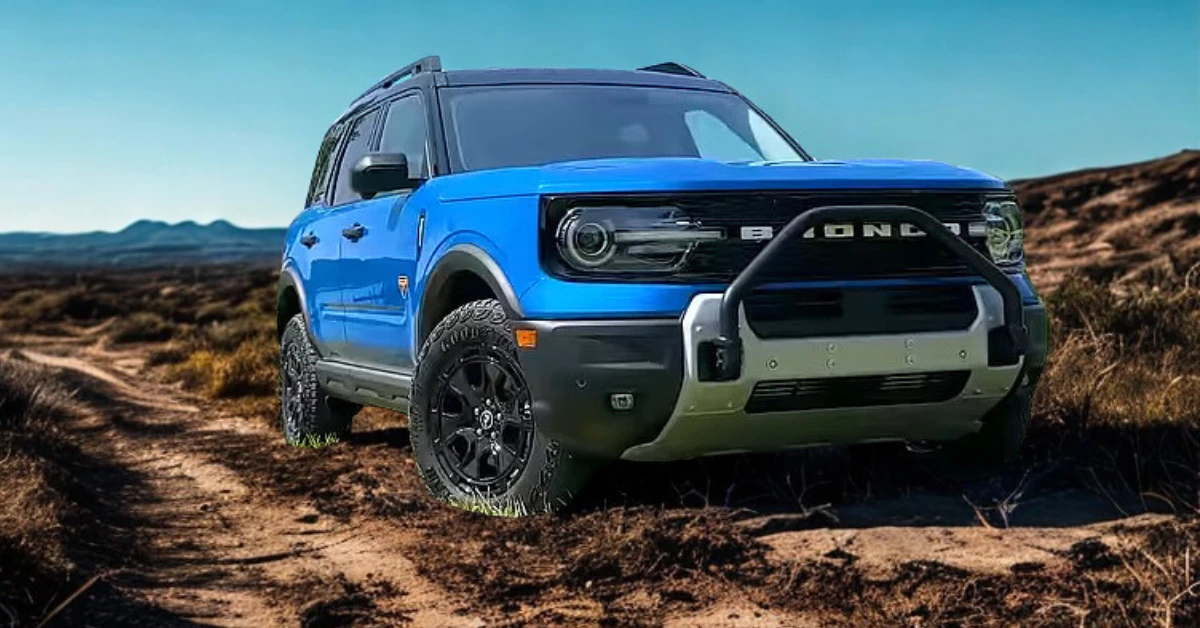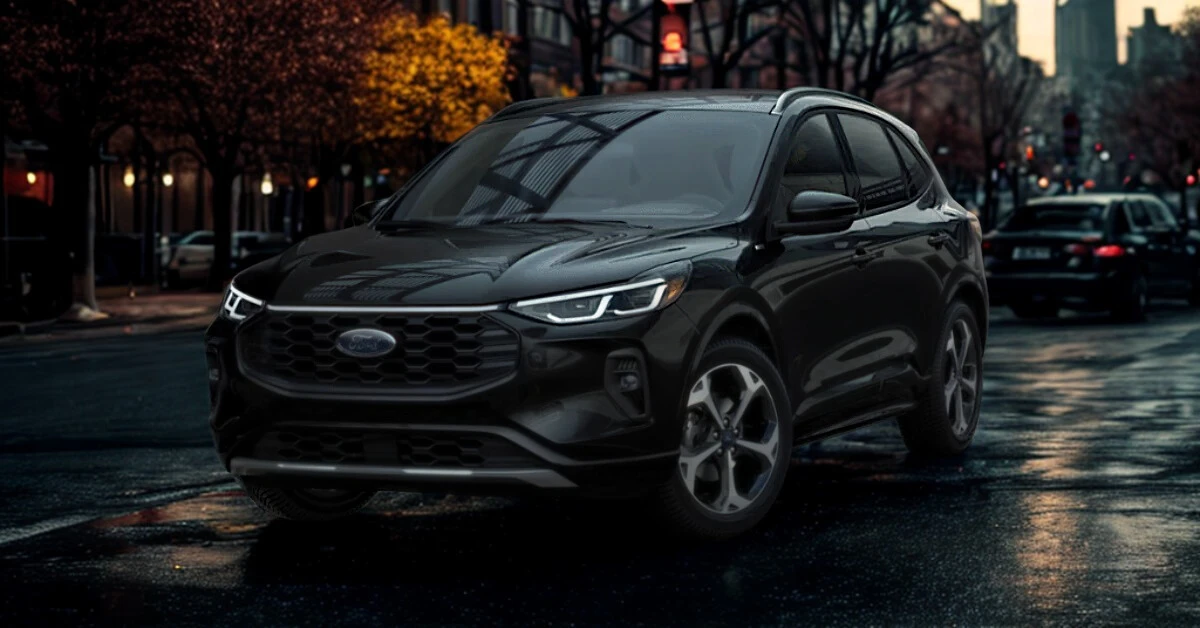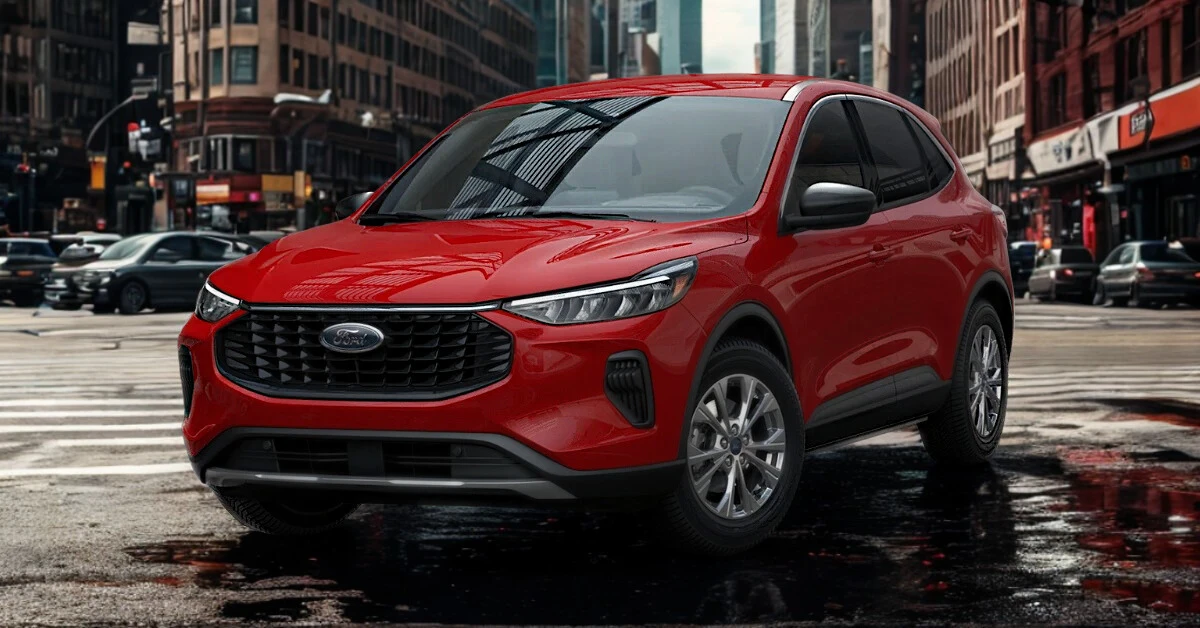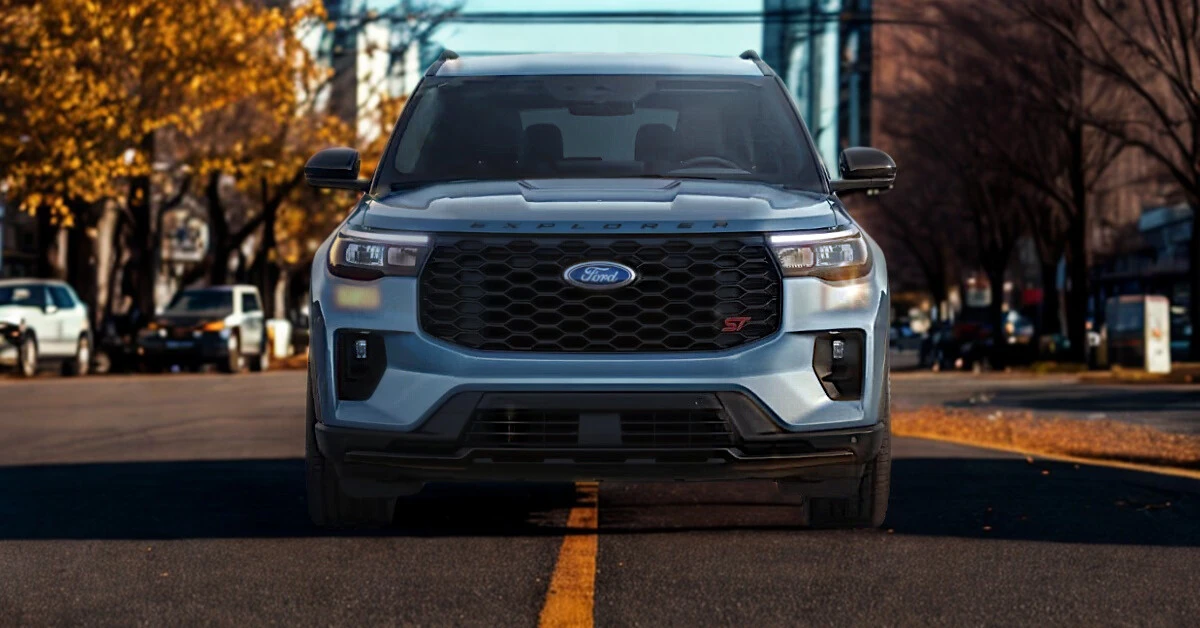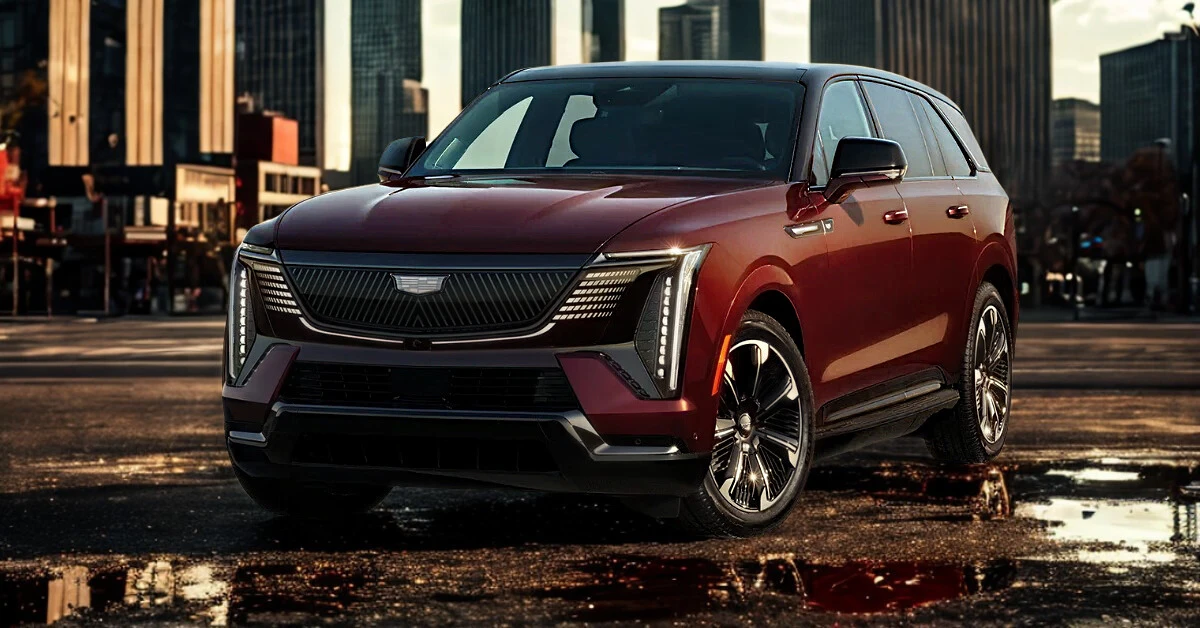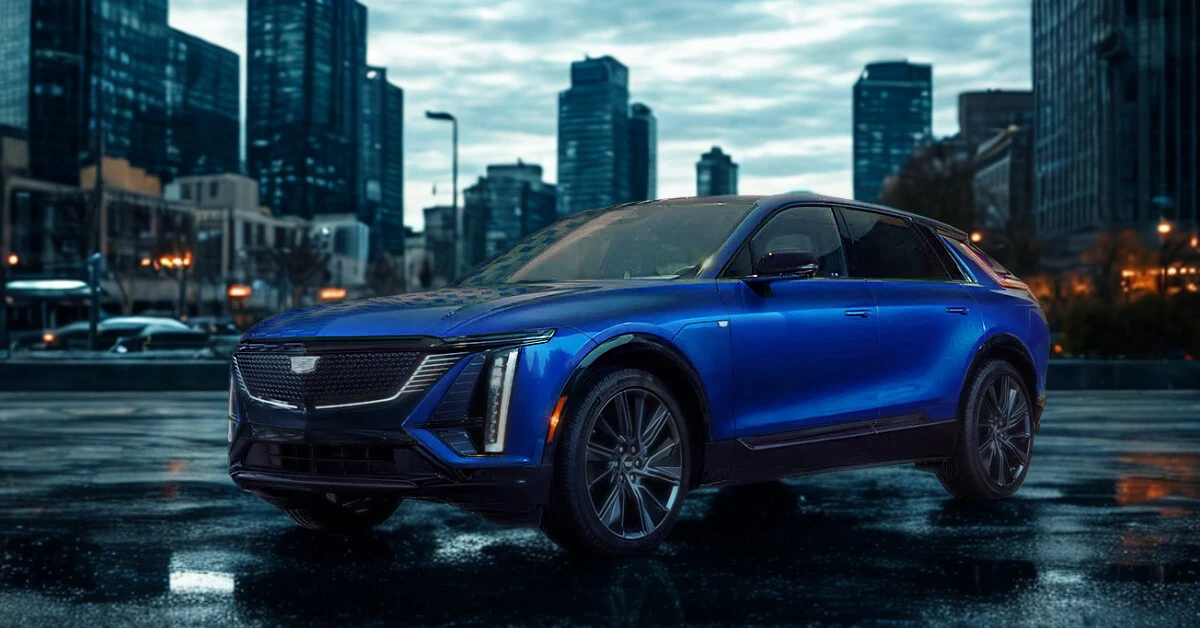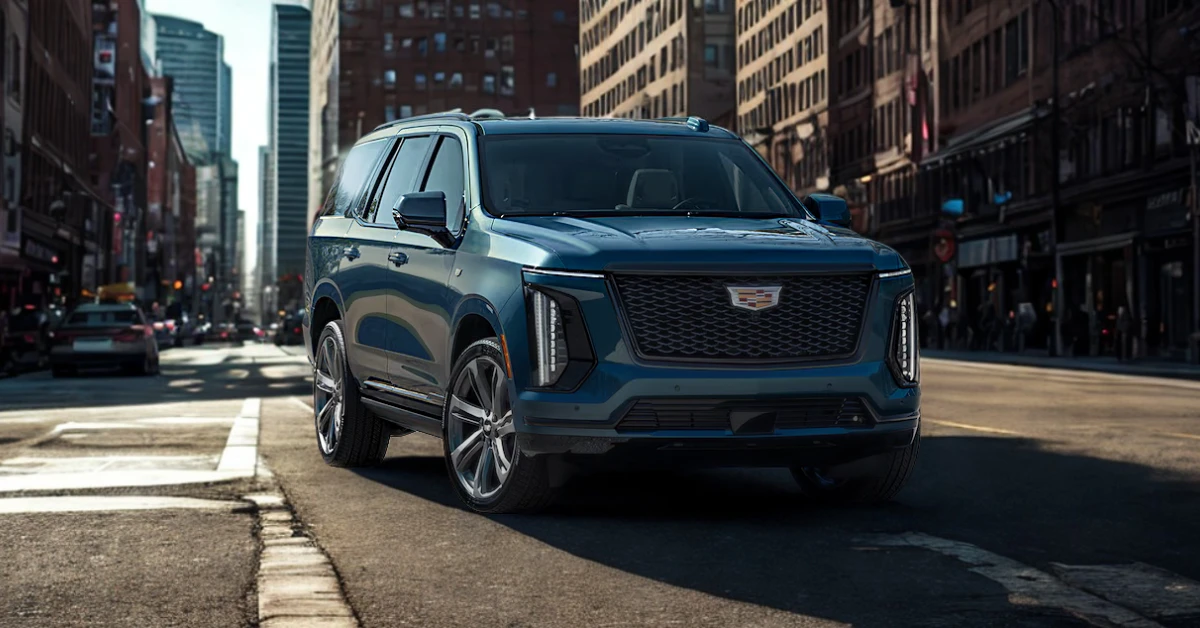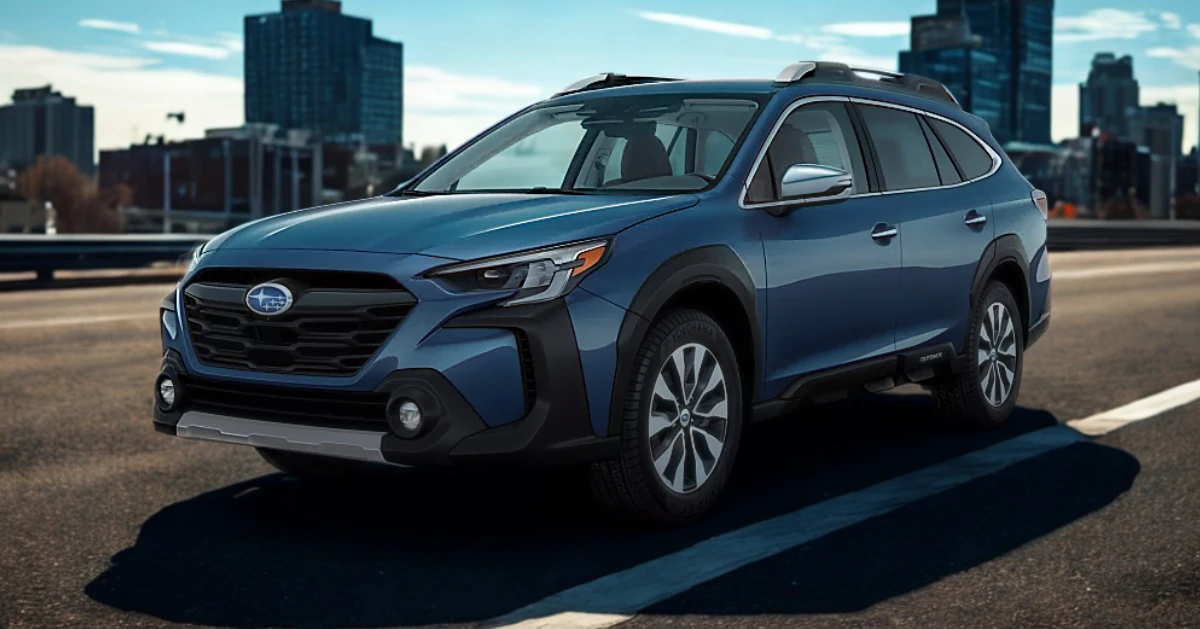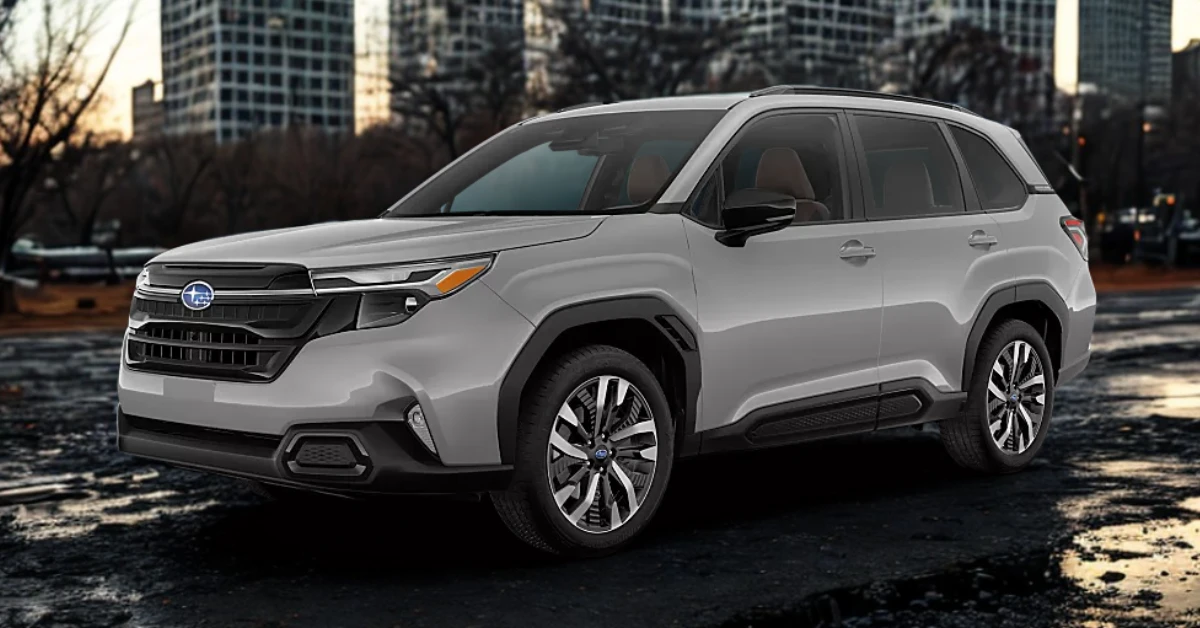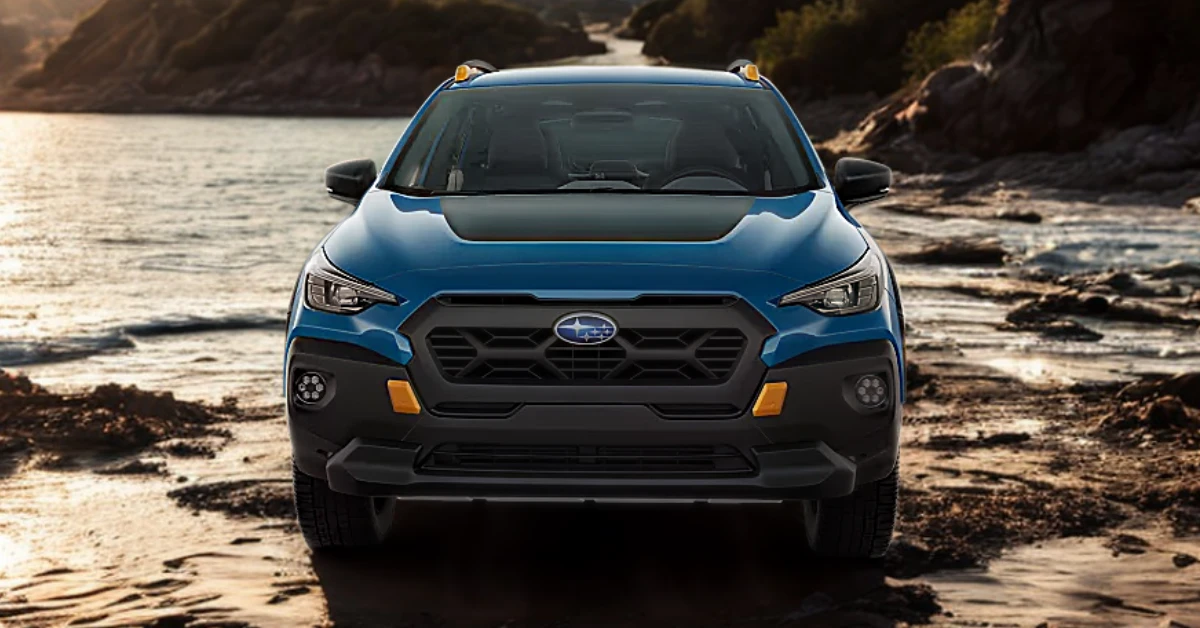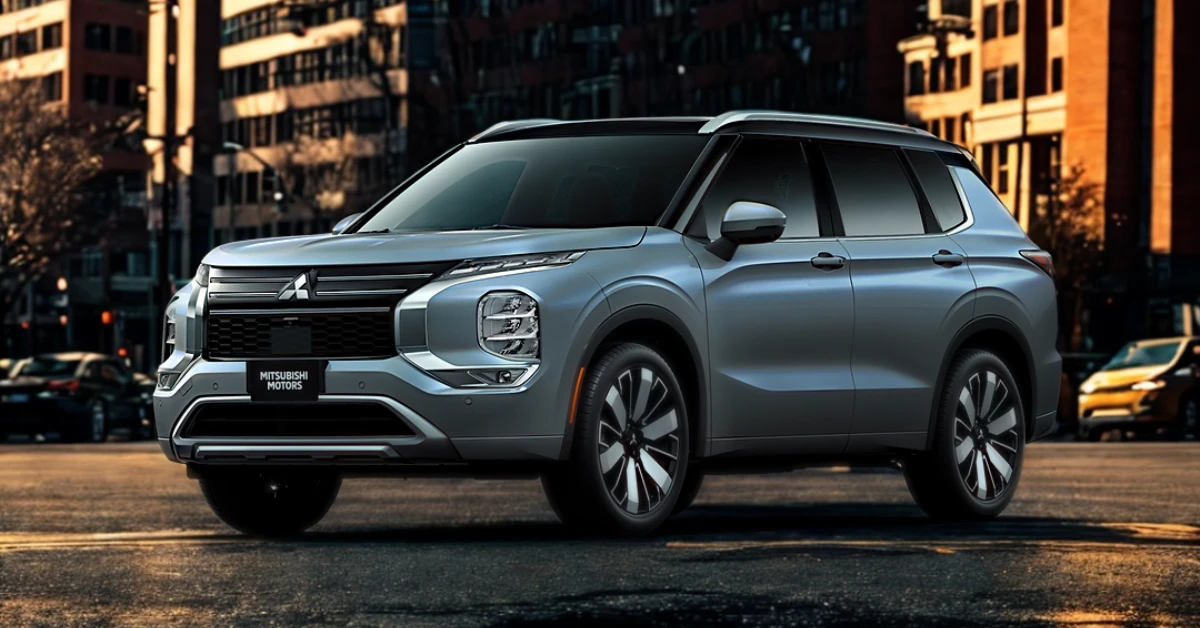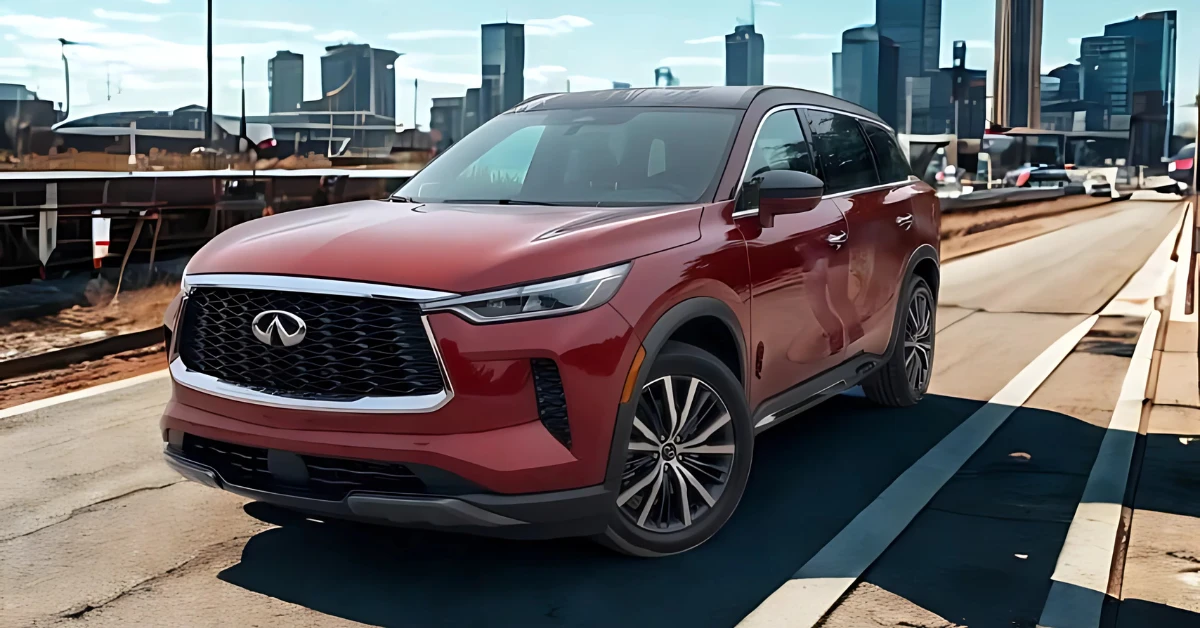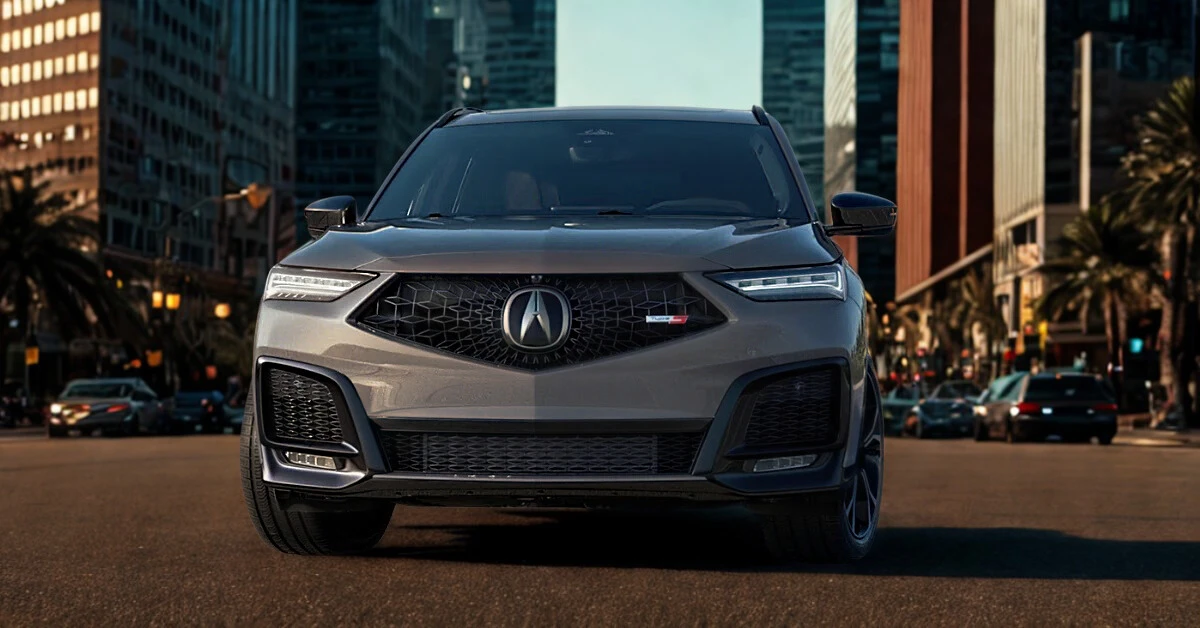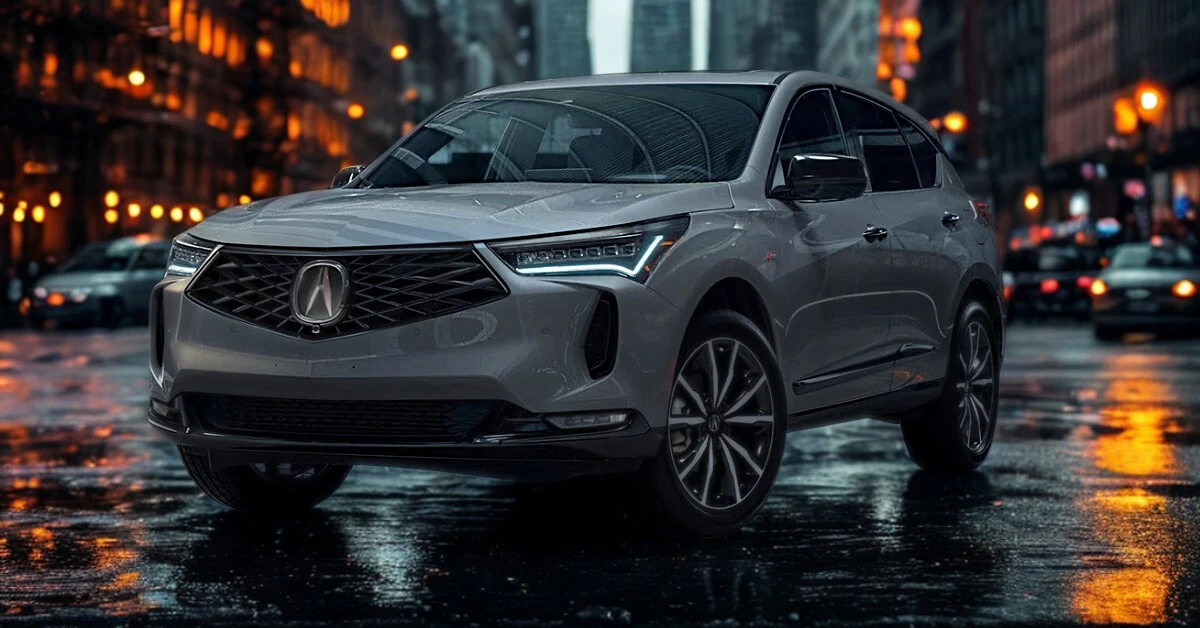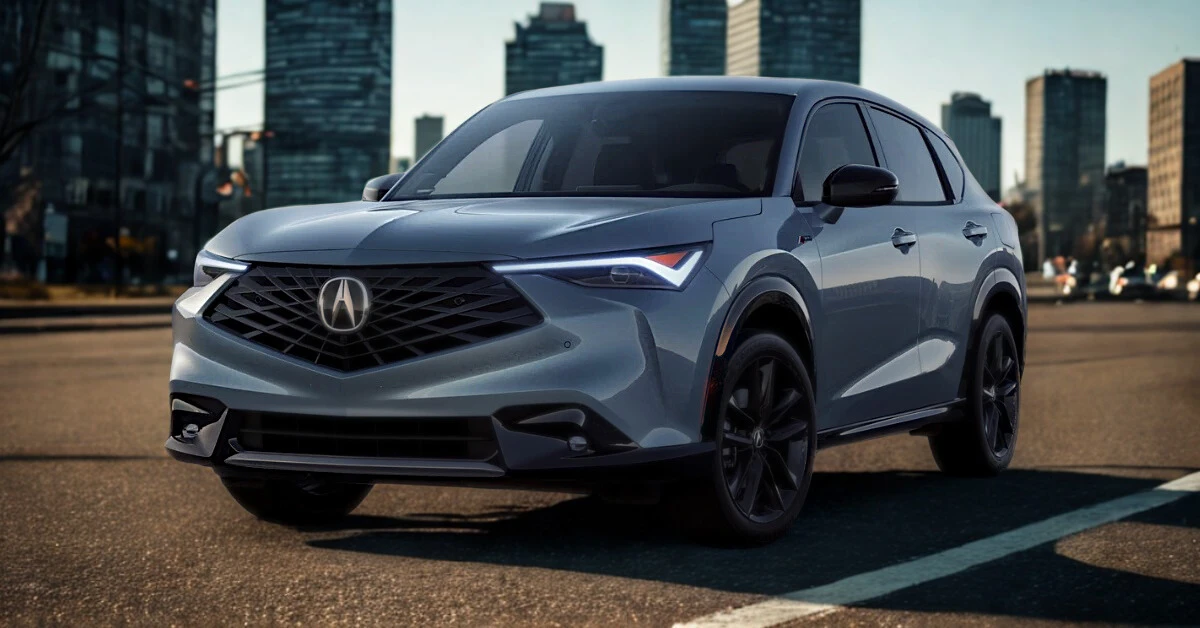2025 Chevrolet Trax Specifications
- POWERTRAINS
- TRIMS
- COLORS
- DIMENSIONS
| Specification | LS FWD | 1RS FWD | LT FWD | 2RS FWD | ACTIV FWD |
|---|---|---|---|---|---|
| Base Price | $21,795 | $23,795 | $23,995 | $25,795 | $25,795 |
| Engine Type | Turbocharged Gas 3-Cyl | Turbocharged Gas 3-Cyl | Turbocharged Gas 3-Cyl | Turbocharged Gas 3-Cyl | Turbocharged Gas 3-Cyl |
| Engine Name | ECOTEC 1.2L Turbo | ECOTEC 1.2L Turbo | ECOTEC 1.2L Turbo | ECOTEC 1.2L Turbo | ECOTEC 1.2L Turbo |
| Fuel Type | Regular/E85-compatible | Regular/E85-compatible | Regular/E85-compatible | Regular/E85-compatible | Regular/E85-compatible |
| Displacement | 1.2L | 1.2L | 1.2L | 1.2L | 1.2L |
| Fuel System | Direct Injection | Direct Injection | Direct Injection | Direct Injection | Direct Injection |
| Horsepower | 137 @ 5000 rpm | 137 @ 5000 rpm | 137 @ 5000 rpm | 137 @ 5000 rpm | 137 @ 5000 rpm |
| Torque | 162 lb-ft @ 2500 rpm | 162 lb-ft @ 2500 rpm | 162 lb-ft @ 2500 rpm | 162 lb-ft @ 2500 rpm | 162 lb-ft @ 2500 rpm |
| Transmission | 6-Speed Automatic | 6-Speed Automatic | 6-Speed Automatic | 6-Speed Automatic | 6-Speed Automatic |
| Drive Type | Front-Wheel Drive | Front-Wheel Drive | Front-Wheel Drive | Front-Wheel Drive | Front-Wheel Drive |
| Fuel Economy (city/hwy/combined) | 28/32/30 mpg | 28/32/30 mpg | 28/32/30 mpg | 28/32/30 mpg | 28/32/30 mpg |
| Fuel Tank Capacity | 13.2 gal. | 13.2 gal. | 13.2 gal. | 13.2 gal. | 13.2 gal. |
| Range (city/hwy) | 369.6/422.4 miles | 369.6/422.4 miles | 369.6/422.4 miles | 369.6/422.4 miles | 369.6/422.4 miles |
| Max Towing Capacity | Not Available | Not Available | Not Available | Not Available | Not Available |
| Curb Weight | 2,983 lbs | 3,014 lbs | 2,994 lbs | 3,040 lbs | 3,036 lbs |
| Suspension Front | MacPherson Strut | MacPherson Strut | MacPherson Strut | MacPherson Strut | MacPherson Strut |
| Suspension Rear | Compound Crank | Compound Crank | Compound Crank | Compound Crank | Compound Crank |
| EPA Classification | Small Sport Utility Vehicle | Small Sport Utility Vehicle | Small Sport Utility Vehicle | Small Sport Utility Vehicle | Small Sport Utility Vehicle |
| Greenhouse Gas Score | 6 | 6 | 6 | 6 | 6 |
| CO2 Emissions | 5.9 tons/year | 5.9 tons/year | 5.9 tons/year | 5.9 tons/year | 5.9 tons/year |
| Special Features | Engine Start-Stop System, Automatic Emergency Braking | Heated Front Seats, Remote Start, Heated Steering Wheel | Keyless Start, Automatic Climate Control, Digital Gauge Cluster | Power Driver Seat, Keyless Open, Larger Touchscreen | Roof Rails, Power Driver Seat, Keyless Open |
Interior Features
| Feature | Trax LS FWD | Trax 1RS FWD | Trax LT FWD | Trax 2RS FWD | Trax ACTIV FWD |
|---|---|---|---|---|---|
| Seating Capacity | 5 | 5 | 5 | 5 | 5 |
| Seating Material | Cloth | Cloth | Cloth/Evotex | Evotex | Evotex |
| Front Seats | Standard | Heated | Standard | Heated | Heated |
| Driver’s Seat | 6-way manual | 6-way manual | 6-way manual | 8-way power w/2-way power lumbar | 8-way power w/2-way power lumbar |
| Passenger Seat | 4-way manual | 4-way manual | 4-way manual | 4-way manual | 4-way manual |
| Rear Seats | 60/40 split-folding | 60/40 split-folding | 60/40 split-folding | 60/40 split-folding | 60/40 split-folding |
| Steering Wheel | Polyurethane | Wrapped, flat-bottom, heated | Polyurethane | Wrapped, flat-bottom, heated | Wrapped, heated |
| Steering Column | Tilt and telescoping | Tilt and telescoping | Tilt and telescoping | Tilt and telescoping | Tilt and telescoping |
| Floor Mats | Front only | Front and rear | Front and rear | Front and rear | Front and rear |
| Driver Information Center | 3.5″ monochromatic display | 3.5″ monochromatic display | 8″ fully digital color display | 8″ fully digital color display | 8″ fully digital color display |
| Keyless Access | Standard | Standard | Standard | Keyless Open | Keyless Open |
| Map Pocket | Not Standard | Not Standard | Not Standard | Front passenger seatback | Front passenger seatback |
| Cargo Privacy Cover | Not Standard | Not Standard | Standard | Standard | Standard |
Technology
| Feature | Trax LS FWD | Trax 1RS FWD | Trax LT FWD | Trax 2RS FWD | Trax ACTIV FWD |
|---|---|---|---|---|---|
| Touchscreen | 8″ | 8″ | 11″ HD | 11″ HD | 11″ HD |
| Audio System | Chevrolet Infotainment 3 | Chevrolet Infotainment 3 | Chevrolet Infotainment 3 | Chevrolet Infotainment 3 | Chevrolet Infotainment 3 |
| Speakers | 4 | 4 | 6 | 6 | 6 |
| Wireless Apple CarPlay/Android Auto | Standard | Standard | Standard | Standard | Standard |
| SiriusXM | Trial Subscription | Trial Subscription | Trial Subscription | Trial Subscription | Trial Subscription |
| Bluetooth | Standard | Standard | Standard | Standard | Standard |
| Voice Command | Standard | Standard | Standard | Standard | Standard |
| Wi-Fi Hotspot Capable | Standard | Standard | Standard | Standard | Standard |
| USB Ports (Front) | 2 (1 Type-A, 1 Type-C) | 2 (1 Type-A, 1 Type-C) | 2 (1 Type-A, 1 Type-C) | 2 (1 Type-A, 1 Type-C) | 2 (1 Type-A, 1 Type-C) |
| USB Ports (Rear) | None | None | 2 (1 Type-A, 1 Type-C) charge-only | 2 (1 Type-A, 1 Type-C) charge-only | 2 (1 Type-A, 1 Type-C) charge-only |
| 12V Power Outlet | Standard | Standard | Standard | Standard | Standard |
| Active Noise Cancellation | Standard | Standard | Standard | Standard | Standard |
Safety & Driver Assistance
| Feature | Trax LS FWD | Trax 1RS FWD | Trax LT FWD | Trax 2RS FWD | Trax ACTIV FWD |
|---|---|---|---|---|---|
| Chevy Safety Assist | Standard | Standard | Standard | Standard | Standard |
| Automatic Emergency Braking | Standard | Standard | Standard | Standard | Standard |
| Front Pedestrian Braking | Standard | Standard | Standard | Standard | Standard |
| Lane Keep Assist w/Lane Departure Warning | Standard | Standard | Standard | Standard | Standard |
| Following Distance Indicator | Standard | Standard | Standard | Standard | Standard |
| Forward Collision Alert | Standard | Standard | Standard | Standard | Standard |
| IntelliBeam Auto High Beam | Standard | Standard | Standard | Standard | Standard |
| Airbags | Front, seat-mounted side-impact, roof rail-mounted head-curtain | Front, seat-mounted side-impact, roof rail-mounted head-curtain | Front, seat-mounted side-impact, roof rail-mounted head-curtain | Front, seat-mounted side-impact, roof rail-mounted head-curtain | Front, seat-mounted side-impact, roof rail-mounted head-curtain |
| Rear Vision Camera | Standard | Standard | HD | HD | HD |
| OnStar Services Capable | Standard | Standard | Standard | Standard | Standard |
| Teen Driver Technology | Standard | Standard | Standard | Standard | Standard |
| Rear Seat Reminder | Standard | Standard | Standard | Standard | Standard |
| Buckle to Drive | Standard (programmable) | Standard (programmable) | Standard (programmable) | Standard (programmable) | Standard (programmable) |
| LATCH System | Standard | Standard | Standard | Standard | Standard |
Exterior Features
| Feature | Trax LS FWD | Trax 1RS FWD | Trax LT FWD | Trax 2RS FWD | Trax ACTIV FWD |
|---|---|---|---|---|---|
| Headlamps | LED | LED | LED | LED | LED |
| Headlamp Control | Automatic on/off | Automatic on/off | Automatic on/off | Automatic on/off | Automatic on/off |
| IntelliBeam | Standard | Standard | Standard | Standard | Standard |
| Exterior Mirrors | Power-adjustable, manual-folding | Heated, power-adjustable, manual-folding | Power-adjustable, manual-folding | Heated, power-adjustable, manual-folding | Heated, power-adjustable, manual-folding |
| Mirror Caps | Molded in Black | High gloss Black | Body-color | High gloss Black | High gloss Black |
| Glass | Deep-tinted | Deep-tinted | Deep-tinted | Deep-tinted | Deep-tinted |
| Rear Wiper | Intermittent | Intermittent | Intermittent | Intermittent | Intermittent |
| Front Wipers | Intermittent, variable speed | Intermittent, variable speed | Intermittent, variable speed | Intermittent, variable speed | Intermittent, variable speed |
| Roof Rails | Not Standard | Not Standard | Standard (Black) | Standard (Black) | Standard (Titanium accent) |
| Liftgate | Manual | Manual | Manual | Manual | Manual |
| Door Handles | Body-color | Body-color | Body-color | Body-color | Body-color |
| Trim-Specific Badging | Trax lettering | Trax lettering, RS badge | Trax lettering, LT badge | Trax lettering, RS badge | Trax lettering, ACTIV badge |
| Spoiler | Rear | Rear | Rear | Rear | Rear |
| Fascia Accents | Standard | Specific RS inserts | Silver-painted inserts | Specific RS inserts | Specific ACTIV inserts |
| Front Recovery Hook | Standard | Standard | Standard | Standard | Standard |
| Daytime Running Lamps | LED, reduced intensity | LED, reduced intensity | LED signature light | LED signature light | LED signature light |
Suspension & Chassis
| Feature | Trax LS FWD | Trax 1RS FWD | Trax LT FWD | Trax 2RS FWD | Trax ACTIV FWD |
|---|---|---|---|---|---|
| Front Suspension | MacPherson Strut | MacPherson Strut | MacPherson Strut | MacPherson Strut | MacPherson Strut |
| Rear Suspension | Compound Crank | Compound Crank | Compound Crank | Compound Crank | Compound Crank |
| Steering Type | Electric Rack & Pinion | Electric Rack & Pinion | Electric Rack & Pinion | Electric Rack & Pinion | Electric Rack & Pinion |
| Brake Type | 4-Wheel Disc w/ABS | 4-Wheel Disc w/ABS | 4-Wheel Disc w/ABS | 4-Wheel Disc w/ABS | 4-Wheel Disc w/ABS |
| Brake Lining | Performance | Performance | Performance | Performance | Performance |
| Electronic Parking Brake | Standard | Standard | Standard | Standard | Standard |
| Brake Rotor | FNC | FNC | FNC | FNC | FNC |
| Minimum Ground Clearance | 7.3 inches | 7.3 inches | 7.3 inches | 7.3 inches | 7.3 inches |
| StabiliTrak | Standard | Standard | Standard | Standard | Standard |
Wheels & Tires
| Feature | Trax LS FWD | Trax 1RS FWD | Trax LT FWD | Trax 2RS FWD | Trax ACTIV FWD |
|---|---|---|---|---|---|
| Wheels | 17″ Steel w/wheel cover | 18″ Black-painted machined aluminum | 17″ Gray-painted machined aluminum | 19″ Black-painted machined aluminum | 18″ Black-painted aluminum |
| Tires | 225/60R17 all-season | 225/55R18 all-season | 225/60R17 all-season | 245/45R19 all-season | 225/55R18 all-season |
| Spare Wheel Size | 16″ Steel | 16″ Steel | 16″ Steel | 16″ Steel | 16″ Steel |
| Spare Tire Type | Compact | Compact | Compact | Compact | Compact |
| Tire Pressure Monitor | Manual learn | Manual learn | Manual learn | Manual learn | Manual learn |
| Tire Fill Alert | Standard | Standard | Standard | Standard | Standard |
Cargo Capacity
| Feature | Trax LS FWD | Trax 1RS FWD | Trax LT FWD | Trax 2RS FWD | Trax ACTIV FWD |
|---|---|---|---|---|---|
| Cargo Volume (behind 2nd row) | 25.6 cu. ft. | 25.6 cu. ft. | 25.6 cu. ft. | 25.6 cu. ft. | 25.6 cu. ft. |
| Cargo Volume (behind 1st row) | 54.1 cu. ft. | 54.1 cu. ft. | 54.1 cu. ft. | 54.1 cu. ft. | 54.1 cu. ft. |
| Passenger Volume | 98 cu. ft. | 98 cu. ft. | 98 cu. ft. | 98 cu. ft. | 98 cu. ft. |
Convenience Features
| Feature | Trax LS FWD | Trax 1RS FWD | Trax LT FWD | Trax 2RS FWD | Trax ACTIV FWD |
|---|---|---|---|---|---|
| Climate Control | Single-zone manual | Single-zone manual | Automatic climate control | Automatic climate control | Automatic climate control |
| Remote Start | Not Standard | Standard | Standard | Standard | Standard |
| Keyless Start | Not Standard | Not Standard | Push-button | Push-button | Push-button |
| Power Windows | Front express-down, rear express-down | Front express-down, rear express-down | Front express-down, rear express-down | Front express-down, rear express-down | Front express-down, rear express-down |
| Power Door Locks | Standard | Standard | Standard | Standard | Standard |
| Rear Window Defogger | Electric | Electric | Electric | Electric | Electric |
| Cruise Control | Electronic | Electronic | Electronic | Electronic | Electronic |
| Cabin Humidity Sensor | Not Standard | Not Standard | Standard | Standard | Standard |
| Windshield Temperature Sensor | Not Standard | Not Standard | Standard | Standard | Standard |
| Interior Lighting | Overhead courtesy, rear courtesy, cargo | Overhead courtesy, rear courtesy, cargo | Overhead courtesy, rear courtesy, cargo | Overhead courtesy, rear courtesy, cargo | Overhead courtesy, rear courtesy, cargo |
Warranty & Coverage
| Feature | Trax LS FWD | Trax 1RS FWD | Trax LT FWD | Trax 2RS FWD | Trax ACTIV FWD |
|---|---|---|---|---|---|
| Basic Warranty | 3 years/36,000 miles | 3 years/36,000 miles | 3 years/36,000 miles | 3 years/36,000 miles | 3 years/36,000 miles |
| Powertrain Warranty | 5 years/60,000 miles | 5 years/60,000 miles | 5 years/60,000 miles | 5 years/60,000 miles | 5 years/60,000 miles |
| Corrosion Warranty | 3 years/36,000 miles (outer) / 6 years/100,000 miles (perforation) | 3 years/36,000 miles (outer) / 6 years/100,000 miles (perforation) | 3 years/36,000 miles (outer) / 6 years/100,000 miles (perforation) | 3 years/36,000 miles (outer) / 6 years/100,000 miles (perforation) | 3 years/36,000 miles (outer) / 6 years/100,000 miles (perforation) |
| Roadside Assistance | 5 years/60,000 miles | 5 years/60,000 miles | 5 years/60,000 miles | 5 years/60,000 miles | 5 years/60,000 miles |
| Maintenance | First Visit: 12 months/12,000 miles | First Visit: 12 months/12,000 miles | First Visit: 12 months/12,000 miles | First Visit: 12 months/12,000 miles | First Visit: 12 months/12,000 miles |
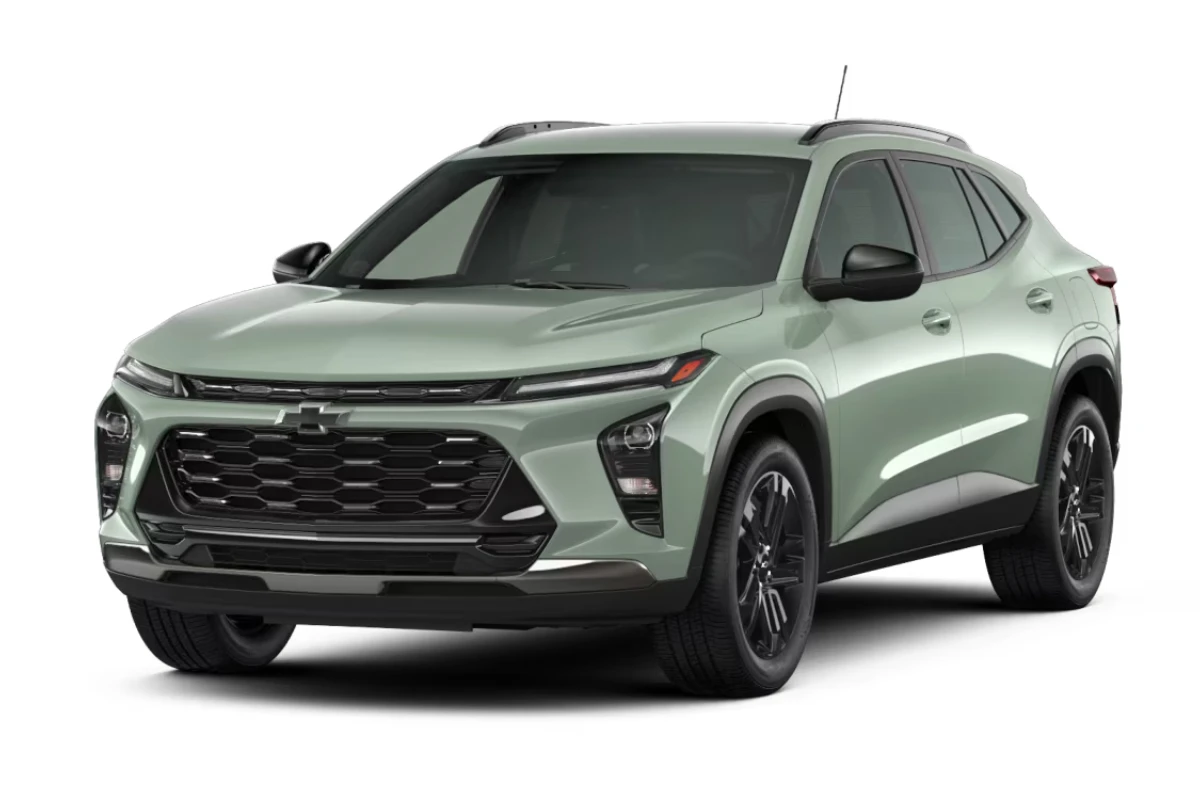
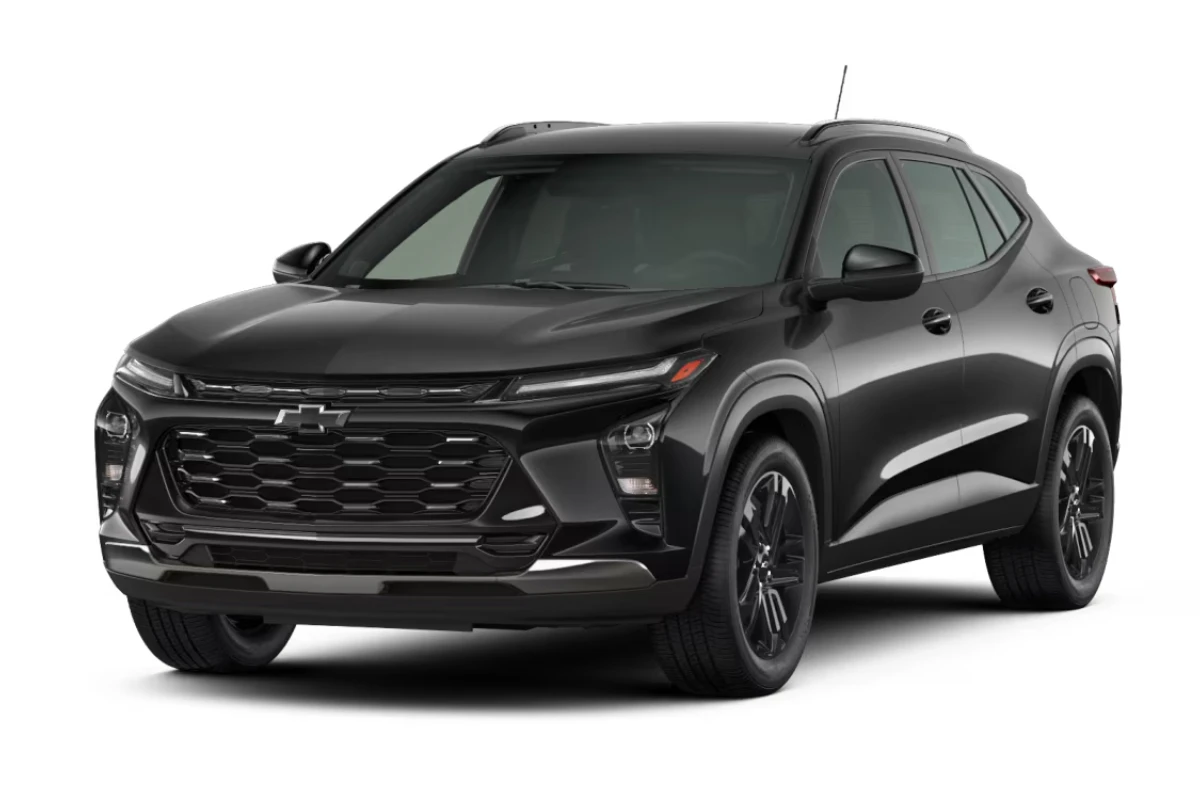




Exterior Dimensions
| Dimension | Trax LS FWD | Trax 1RS FWD | Trax LT FWD | Trax 2RS FWD | Trax ACTIV FWD |
|---|---|---|---|---|---|
| Starting MSRP | $21,795 | $23,795 | $23,995 | $25,795 | $25,795 |
| Wheelbase | 106.0 in | 106.0 in | 106.0 in | 106.0 in | 106.0 in |
| Overall Length | 178.6 in | 178.6 in | 178.6 in | 178.6 in | 178.6 in |
| Overall Width (without mirrors) | 71.8 in | 71.8 in | 71.8 in | 71.8 in | 71.8 in |
| Overall Height | 61.42 in | 61.42 in | 61.7 in | 61.7 in | 61.7 in |
| Front Track Width | 61.5 in | 61.5 in | 61.5 in | 61.5 in | 61.5 in |
| Rear Track Width | 62.13 in | 62.13 in | 62.13 in | 62.13 in | 62.13 in |
| Ground Clearance | 7.3 in | 7.3 in | 7.3 in | 7.3 in | 7.3 in |
Interior Dimensions
| Dimension | Trax LS FWD | Trax 1RS FWD | Trax LT FWD | Trax 2RS FWD | Trax ACTIV FWD |
|---|---|---|---|---|---|
| Passenger Capacity | 5 | 5 | 5 | 5 | 5 |
| Total Passenger Volume | 98.0 cu ft | 98.0 cu ft | 98.0 cu ft | 98.0 cu ft | 98.0 cu ft |
| Front Head Room | 39.6 in | 39.6 in | 39.6 in | 39.6 in | 39.6 in |
| Front Leg Room | 41.9 in | 41.9 in | 41.9 in | 41.9 in | 41.9 in |
| Front Shoulder Room | 55.7 in | 55.7 in | 55.7 in | 55.7 in | 55.7 in |
| Front Hip Room | 52.1 in | 52.1 in | 52.1 in | 52.1 in | 52.1 in |
| Second Row Head Room | 38.1 in | 38.1 in | 38.1 in | 38.1 in | 38.1 in |
| Second Row Leg Room | 38.7 in | 38.7 in | 38.7 in | 38.7 in | 38.7 in |
| Second Row Shoulder Room | 54.3 in | 54.3 in | 54.3 in | 54.3 in | 54.3 in |
| Second Row Hip Room | 45.8 in | 45.8 in | 45.8 in | 45.8 in | 45.8 in |
Cargo Dimensions
| Dimension | Trax LS FWD | Trax 1RS FWD | Trax LT FWD | Trax 2RS FWD | Trax ACTIV FWD |
|---|---|---|---|---|---|
| Cargo Space Behind Second Row | 25.6 cu ft | 25.6 cu ft | 25.6 cu ft | 25.6 cu ft | 25.6 cu ft |
| Cargo Space Behind First Row | 54.1 cu ft | 54.1 cu ft | 54.1 cu ft | 54.1 cu ft | 54.1 cu ft |
Weight & Capacity
| Dimension | Trax LS FWD | Trax 1RS FWD | Trax LT FWD | Trax 2RS FWD | Trax ACTIV FWD |
|---|---|---|---|---|---|
| Base Curb Weight | 2,983 lbs | 3,014 lbs | 2,994 lbs | 3,040 lbs | 3,036 lbs |
| GVWR | 4,145 lbs | 4,145 lbs | 4,145 lbs | 4,145 lbs | 4,145 lbs |
| Fuel Tank Capacity | 13.2 gal | 13.2 gal | 13.2 gal | 13.2 gal | 13.2 gal |
| EPA Classification | Small Sport Utility Vehicle | Small Sport Utility Vehicle | Small Sport Utility Vehicle | Small Sport Utility Vehicle | Small Sport Utility Vehicle |
Wheels & Tires
| Dimension | Trax LS FWD | Trax 1RS FWD | Trax LT FWD | Trax 2RS FWD | Trax ACTIV FWD |
|---|---|---|---|---|---|
| Front Wheel Size | 17 in Steel | 18 in Aluminum | 17 in Aluminum | 19 in Aluminum | 18 in Aluminum |
| Rear Wheel Size | 17 in Steel | 18 in Aluminum | 17 in Aluminum | 19 in Aluminum | 18 in Aluminum |
| Front Tire Size | 225/60R17 | 225/55R18 | 225/60R17 | 245/45R19 | 225/55R18 |
| Rear Tire Size | 225/60R17 | 225/55R18 | 225/60R17 | 245/45R19 | 225/55R18 |
| Spare Wheel Size | 16 in Steel | 16 in Steel | 16 in Steel | 16 in Steel | 16 in Steel |
| Spare Tire Type | Compact | Compact | Compact | Compact | Compact |
2025 Chevrolet Trax Overview:
The 2025 Chevrolet Trax stands out as a great deal in today’s automotive world, which is getting more and more pricey. With a starting price of just $21,495, this subcompact SUV packs in some impressive features, has a stylish look, and its dimensions are super practical—all without that hefty price tag that you usually see with such perks. This second-gen Trax, which got a complete makeover for 2024, is rolling into 2025 with a few minor updates that really matter, like two fresh colors: Marina Blue Metallic and Cypress Gray. Plus, there’s this cool upgrade where the 1.2L turbocharged engine can now run on E85 fuel, giving owners a bit more flexibility at the gas station.
Now, in the crowded world of subcompact SUVs, the Trax is up against some tough competitors—think Mazda CX-30, Honda HR-V, Toyota Corolla Cross, Subaru Crosstrek, Hyundai Kona, and Volkswagen Taos. Sure, a lot of these rivals have all-wheel drive options, but the Trax really shines when it comes to value. At a price point where many competitors are offering bare-bones models, the Trax comes with features like LED headlights and crucial safety tech right off the bat. Take the Corolla Cross and Mazda CX-30, for example; they often cost several thousand dollars more for models with similar features.
What’s impressive about the Trax is how it feels more substantial than its price tag would suggest. This redesigned version is quite a bit larger than the last one—11 inches longer and 2 inches wider—so you get more interior space and a more commanding presence on the road. But don’t worry, it’s still easy to maneuver in the city since it keeps a compact size that’s perfect for urban driving. And with over 7 inches of ground clearance, it’s got just the right height to tackle rough roads and minor obstacles without diving into serious off-roading.
For 2025, the Trax comes in five different trims: LS ($21,495), 1RS ($23,395), LT ($23,595), 2RS ($25,395), and ACTIV ($25,395). Unlike many cars where the top trims can be twice as expensive as the base models, here the Trax keeps it pretty reasonable with just a $4,000 gap from base to top tier. This makes the higher trims a lot more accessible for buyers who want a little extra without totally blowing their budget. The LT trim, especially, strikes a nice balance by offering a larger 11-inch infotainment screen and a digital gauge cluster for just a slight bump in price over the base model.
When you stack the Trax up against similarly sized vehicles from other brands, it really shines in terms of interior space for the price. It offers passenger and cargo room that can match or even beat a lot of competitors—even those that cost a whole lot more. With 25.6 cubic feet behind the rear seats and a whopping 54.1 cubic feet when you fold the seats down, the Trax’s cargo capacity actually beats many in its class. This practical advantage, combined with its budget-friendly starting price, makes the Trax a fantastic choice for buyers who need utility without spending a fortune.
Even with its wallet-friendly price, the Trax doesn’t feel like you’re skimping when you’re behind the wheel. It delivers a driving experience that goes beyond what you might expect, handling smoothly and providing enough power for your day-to-day driving needs. Sure, it’s not going to win any drag races against more powerful (and pricier) rivals, but it feels solid and confident on the road. And that six-speed automatic transmission gives you a more traditional driving feel compared to the CVTs you often find in this segment, which we think many drivers will really appreciate.
Engine Options and Performance Specs:
The 2025 Chevrolet Trax comes with a 1.2-liter turbocharged three-cylinder engine across all its trim levels. It manages to deliver 137 horsepower at 5,000 rpm and 162 lb-ft of torque at 2,500 rpm. Now, we know what you might be thinking—those numbers don’t jump off the page. But if you give it a shot in real-world driving, you’ll find that it performs pretty well, especially in city driving where that low-end torque kicks in. All the power goes to the front wheels via a six-speed automatic transmission, which is a bit of a drawback since there’s no all-wheel drive option available, unlike some rivals like the Subaru Crosstrek and Mazda CX-30.
When it comes to performance, the Trax can go from 0-60 mph in about 8.8 seconds. Sure, it’s not breaking any speed records these days, but it feels responsive in everyday situations—like merging onto the highway or weaving through city streets. The quarter-mile time is around 16.8 seconds at 81 mph, and the top speed? It’s electronically capped at about 115 mph. So, it’s sitting somewhere in the middle of the pack—not the fastest out there, but definitely not the slowpoke either. For comparison’s sake, its 0-60 time is in line with other naturally aspirated vehicles in this category, which usually fall between the 8 to 10-second range.
One thing to note is that there’s a bit of turbo lag when you start from a complete stop. You might feel a slight delay when you hit the accelerator before the turbo kicks in, and you get that burst of torque. This can lead to some wheelspin, especially on wet roads, showing that the front-wheel-drive layout might struggle a bit to handle all that power under certain conditions. But once you’re rolling, the power delivery smooths out, and the engine’s torque is more than adequate for passing. In tests, it managed to go from 30-50 mph in 4.8 seconds and from 50-70 mph in 6.4 seconds—pretty decent for a ride in this class.
The six-speed automatic transmission stands out, making the driving experience a lot more enjoyable compared to the continuously variable transmissions (CVTs) you’ll find in many competitors. Shifts are generally smooth and predictable, steering clear of that annoying drone you sometimes get with CVTs when you’re accelerating steadily. It may not shift super quickly, but it’s intuitive and usually keeps the engine in a good power range. If you need to pass someone, just floor it, and the transmission will downshift without a hitch, letting that turbo torque do its thing. The traditional gears also offer a more engaging feel compared to the rubbery sensation of a CVT, though it doesn’t excel at quick downshifts for those spirited turns.
As for fuel economy, it’s pretty decent—EPA estimates say 28 mpg city, 32 mpg highway, and 30 mpg combined. We ran a real-world test at a steady 75 mph and got 30 mpg, which lines up pretty well with the EPA’s highway numbers. Now, while it’s not the best in class—hybrid competitors like the Toyota Corolla Cross Hybrid can do better—it holds its own for a non-hybrid. Plus, the Trax can run on E85 ethanol fuel for 2025, which adds some flexibility, although you’ll see a drop in efficiency if you use it. The 13.2-gallon fuel tank offers a theoretical highway range of about 422 miles, but realistically, you can expect more like 390 miles before you need to fill up.
Under the hood, things are surprisingly organized, considering the compact size. The turbo 1.2L engine, which it shares with the Buick Envista, has seen some engineering upgrades for 2025. These include a new single-scroll turbocharger, updated calibration, a revised PCV tube, and a sturdier forged steel crankshaft. All these tweaks are meant to boost reliability and performance, especially since there have been some concerns about how long small displacement turbo engines can last. Accessing regular maintenance is straightforward, though the oil filter is tucked away a bit, which can make oil changes a tad trickier. Oh, and it uses a timing belt instead of a timing chain, so that’s something to keep in mind for future maintenance.
What’s really interesting for 2025 is that the engine can now run on E85 fuel, which is a mix of 85% ethanol and 15% gasoline. This could be a great option in places where E85 is easy to find and is usually cheaper than regular gas. However, the higher ethanol content does reduce fuel economy compared to straight gasoline, so the cost-benefit analysis varies depending on the price differential between the fuels in your area. This multi-fuel capability adds versatility to the Trax’s already value-oriented package.
Closer Look at the Chevrolet Trax Brakes:
The braking system —honestly, it’s impressive for a vehicle that’s not breaking the bank. With 11.8-inch ventilated discs in the front and 10.6-inch solid discs in the back, this ride gives you solid stopping power no matter the driving conditions. During our tests, we clocked a 70-0 mph stopping distance of around 180 feet. That’s actually way better than a lot of other subcompact SUVs out there. Feels more like what you’d expect from a sportier car, right? Definitely a big plus when it comes to safety.
About the brake pedal feel—it’s really something to note. It has this nice, firm response that just makes you feel secure while driving. Unlike some competitors that can feel a bit squishy or unclear, the Trax gives you solid feedback as you press down on the pedal. That initial bite? It’s quick but not too aggressive, which makes it super easy to control your braking for smooth stops, whether you’re just easing to a halt at a red light or needing to brake a bit harder in a pinch.
Now, in those emergency braking situations, the Trax stays calm and collected. The standard anti-lock braking system (ABS) does its job well, preventing the wheels from locking up and keeping the car stable. During our hard braking tests, we noticed hardly any fade, which shows that the braking system manages heat really well. This kind of consistent performance is crucial for safety, especially when you need to make a bunch of quick stops in a row. Plus, the electronic brake force distribution system does a great job of adjusting braking pressure between the front and back wheels depending on how loaded the vehicle is.
Another thing that helps the Trax’s braking performance is its relatively light weight—about 3,070 pounds. With less weight to slow down compared to bigger SUVs, it’s got an easier time stopping, which means shorter stopping distances and less wear on those brakes over time. The front-wheel-drive setup also plays a role in how it brakes. When you hit the brakes, the weight shifts forward, putting more load on the front wheels where most of the braking force is applied. This natural shift helps the larger front discs work even better.
Now, whether you go for the base LS model or the high-end ACTIV or 2RS trims, the braking hardware is the same. So, everyone gets the same solid stopping power, which is great. Just a heads up, though—tire selection does vary depending on the trim, and that can impact braking performance a little bit. The 2RS trim has those 19-inch wheels with wider tires (245/45R19), which might give you a tiny bit more grip when braking hard. But honestly, in day-to-day driving, the differences are minimal, and all models offer more than enough stopping power for typical use.
The Trax comes packed with some handy electronic braking aids as part of its standard safety features. We’re talking about an advanced electronic stability control system that can brake individual wheels to help keep control, plus a hill start assist feature to stop roll-backs on inclines. Every trim includes a forward collision alert system that gives you a heads-up about potential frontal impacts, and there’s an automatic emergency braking feature that kicks in if the driver doesn’t react in time during a possible collision.
Steering and Suspension Performance on Various Terrains:
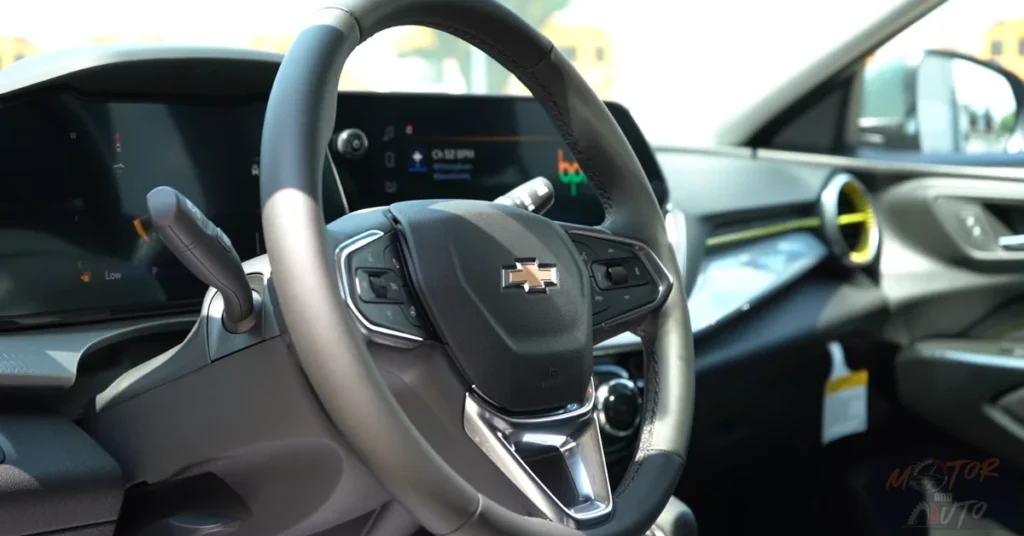
The 2025 Chevrolet Trax comes equipped with a MacPherson strut front suspension and a compound crank rear suspension. This setup hits the mark when it comes to balancing comfort, handling, and cost. It’s standard for vehicles in this class, yet it gives the Trax some surprisingly good road manners. The front struts do a solid job of controlling the wheels and soaking up impacts, while the simpler rear torsion beam design not only saves on costs but also helps maximize space inside. If you’re driving on well-kept roads, you’ll find the ride pretty comfortable, with decent isolation from those annoying little bumps.
The Trax features an electric power-assisted steering system that’s light and easy to use—perfect for navigating cramped city streets and parking lots. Sure, you might not get a ton of feedback from the road, but it gives you precise control and a reliable response when you turn the wheel. The turning radius is decent—not the best in its class, though. Some folks have mentioned they’d prefer a tighter turning circle, especially in urban environments where you’re doing a lot of U-turns and parallel parking. The steering wheel varies depending on the trim; you’ll find leather-wrapped ones in the 1RS, 2RS, and ACTIV trims, while the LS and LT trims get a standard urethane wheel.
When it comes to handling, the Trax surprisingly holds its own. It manages to maintain decent body control, especially during cornering, keeping body roll to a minimum. Honestly, it feels more like a car than many other small SUVs out there. The chassis tuning strikes a good balance between comfort and control, absorbing most road imperfections without excessive body motions. This makes the Trax feel more substantial than you might expect for its price. On a skidpad, it pulls about 0.84g of lateral grip, which is respectable and translates to confident handling during your daily drives.
Ride quality can differ a bit based on the trim you choose, mainly due to different wheel and tire combos. The base LS and mid-level LT trims come with 17-inch wheels and taller tire sidewalls, which deliver a comfy ride, especially on rougher roads. If you opt for the 1RS and ACTIV trims with 18-inch wheels, you’ll notice a slightly firmer ride, but it still remains comfortable. The 2RS, with its larger 19-inch wheels and lower-profile tires, offers the firmest ride, sacrificing some comfort for a sportier feel. If you’re dealing with bumpy roads, the 17-inch wheels on the LS and LT trims are definitely the way to go.
One thing to keep in mind across all Trax models is that sometimes the suspension can feel a bit floaty over larger bumps at highway speeds. This is common for lighter vehicles with shorter wheelbases, and while it’s noticeable, it doesn’t really affect stability or control. The Trax does a decent job of handling speed bumps and potholes, but you might feel sharper impacts in the cabin, particularly in those models with bigger wheels. Overall, the steering and suspension seem to be well-suited for what this vehicle is designed for—mostly urban and suburban driving, with a few highway trips mixed in. For a budget-friendly subcompact SUV, the Trax delivers a driving experience that is pleasantly surprising with handling and feels more upscale than you’d expect for the price.
Now, the front-wheel-drive setup helps the Trax maintain its predictable handling. When you push it hard, you might notice a tendency toward progressive understeer, which is safe and reliable for most drivers. Without the added weight and complexity of an all-wheel drive, the Trax keeps its steering responsive and offers good fuel efficiency. But, let’s be real, this means it may not handle slippery conditions as well as some all-wheel-drive competitors. If you live in an area that sees harsh winter weather, it’s something to think about. That said, if you equip it with the right winter tires, the Trax should still be capable enough for most drivers, even in snowy spots.
Tires and Traction:
Starting with the base LS trim, you’ll find 17-inch steel wheels, which have plastic covers and are wrapped in 215/60R17 all-season tires. This setup strikes a decent balance between comfort and handling—good for different weather. Then, if you bump it up to the LT trim, you get aluminum alloy wheels of the same size, which just feels a bit fancier, you know?
For the sportier trims, like the 1RS and ACTIV, they step up to 18-inch wheels with 225/55R18 all-season tires. And the top-tier 2RS? Well, it boasts the biggest wheels in the lineup—19 inches, fitted with 245/45R19 all-season tires. So yeah, as you go up in wheel size and, uh, decrease in sidewall height, you’re not just changing how it looks; it definitely impacts the driving experience too.
As for tire brands, you’ll often see Goodyear Assurance Finesse tires across many of the trims. These are mainly designed for comfort and decent wet-weather performance. When we tested them, they held up pretty well under regular driving conditions, but during those aggressive accelerations—especially when that turbocharger kicks in—things can get a bit dicey. With the Trax being front-wheel drive, some wheelspin is, let’s be honest, kind of inevitable on slick surfaces or when you take off quickly.
About ride quality – The tire choices are really key here. The taller sidewalls on those 17-inch setups (like in the LS and LT trims) do a better job absorbing bumps, making for a smoother ride on bumpy roads. But as you move to larger wheels on those higher trims, the ride can feel a bit stiffer. You really notice it in the 2RS trim with its 19-inch wheels. Sure, it looks aggressive and handles a bit better, but comfort? Not so much. If you’re leaning more toward comfort than sporty vibes, you’d probably be happier with the 17-inch or 18-inch options, especially if you deal with rough roads a lot.
About noise—tire noise is generally kept in check across the board, but as wheel sizes go up, you might notice a bit more road noise. The 17-inch wheels on LS and LT trims are the quietest, making highway trips more pleasant. But with the 18-inch and 19-inch setups, especially on rough asphalt, you might hear a bit more noise, though it’s usually not too annoying. Wind noise is actually more of an issue, particularly around the A-pillars and side mirrors at highway speeds. Thankfully, there’s an active noise cancellation system in all trims that helps to keep things reasonably quiet, which is nice for a vehicle in this price range.
Now, looking at it practically, you should definitely consider replacement costs for tires when thinking about long-term ownership. The common 17-inch and 18-inch sizes used on most trims offer a ton of replacement options at various price points, making them easier on the wallet in the long run. On the flip side, the rarer 19-inch size on the 2RS trim usually costs more and might have fewer choices out there. Plus, those lower-profile tires on the big wheels are more prone to damage from potholes and road hazards, which could lead to higher maintenance costs if you live in an area with rough roads.
If you’re driving in winter conditions, those all-season tires are fine for mild winters. But if you’re in a place where snow is a big deal, getting dedicated winter tires would be a smart move. The Trax doesn’t have an all-wheel-drive option, so having good winter tires is even more crucial for those chilly areas. The good news? The common tire sizes mean you’ll find a good selection of winter tires at reasonable prices, so you can stay safe and mobile without breaking the bank.
As for tread depth, new Trax tires usually measure between 9/32 and 10/32 of an inch—enough to give you about 40,000 to 50,000 miles of service under regular driving. With the front-wheel-drive setup, the front tires tend to wear out faster than the back ones, so regular rotation is key to stretching their lifespan. All Trax models come with tire pressure monitoring systems to help keep everything properly inflated for better fuel economy, handling, and tire life. Plus, all trims come with a temporary spare tire instead of a repair kit, which is just nice peace of mind for those unexpected flats without needing to rush to a shop.
Inside the Chevrolet Trax:
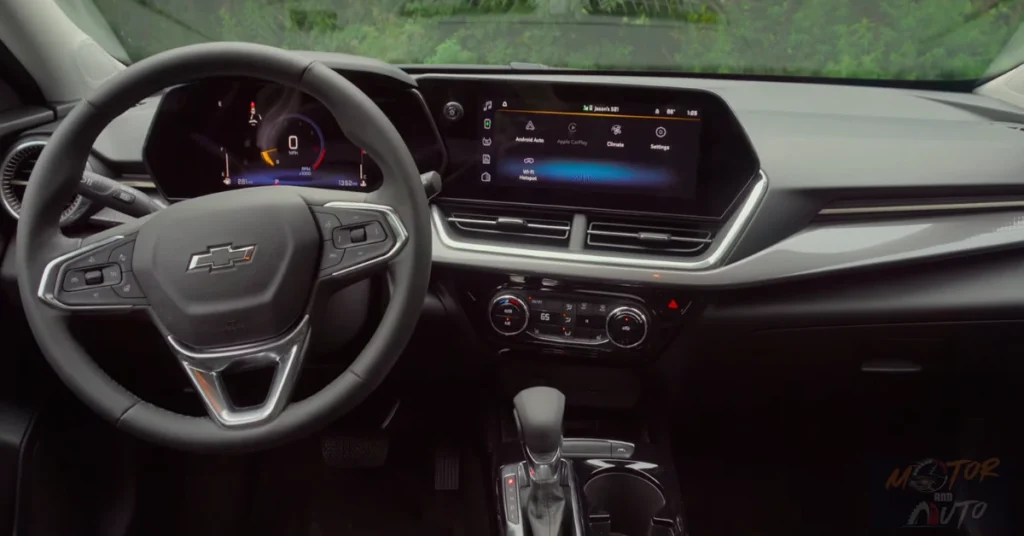
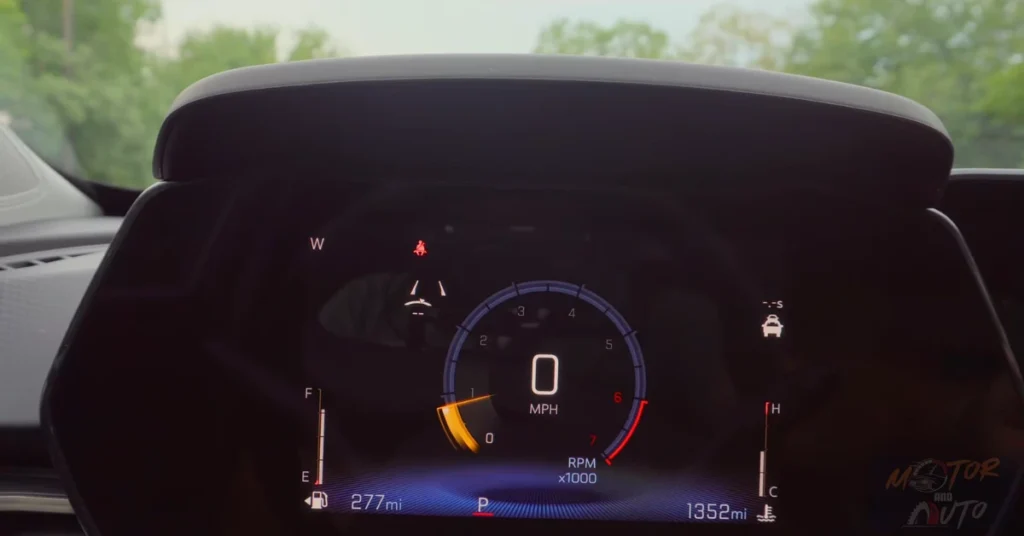

The interior of the 2025 Chevrolet Trax nails that balance between being practical and looking good, especially when you think about its wallet-friendly price. Stepping inside, you’re welcomed by a fresh, driver-centric layout—none of that cheap, bare-bones vibe you might expect from a more budget-friendly car. The dashboard has this sleek design with lines that stretch horizontally, making everything feel a bit more spacious. And those circular air vents? They’re a nod to the Camaro and add a sporty flair while breaking up the otherwise simple look. Plus, they work well for keeping the cabin nice and breezy.
When it comes to the materials, they fit right in with what you’d expect at this price point—nothing fancy, but definitely not off-puttingly cheap. Sure, hard plastics are a given in this class, but Chevrolet has done a good job mixing in different textures and finishes to keep things visually interesting. The upper dashboard, for instance, features a grained surface that looks more upscale than you’d think. Plus, the contrasting colors and materials break up the big plastic areas. Each trim has its own unique color schemes and accents—take the ACTIV trim, for example. It has eye-catching yellow stitching that adds a fun touch. The 2RS trim opts for a sportier vibe with red accents throughout, including on the seats and dashboard.
Speaking of seats, the materials change depending on which trim you go for. The base LS has basic cloth, while higher trims mix cloth with leatherette. The ACTIV and RS models sport what Chevrolet calls “Evotex” seating—essentially a synthetic leather that looks like the real deal but is more durable and easier to clean. Each model has its own unique embossing, with logos like “ACTIV” or “RS” on the seatbacks. The seat support is moderate across the board, focusing on easy in-and-out access rather than aggressive support, which is more about utility than sporty driving.
The standout feature inside? That would be the infotainment display. Depending on the trim, you’ll find different sizes. The basic LS and 1RS have an 8-inch touchscreen—already bigger than what you’d find in the last generation’s top version. But if you step up to the LT, 2RS, or ACTIV trims, you’re looking at a whopping 11-inch screen that grabs your attention in the center of the dashboard. This is paired with an 8-inch digital instrument cluster in those higher trims, ditching the old-school gauges from the lower trims. The screens are sharp and responsive, giving off a vibe usually found in pricier models. The digital gauge cluster lets you tweak what info you see, though it doesn’t have as many options as some luxury rides.
Connectivity options extend beyond smartphone integration to include a standard 4G LTE Wi-Fi hotspot capability across all trims. While this feature requires a data subscription after the initial trial period, it can provide valuable internet access for passengers, particularly on longer journeys or in areas with spotty cellular coverage. USB ports include both Type-A and Type-C connections, accommodating both newer and older devices. The higher trims add rear USB charging ports, a thoughtful inclusion for keeping passengers’ devices powered. Wireless phone charging is available as an option on upper trims, eliminating the need for cables entirely when using compatible devices. Bluetooth connectivity comes standard across the range, enabling hands-free calling and audio streaming.
When nighttime rolls around, the lighting is pretty solid, too. You’ve got backlit controls and ambient lighting that make it easier to find what you need in the dark. The white backlighting looks clean and modern after the sun goes down. However, it’s worth mentioning that the overhead lights use traditional incandescent bulbs instead of LEDs—a little cost-saving move that stands out when you compare it to fancier options. Overall, the lighting focuses more on practicality than creating a dramatic atmosphere, which fits the down-to-earth nature of the Trax.
Storage is well thought out all around the cabin, with smart solutions for everyday items. The door pockets can fit water bottles and other small stuff, while the center console has a decent-sized bin tucked under the armrest. Plus, there’s a specific spot for your phone right in front of the shifter, keeping it secure and within reach, not to mention the USB ports nearby for charging. The armrests—especially on the doors—feel a bit firm and could use a little more padding for those long trips. That’s one of the few areas where the budget focus is pretty obvious. Still, despite that small complaint, the overall interior design and execution definitely exceed what you’d expect for the price, creating a pleasant space that doesn’t constantly scream “affordable.”
Exterior Design Impressions:
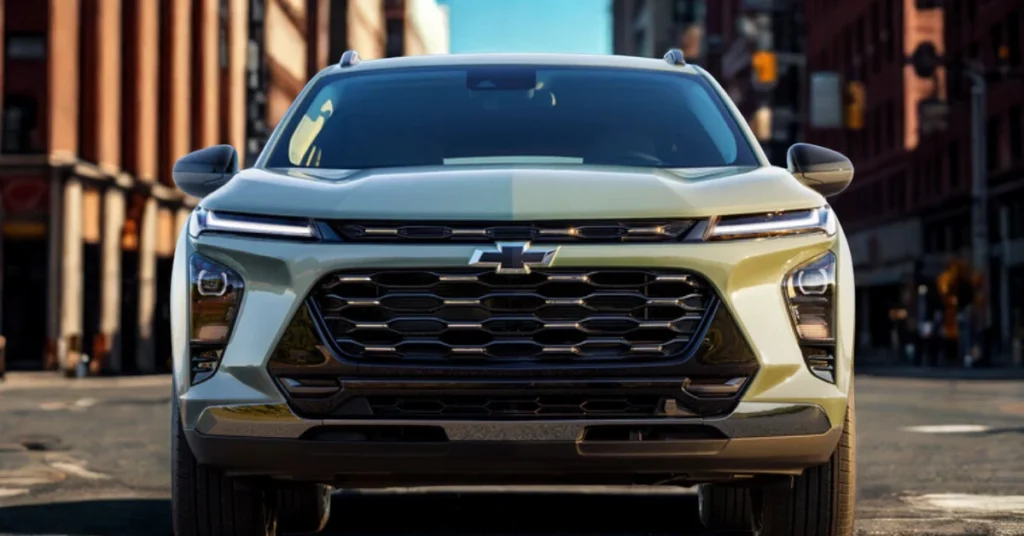
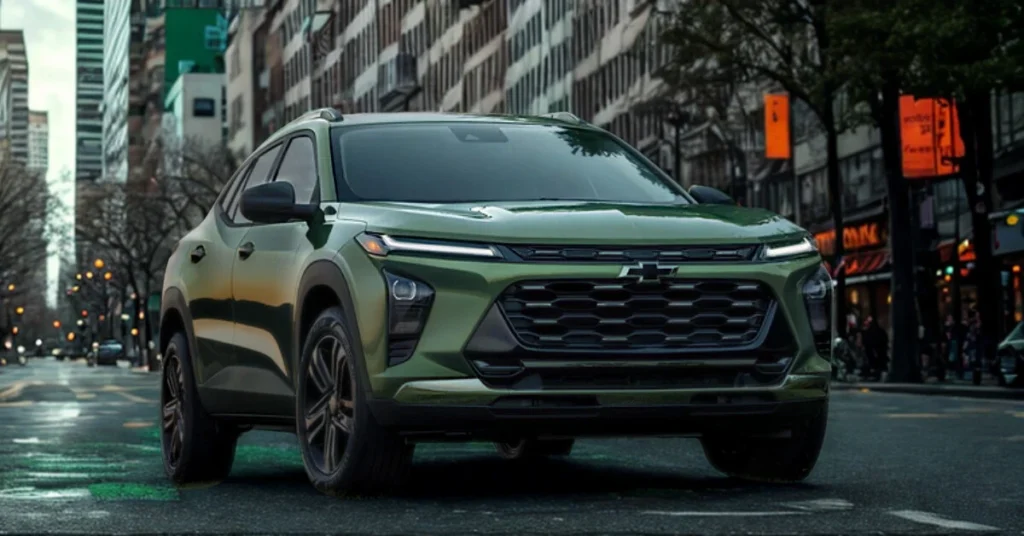
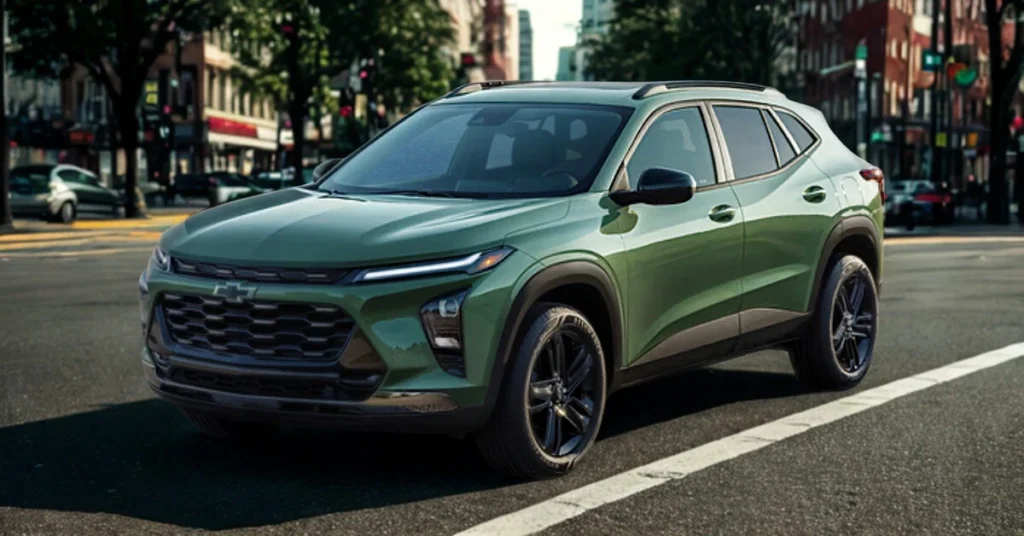
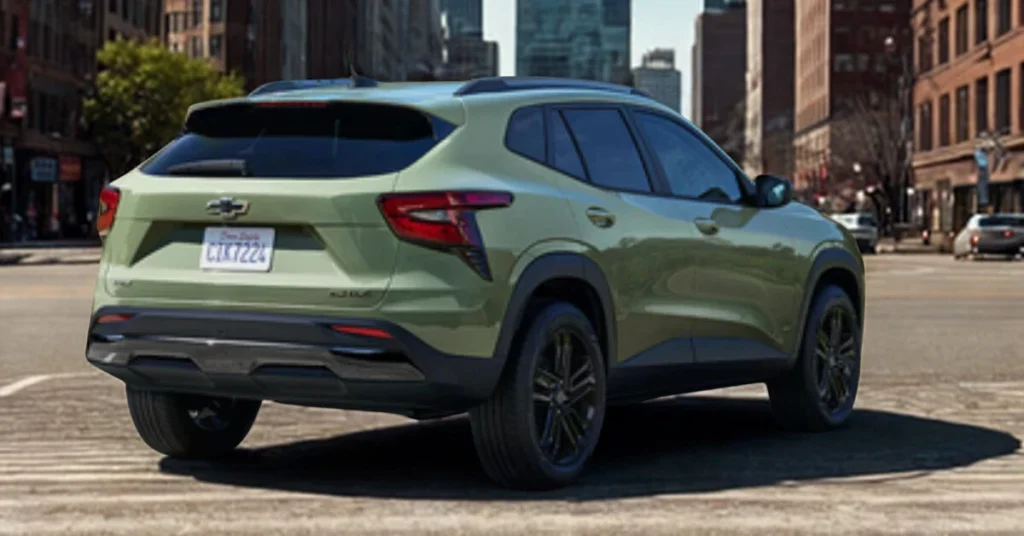
The exterior of the 2025 Chevrolet Trax is quite a shift from the previous model. It’s gone for a more sophisticated and modern look that surprises you, given that it’s an entry-level vehicle. The second-gen Trax, which kicked off in 2024 and is sticking around mostly unchanged for 2025, sports a bolder design with sharper lines, strong surfaces, and a more contemporary feel. You can really see the size difference; this new version is about 11 inches longer and 2 inches wider than the old one. This growth gives the Trax a beefier presence on the road and makes the inside feel roomier too. It’s transformed from that somewhat awkward, bubble-like shape into a nicely proportioned small SUV that’s genuinely attractive.
Up front, all Trax models come with standard LED headlights that are nicely tucked into sleek, horizontal units stretching towards the fenders. This design creates a wider appearance. The daytime running lights have a unique look, especially on higher trims, where they look more polished. Each trim level has its own grille design, making it easy to tell the models apart. For instance, the ACTIV trim shows off a rugged black grille with shiny titanium chrome accents, while the RS trims go for a sportier black mesh style. The lower bumper features either functional cooling vents or stylish elements that enhance the front’s look, with silver or black trim depending on the model. And let’s not forget that sculpted hood with bold character lines flowing into the A-pillars—definitely adds some visual strength up front.
Looking at it from the side, you can see it has a more dynamic stance than before. The hood is longer, the windshield is more steeply raked, and the overall greenhouse proportions are better. The beltline rises gently towards the back, giving a sense of motion even when the car’s parked. There’s black plastic cladding around the wheel arches and rocker panels that adds a rugged vibe while helping protect against minor dings and stone chips. All trims feature black window surrounds, which give it a sleek and modern feel. Plus, the roof rails, standard on LT trims and above, add both utility and that classic SUV look. Wheel sizes and designs vary too, from basic 17-inch steel wheels on the LS to snazzier 19-inch alloys on the 2RS, each adding its own flair to the trim.
At the back, the tailgate has a clean, simple design with LED taillights across the board. However, they still use regular bulbs for reverse lights and turn signals. A practical feature? The rear window comes with a standard wiper, which is nice since some vehicles in this category skip that. There’s also a roof-mounted spoiler that adds a sporty touch and aids in aerodynamics, along with a faux skid plate on the lower bumper that helps balance the overall look. The exhaust is tucked away, keeping things tidy and clean, but we noted that the traditional mast antenna feels a bit old-school compared to the modern shark fin ones seen on other vehicles.
For 2025, Chevrolet has rolled out two fresh exterior colors: Cypress Gray, which has this cool gray-green vibe, and Marina Blue Metallic, a striking medium blue. They join the existing palette of whites, blacks, silvers, reds, and grays. Marina Blue has received a ton of love for how well it showcases the Trax’s design lines. Color choices do vary by trim, with some special finishes reserved for the higher-end models. The ACTIV and RS trims also have extra styling details like black mirror caps and unique wheel designs that set them apart from the LS and LT trims.
Comfort and Convenience Features
The 2025 Chevrolet Trax focuses on comfort and convenience, making everyday life just a bit easier. As you move up through the different trim levels, you’ll notice that the features get better and better. Even the base LS model comes with some pretty essential stuff like manual climate control for one zone, power windows and locks, a tilt-and-telescope steering wheel, plus some handy 12-volt power outlets. When you step up to the LT trim, you get automatic climate control that keeps things comfy without needing to fiddle with it all the time. It does a decent job most of the time, but on really hot days, it might not cool the cabin as fast as you’d like. That’s more about the engine and air conditioning compressor being on the smaller side rather than any issue with the climate control tech itself.
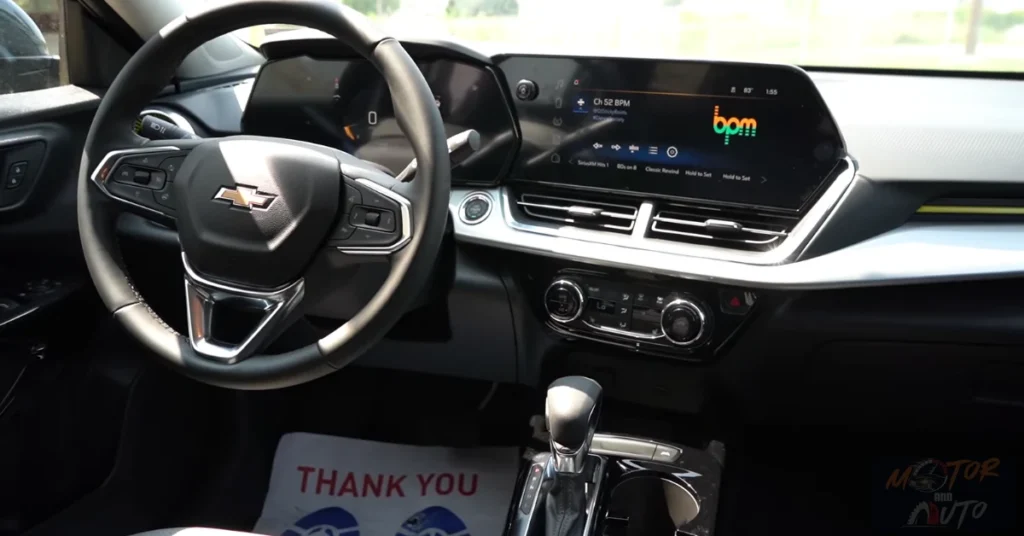
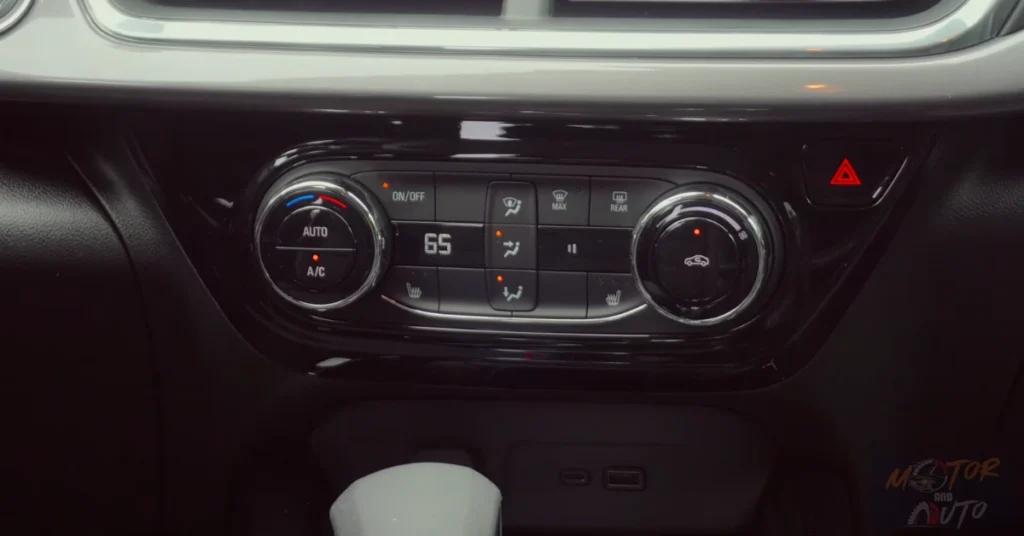
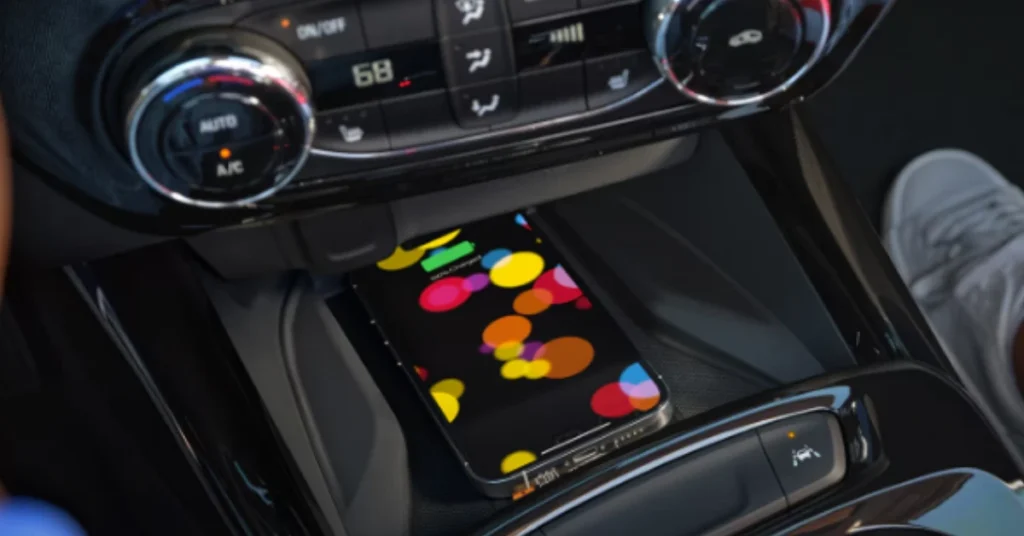

When it comes to seating comfort, it varies depending on which trim you choose. The LS and 1RS trims have cloth seats that you can adjust manually. They’re fine for short trips, but if you’re on the road for a while, you might start to feel a bit worn out. The LT steps it up with more adjustable features and better materials, and the ACTIV trim offers an 8-way power-adjustable driver’s seat with 2-way lumbar support – a real game-changer for finding that perfect driving position. It’s a bit odd, though, that the 2RS trim, which is one of the most expensive, goes back to manual seat adjustments, focusing more on sporty looks than comfort. If you’re in colder climates, you’ll appreciate the standard heated front seats and heated steering wheel in the 1RS, 2RS, and ACTIV trims, but none of the trims come with ventilated or cooled seats – which isn’t too surprising in this price range.
As for storage, the cabin is well thought-out for everyday stuff. The center console has a bin under the armrest that’s a decent size, although it’s not super deep. Right in front of the shifter, there’s a spot for your phone along with USB charging ports, which is great for keeping your devices charged and secure. The door pockets are good for water bottles and smaller items, and there’s even a little shelf on the passenger side of the dashboard that’s perfect for sunglasses. The glove compartment is spacious, so it can hold more than just the owner’s manual and documents. Some of our reviewers mentioned that the armrests on the doors, especially in lower trims, feel a bit hard due to not much padding, which could be a slight issue on longer drives.
On the tech side, the Trax is equipped with features that most people will find handy. All models come with either an 8-inch or an 11-inch color touchscreen, depending on the trim, and they support wireless Apple CarPlay and Android Auto. That’s a nice touch since many competitors still require you to plug in. The basic audio system in the LS and 1RS trims is okay but nothing to write home about; however, the six-speaker setup in the higher trims does provide better sound, though it’s not exactly top-of-the-line. If you’re looking for a wireless charging pad, that’s an option on the higher trims, which is pretty convenient. Plus, you get USB-A and USB-C ports upfront and additional charging ports for passengers in the back on the LT, 2RS, and ACTIV trims – a thoughtful addition that you don’t always see in this price range.
When you’re sitting in the driver’s seat, visibility is generally good, thanks to a low dashboard and reasonably sized windows all around. The A-pillars are a bit thick, which is common in today’s vehicles built to meet strict safety standards, so you might find a few blind spots at certain angles. The standard backup camera helps with the rear visibility, which can be a bit limited due to the rising beltline and smaller rear window. If you go for the higher trims, you’ll also get rear park assist sensors to help with maneuvering at low speeds. However, none of the trims have a surround-view camera system, which is typical at this price point. The rearview mirror is manually adjustable and has a day/night toggle, but it doesn’t have auto-dimming, even in the higher trims – which is one of the few features you might miss.
Noise isolation represents a significant improvement over the previous generation Trax, though it still reveals the vehicle’s budget-conscious development in some areas. Wind noise is generally well-controlled at highway speeds, with only modest intrusion around the side mirrors and A-pillars. Tire noise varies by wheel and tire package, with the 17-inch wheel setups on LS and LT trims offering the quietest ride due to their taller sidewalls. Road noise becomes more prominent as wheel sizes increase, with the 19-inch wheels on the 2RS generating the most tire roar. Engine noise is noticeable under acceleration, with the three-cylinder’s distinctive sound character evident, though it settles to a distant hum at cruising speeds. Active noise cancellation, standard across all trims, helps mitigate some ambient noise, resulting in a reasonably quiet cabin for a vehicle in this price range. While not whisper-quiet like a luxury vehicle, the overall noise levels are entirely acceptable for daily driving and shouldn’t prove fatiguing on longer journeys.
Voice recognition capabilities are present but somewhat basic compared to the sophisticated systems found in premium vehicles. The standard system handles fundamental commands for phone calls, audio control, and some vehicle functions but lacks the conversational capabilities of advanced virtual assistants. However, when connected to Apple CarPlay or Android Auto, users can access Siri or Google Assistant for more comprehensive voice control. This represents a pragmatic approach that leverages the superior capabilities of smartphone-based voice systems rather than developing a proprietary solution, allowing Chevrolet to focus resources on other areas while still providing functional voice control.
Safety and Security:
Right off the bat, you get this solid package called Chevy Safety Assist. It’s got all sorts of driver assistance technologies like forward collision alert with automatic emergency braking, pedestrian detection, lane departure warning, and lane keep assist, plus automatic high beams. Honestly, this set of standard safety features outshines what many other cars offer in the same price range. Even the entry-level LS trim comes with these accident-avoiding capabilities. That automatic emergency braking? It’s a real lifesaver. If the driver doesn’t react in time to a potential crash, it can hit the brakes on its own, which might lessen the impact or even prevent an accident altogether.
When it comes to airbags, the Trax doesn’t skimp. You get dual-stage frontal airbags, side-impact airbags for those in the front, and side curtain airbags that stretch across both rows to protect passengers during side collisions. All the seats come with three-point seatbelts, and the front ones even have pretensioners and load limiters to keep everyone secure during impacts. Plus, the rear seats are equipped with LATCH hardware, making it safe and easy to install child safety seats. Those anchor points? Clearly marked and given a thumbs-up in independent evaluations for ease of use.
The National Highway Traffic Safety Administration (NHTSA) gave the Trax a respectable 4-star overall safety rating. It scored 4 stars for frontal crash protection and 5 stars for side crash protection, with another 4 stars for rollover resistance. So, while it’s not at the very top of the class in every area, it shows that Chevrolet has taken safety seriously, even with a budget-friendly price tag. This focus on crash protection is a huge plus, especially for families or anyone who values safety when shopping for a car.
Now, if you’re looking for even more safety features, you might want to check out the optional Driver Confidence Package, which you can get on several trims. This package brings in some pretty neat driver assistance technologies. Think lane change alert with side blind zone alert—this one keeps an eye on adjacent lanes and warns you visually if there’s a vehicle in your blind spot. There’s also a rear cross-traffic alert that kicks in when you’re backing up, spotting cars coming from the sides and alerting you to avoid collisions. And how about adaptive cruise control? It automatically adjusts your speed to maintain a safe distance from the car in front, which is a real boon for those long highway drives. The package also includes rear park assist, which beeps when you’re getting too close to obstacles while reversing. Sure, it would be great if these features were standard on all trims, but having them as an affordable option is still a fair deal at this price point.
On the security front, every Trax model comes with standard remote keyless entry, using a traditional key fob that has lock, unlock, and panic buttons. You also get remote start on all trims except for the base LS, letting you start the engine from outside—perfect for preheating or cooling the cabin during extreme weather. This is a big deal since many competitors either charge extra for this feature or make you subscribe to services to use it. The key fob is simple and durable, but it doesn’t have that fancy proximity entry feature found in some other cars, which automatically unlocks the doors as you approach. If you opt for higher trims, you’ll get a push-button start, so you don’t even have to fumble with a key. Plus, all Trax models include an engine immobilizer system, which prevents the car from starting without the right key, helping to keep it safe from thieves.
One super-innovative feature is the Teen Driver mode, which is especially handy for families with new drivers. Parents can activate a special driving mode linked to a key fob that turns on all safety systems and can limit certain vehicle functions. It even provides a “report card” on driving habits—like maximum speed, distance driven, and how often safety features were activated. This info can lead to some great conversations about safe driving and gives parents a glimpse into how their teens are handling the wheel. While this feature isn’t exclusive to the Trax (you’ll find it in many GM vehicles), it definitely adds extra value for families with young drivers, and guess what? It doesn’t cost anything extra!
The OnStar connected services platform comes with basic functionality across all Trax models, with subscription options for expanded capabilities. The standard SOS emergency function can automatically connect occupants with emergency services after a detected collision or when manually activated. This automatic crash response can summon help even if occupants are unable to do so themselves, potentially reducing emergency response times in serious accidents. Additional subscription-based services include stolen vehicle assistance with remote tracking capabilities, turn-by-turn navigation, and various remote features accessible through a smartphone app. While the ongoing subscription costs must be factored into long-term ownership expenses, the core safety functionality provides valuable protection in emergency situations.
On the Road with the Chevrolet Trax:
When you get behind the wheel of the 2025 Chevrolet Trax, you’re in for a surprisingly good ride for the money. It combines comfort, reliability, and decent performance that’s just right for everyday driving. The seating position is definitely more car-like compared to the older model, sitting lower to give you a better feel for the road and a good sense of control. Plus, the steering wheel adjusts with tilt and telescoping options on all trims, making it easy for drivers of all shapes and sizes to find their sweet spot. Visibility is pretty good overall, especially to the front and sides, thanks to the well-sized windows and slim A-pillars. The rear view can be a bit tricky with the higher beltline and smaller back window, but hey, the standard backup camera definitely helps out when you’re trying to park.
Now, let’s talk about the engine. The 1.2-liter turbocharged three-cylinder engine offers just enough power for day-to-day driving. Sure, the 0-60 mph time of around 8.8 seconds might not win over speed junkies, but it’s perfectly fine for merging onto highways and keeping up with traffic. There’s a bit of turbo lag when you take off from a complete stop—like, you feel a little hesitation before it gives you that nice torque kick. You’ll get used to it, especially when you need to speed up quickly, like when you’re turning left against oncoming traffic. Once you’re moving, the power delivery feels smoother and more predictable. And with 162 lb-ft of torque, it’s got enough oomph for passing when you need it. The six-speed automatic transmission shifts nicely during regular driving, though it’s not the fastest when you hit the gas suddenly. It doesn’t come with selectable drive modes to spice things up, but that fits the Trax’s vibe as a solid daily driver rather than a sporty ride.
Handling is pretty decent too, striking a good balance between comfort and control. The Trax stays stable through turns, feeling more like a car than your typical small SUV. You can push it a bit without losing your cool, and on the skidpad, it manages about 0.84g of lateral grip, which is solid for everyday driving. The front-wheel-drive setup leads to a gentle understeer as you approach its limits, which is a safe and predictable feature for most folks. The steering is light and direct, making it easy to navigate through tight city streets and parking lots. Sure, it might not give you a ton of feedback about the road, but it provides reliable directional control. Some people might want a bit heavier steering on the highway, but, honestly, the light touch is a plus in the city.
Ride comfort does shift a bit depending on the trim you choose, thanks to different wheel and tire setups. The LS and LT trims come with 17-inch wheels and taller tire walls, which means they soak up bumps the best. The 1RS and ACTIV trims, with their 18-inch wheels, find a nice middle ground of comfort and style, while the 2RS trim with 19-inch wheels offers the firmest ride in the group. On smooth roads, all versions feel comfy and do a nice job of isolating you from little bumps. But over bigger potholes and rough surfaces, you might notice the suspension struggles a bit, especially on the models with larger wheels. Still, it’s not enough to complain about. A little bit of float is noticeable on larger dips at highway speeds, which is typical for lighter vehicles with shorter wheelbases, but it doesn’t mess with stability or control.
Now, let’s get to braking. This is where the Trax really shines. The pedal feels firm and linear, which gives you confidence with consistent feedback as you press down. The initial bite is quick but not too harsh, making it easy to control your stops smoothly during daily driving. In emergency situations, the Trax holds its ground, staying stable with minimal nosedive. During testing, it managed to stop from 70-0 mph in about 180 feet, which is impressive and beats a lot of competitors in its class. This strong braking performance really adds to the overall driving experience, letting you feel in control whether you’re easing to a stop at a light or needing to brake more urgently.
As for noise, vibration, and harshness (NVH) control, it’s pretty good for the price, though it won’t compete with higher-end vehicles. Wind noise is mostly kept in check at highway speeds, with just a bit of intrusion around the mirrors and A-pillars. Tire noise can vary depending on the wheel and tire package you choose, becoming more noticeable with larger wheels and lower-profile tires. Engine noise is there when you accelerate, with that distinctive three-cylinder sound, but it settles down to a quiet hum when cruising. The active noise cancellation system, standard across all trims, helps mitigate some ambient noise, resulting in a reasonably quiet cabin for a vehicle in this class.
Chevrolet Trax Rear Seat Comfort
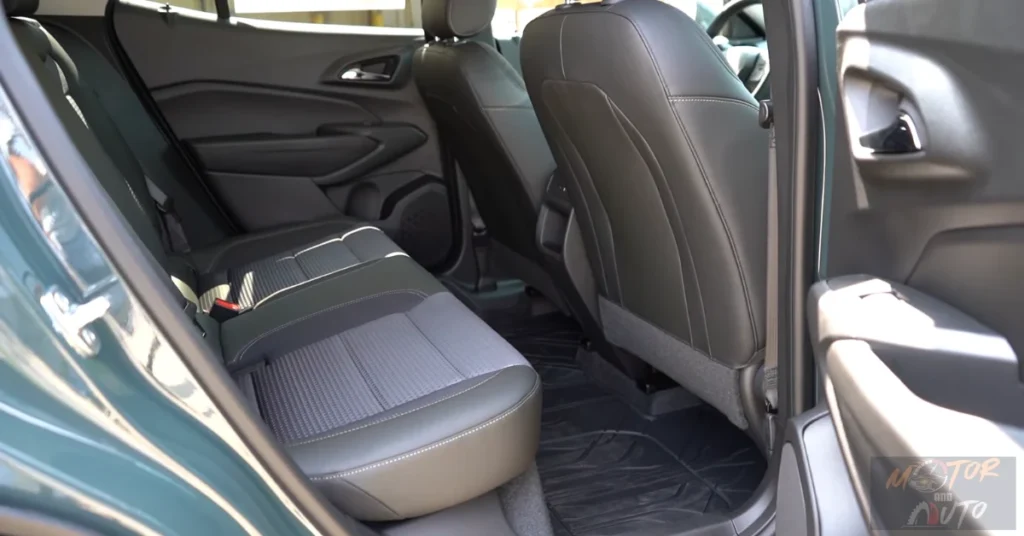
The rear seating area of the 2025 Chevrolet Trax is surprisingly roomy and comfy for a subcompact SUV, thanks to the extra space in this generation. With a generous 38.7 inches of legroom, adults can sit comfortably—even behind others of average height—without feeling squished. It’s kind of a big deal when you compare it to the last generation, and it stacks up well against competitors that may cost a whole lot more. During our tests, we found that a 6-foot-tall passenger had no trouble sitting behind a driver of the same height—impressive for this kind of vehicle.
About that bench seat—it has a 60/40 split design, which gives you the flexibility to adjust between seating and cargo as you need. The seatbacks recline at a nice angle, so you’re not stuck in that stiff, upright position that some smaller cars force you into. The cushioning is a decent mix of support and comfort, although it’s a bit on the firmer side compared to more expensive models. Higher trims come with Evotex synthetic leather, which not only looks nicer but is also more durable than the cloth in the lower trims. Plus, it’s easier to clean—definitely a win for families with kids or pets. That said, it’s worth noting that none of the trims come with a center armrest for rear passengers, which could make those long drives feel a tad less comfy.
Getting in and out of the Trax is made easier by the reasonably sized doors and its slightly elevated ride height, which makes sliding in and out a breeze. The doors swing open wide—though maybe not as wide as some bigger vehicles. Once you’re inside, there’s good headroom all around, so even taller folks are unlikely to bump their heads on the ceiling. The rear floor is completely flat, a feature that comes from the Trax’s front-wheel drive setup, getting rid of that annoying center hump found in all-wheel-drive cars. This flat floor does make it easier for a third adult to sit in the middle, although that spot is still a bit less comfy than the side seats due to the firmer padding and narrower width.
As for amenities, they differ from trim to trim. The base LS trim is pretty basic, but the higher trims add more comforts. Starting with the LT trim, rear passengers get USB charging ports—one USB-A and one USB-C—which is a nice touch that many competitors overlook. These ports are conveniently located at the back of the center console for easy access. However, it’s a bummer that none of the trims come with rear air vents; instead, everyone has to rely on the front system to cool or heat the cabin. This could be a bit of an issue when the weather gets extreme, especially for passengers stuck in the back corners, farthest away from the front vents. It’s one of those areas where you can see the Trax was made with a budget in mind.
On the visibility front, rear passengers generally have a good view—thanks to reasonably sized windows that create a nice, open feel instead of that cramped vibe you sometimes get in smaller cars. Sure, the rising beltline does lower the window height toward the back, but it doesn’t hurt the view much. Those quarter windows behind the C-pillars let in more light and help reduce blind spots for the driver. The rear headrests are adjustable, which means you can set them at the right height for comfort and safety. And when they’re not needed, you can lower them to help the driver see better out the back.
Now, when it comes to storage for rear passengers, options are a bit limited. Each door has a pocket for small items like phones or travel-sized bottles, but honestly, they’re not as deep as the front ones. There’s a small cubby between the front seats with USB ports for charging, which is handy for stashing connected devices. Higher trims do have a map pocket on the back of the passenger seat, but oddly, there’s none on the driver’s seat. No center console extends into the back, and like we mentioned earlier, there’s no fold-down armrest with cupholders. So, for drinks, passengers will have to make do with the door pockets or the front center console, which can be a minor hassle on longer trips.
Despite these few shortcomings, the roomy and comfortable rear seating area is definitely one of the standout features of the Trax—especially considering its budget-friendly price and subcompact status.
Bootspace and Practicality
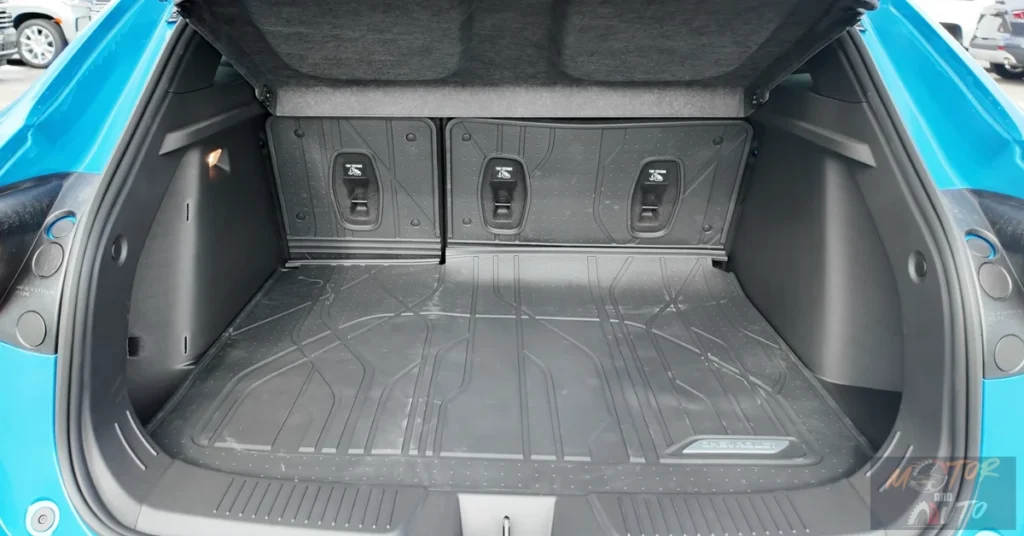
The cargo area stands out in the subcompact SUV market. It’s got some smart design features that make it super practical for daily use. When all the seats are up, you’re looking at 25.6 cubic feet of cargo room. That’s actually more than a lot of its competitors and gets pretty close to what you’d find in some larger compact SUVs. This roomy space is thanks to the new version being bigger than the old one. we mean, it’s got an extra 11 inches in length, and that definitely translates into more cargo capacity. Plus, the load floor is at a good height, making it easy to load and unload stuff, and the wide tailgate opening means you won’t struggle to fit larger items in there.
Getting into the cargo area is pretty simple. All Trax models come with a manual liftgate instead of a power one. So, you’ll be pulling it open with a regular handle, which takes a bit of effort to raise all the way. But once you do, it opens high enough that most adults can avoid bumping their heads while loading things. If you go for the LT trim or higher, you’ll get a cargo cover that adds a nice touch of privacy and keeps your stuff secure. It’s easily removable when you need to haul taller items, and it stores away nicely when you don’t need it. And those 60/40 split rear seats? They fold almost flat, giving you a max capacity of 54.1 cubic feet—plenty of room for bikes, furniture, or a big grocery haul.
Now, let’s talk about some practical features that really amp up its usability. There are tie-down anchors to keep everything secure during trips, so no more worrying about items sliding around and getting damaged. You’ve also got side storage pockets for smaller things that could roll around and get lost. The load floor has a removable panel that reveals extra hidden storage underneath. This is great for hiding valuables or keeping things organized. And guess what? The spare tire is actually a proper temporary spare, not just a repair kit. This is a big plus over some competitors that have done away with spare tires to cut down on weight and cost.
When it comes to storage flexibility, the cabin is well thought out. Sure, the front passenger seat doesn’t fold flat like some other brands (you know, like certain Jeep or Honda models), which would have been handy for carrying really long stuff. But the 60/40 split rear seats still give you decent flexibility for juggling both passengers and cargo. When you fold those rear seats down, you get a nearly flat load floor with hardly any gaps, making it easier to load longer items. The seatbacks fold down easily with some accessible release levers, though it does take two steps—first folding the seat cushion and then lowering the seatback—unlike some competitors that have a one-step process.
As for lighting in the cargo area, there’s a single incandescent bulb, which does a decent job of lighting things up when you’re loading or unloading in the dark. Sure, LED lights would be better for brightness and energy savings, but this one gets the job done. There’s no power outlet in the cargo area, which could be a bit annoying if you wanted to charge devices while tailgating or camping. That said, if you’re in the LT trim or above, the rear USB ports might come in handy for powering up some gadgets when the second row is partially folded down.
For those keeping score, the Trax’s 25.6 cubic feet of cargo space with the seats up actually beats the Honda HR-V (24.4 cubic feet) and the Kia Seltos (26.6 cubic feet), while getting close to the larger Toyota RAV4 (37.6 cubic feet). This spaciousness means the Trax can easily handle grocery trips, airport runs with luggage, or weekend adventures packed with gear for the whole family. With solid capacity, easy access, and smart details, the cargo area really shines for the Trax, especially when you consider its budget-friendly price. This kind of practicality makes it a great choice for anyone looking for versatility in their everyday vehicle without having to step up to a bigger, pricier SUV.
The Chevrolet Trax Value Proposition: Is It Worth the Price?
The 2025 Chevrolet Trax stands out as a great deal in the car market today, especially when we see average prices for new cars soaring over $40,000. It kicks off at a very reasonable $21,495 for the base LS model and goes up to $25,395 for the fully-loaded ACTIV or 2RS trims. You get a lot of features and capabilities for that price, making it easier for more people to own a new car. With this pricing, the Trax is among the most affordable SUVs out there, offering similar or even better features, tech, and interior space compared to many competitors. And that small $4,000 gap between the entry-level and top trims? It’s a smart move, letting buyers access premium features without the steep jumps in price that we see in a lot of other models.
Now, if you’re looking into the value of the Trax, you’ve got to look at what’s standard across all the trims. Every single model comes with LED headlights, the Chevy Safety Assist tech (which includes stuff like automatic emergency braking and lane keep assist), a touchscreen infotainment system, and a solid mix of comfort and convenience features. So, even the base LS model feels complete and modern, not just like some stripped-down version. As you move up the trims, you get more luxury, tech, and style, but the core practicality of the vehicle remains – which is a thoughtful design choice that respects budget-minded buyers while still giving valuable upgrades to those who can spend a bit more.
When you stack the Trax against key competitors, its value becomes even clearer. Models like the Honda HR-V, Toyota Corolla Cross, Mazda CX-30, and Subaru Crosstrek usually cost several thousand dollars more for similarly equipped versions. Sure, the Mazda and Subaru have all-wheel drive as standard, which helps explain their higher prices, but overall, the Trax holds its own in features, space, and driving dynamics. What’s impressive is how much room you get inside the Trax compared to these rivals; in many cases, it offers more passenger and cargo space than cars that cost a lot more. This efficient use of space means buyers don’t have to sacrifice practicality to enjoy the Trax’s affordable pricing, which makes it a solid choice for small families or anyone with an active lifestyle.
Also, think about long-term ownership when weighing the Trax’s value. With fuel economy ratings of 28 mpg in the city and 32 mpg on the highway, it’s competitive, though not the best in class. The option to use E85 fuel in the 2025 models could be a nice bonus, depending on what’s available where you live. As for Chevy’s warranty – it’s 3 years/36,000 miles bumper-to-bumper and 5 years/60,000 miles on the powertrain. That’s pretty standard, nothing to write home about, but they do throw in the first maintenance visit for free, which is a nice little perk. Reliability is kind of a question mark, especially concerning the long-term durability of the turbocharged three-cylinder engine, but Chevrolet has really improved its quality lately.
Resale value is another thing to consider when looking at the overall value. The last generation of the Trax struggled with depreciation, but this new model looks like it’s set up for better resale performance. With its appealing design, competitive features, and strong value, it should hold its value better. Still, it might not quite match the resale success of some Japanese competitors like the Honda HR-V or Toyota Corolla Cross. But hey, the lower initial price helps balance that out, which means you could end up with a similar or even better total cost of ownership over time.
If you’re thinking about the 2025 Trax, keep in mind how the trim you choose really affects the value. The base LS at $21,495 is an amazing deal for anyone wanting simple, practical transportation with modern safety features and decent tech. Then there’s the LT at $23,595, which hits the sweet spot for many buyers, adding that impressive 11-inch infotainment screen, an 8-inch digital gauge cluster, and other useful upgrades for a reasonable extra cost. The ACTIV trim at $25,395 has the most features, including a power driver’s seat, while the similarly priced 2RS focuses more on sporty looks at the cost of some comfort features. For most buyers keeping an eye on value, the LT trim with a few option packages seems to be the best mix of features and affordability, though the base LS is still a fantastic option for under $22,000.
In the final analysis, the 2025 Chevrolet Trax stands as one of the strongest value propositions in today’s automotive market. It delivers a compelling combination of style, features, and practicality at a price point that makes new car ownership accessible to a wide range of consumers. While it’s not without compromises – the lack of all-wheel drive availability, modest power, and some hard plastics in the interior – these are reasonable trade-offs given the price point. What’s remarkable is how few compromises feel significant during daily use, with the Trax providing a thoroughly modern, comfortable, and capable driving experience despite its budget-friendly positioning. For buyers seeking maximum value in a practical, stylish package, the 2025 Trax deserves serious consideration.


